- Spirit 1.0 Plus
- Spirit 1.0 Evo
- Pod Drive Evo
- E-Series Battery
- G102-100 Battery
- Find a Dealer
- Have a Dealer Contact Me
- Product Registration
- Support Center: FAQ & Guide
- Video Tutorial
- Download Center
- Performance Bulletins

Electric Sailboat Motor: Range, Cost, Best Kits for Conversion
Today, owning a completely green sailboat has been made possible with electric sailboat motors.
Imagine cruising with the silence of an electric sailboat motor and the ease of use with a simple press on the start button. What’s better is there are no exhaust fumes at all with significantly less maintenance.
It’s so appealing that a lot of sailing liveaboards have made their electric sailboat motor conversion.
However, some sailors are still on the fence, worrying about the range and price of the electric sailboat motor.
If you are one of them, you are in the right place!
This post will guide you through every aspect you need to know about electric sailboat motors to help you make an informed decision.
Besides, you will get professional insights on how to make the electric sailboat motor conversion for your own boat and learn the best electric sailboat motors (with honest reviews).
Table of contents:
- Electric Sailboat Motors: Confusion Explained
Electric Sailboat Motor or Combustion Motor
- Electric Yacht Motor Conversion: Two Solutions
- How to Size an Electric Sailboat Motor
Best Electric Sailboat Motors (with Reviews)
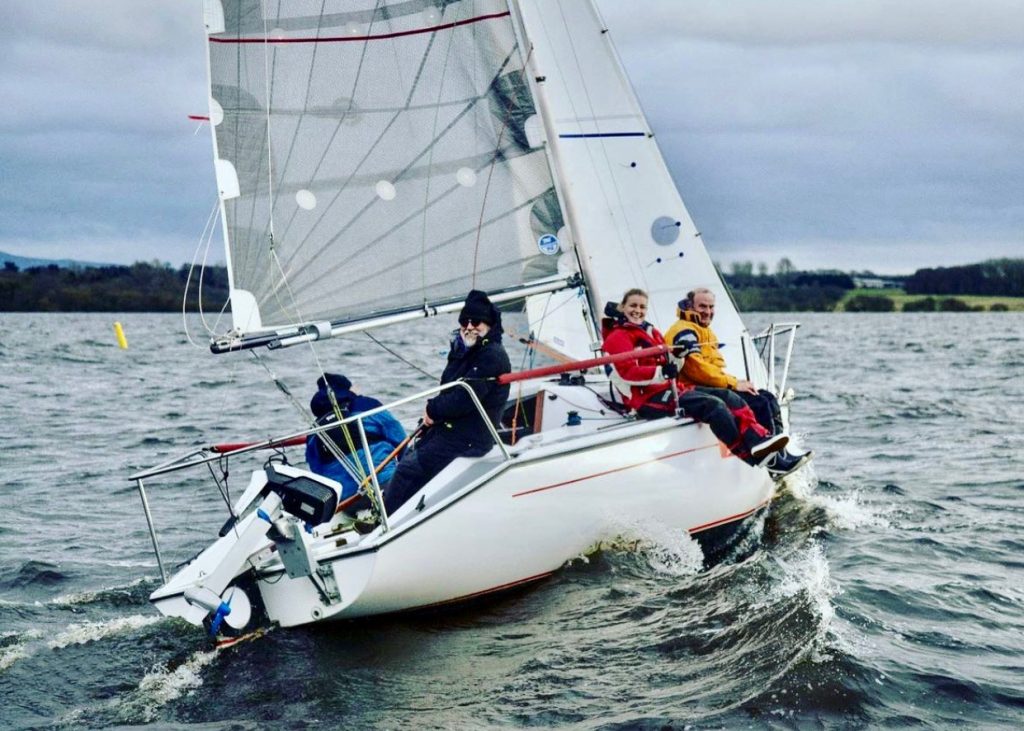
Electric Sailboat Motor: Confusion Explained
Can you go cruising with an electric sailboat motor? Can you put an electric motor on a sailboat? Are there any limitations?
Whether electric sailboat motors are a good fit for your boat is not a YES or NO question. Here we will explain your top worries with statistics and facts. That way, you can make a wise decision according to your situation.
You may hear some complaints about the batteries and range of the electric propulsion.
However, their experience may not suit electric sailboat motors.
In fact, even small electric engines work pretty well in many sailboats. That’s because most of the time, the wind can power the boat, and the motor is just used for docking or in rare times when there is no wind.
Therefore, it makes more sense to learn electric sailboat motor performance in real-world applications.
Here is a test report of a 3 HP electric sailboat motor on an RS21 racing sailboat:
| Power (W) | Speed (mph / kph) | Runtime (hh:mm) | Range (mile / km) |
| 50 | 2.2 / 3.5 | 20:00 | 43.5 / 70 |
| 150 | 3 / 4.8 | 6:50 | 19.3 / 31 |
| 300 | 4 / 6.4 | 3:20 | 12.4 / 20 |
| 500 | 4.2 / 6.8 | 2:00 | 8.5 / 13.6 |
| 700 | 4.8 / 7.7 | 1:30 | 6 / 9.7 |
| 900 | 5 / 8 | 1:05 | 5.6 / 9 |
| 1000 | 5.5 / 8.8 | 1:00 | 5.5 / 8.8 |
As you can see, the small electric sailboat motor can run at 5.5 mph top speed for one hour continuously.
And there is a big difference in terms of range vs speed for electric sailboat motors:
If you lower the speed, the range and runtime can be greatly extended. The slower you go, the further you’ll get. For example, if you cut your speed in half, the electric sailboat motor can last 7 hours and go 20 miles within one charge.
That’s pretty sufficient if you use the electric yacht motor mostly for docking or as an auxiliary engine.
Faster top speed (and more range) is available with higher power electric sailboat motors depending on your specific requirements. Contact a specialist to design your electric sailboat motor solutions.
Also, don’t forget to get the electric sailboat motor with regeneration (See recommendations below).
That’s to say, when there is a lot of wind and you’re moving rapidly via your sails, they regenerate and store electric power on the batteries to keep you moving at other times. Solar recharging is also a plus.
Essentially, the range depends on how many batteries you have, so it’s not a limitation of electric sailboat motors but energy and batteries.
If you are still worried, you can offset this by getting a diesel generator, which is more efficient than a diesel engine. And it is a range extender when you need it, but for 90% of your motoring that you don’t need the range, you can rely on the electric sailboat motor.
Some of you might be concerned about the extra weight of the batteries.
In fact, an electric sailboat motor with lithium batteries weighs less than a diesel engine, particularly if you include the fuel weight.
If you want a lightweight electric sailboat motor solution, make sure you get one with LiFePO4 batteries . Compared with other marine batteries, they are more compact in design with much less weight and higher energy density.
Some more advanced electric motors for small sailboats (such as Spirit 1.0 Evo) feature an integrated lightweight battery. So you don’t need to worry about the complex wiring to hook it up or extra space to store the battery.
This is a huge plus if you want to use the electric sailboat motor on a tender or dinghy.
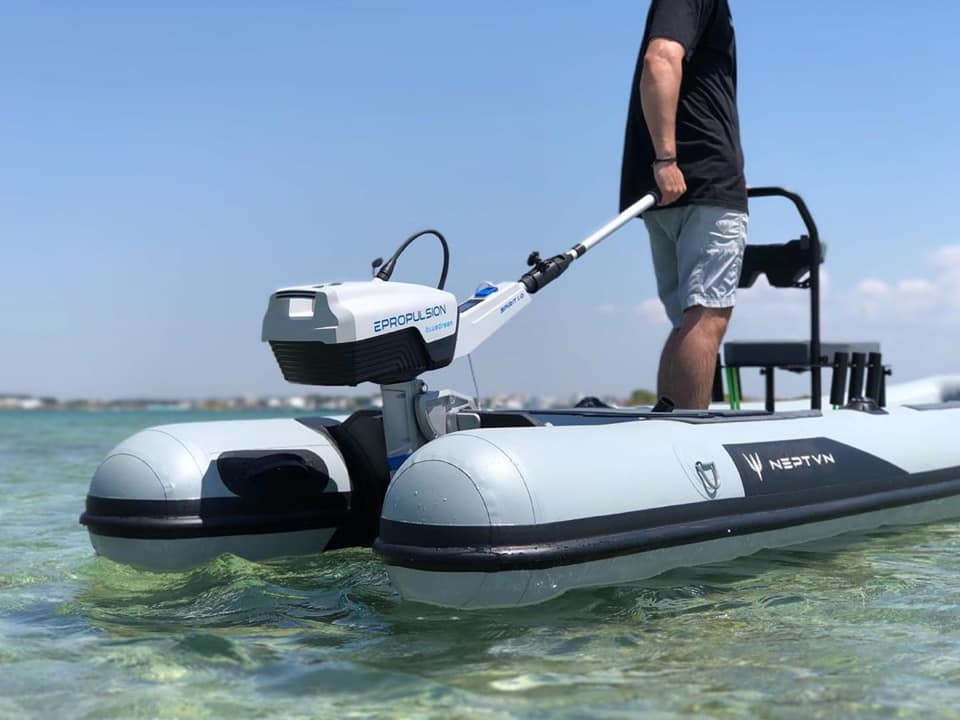
Here is also a chart that collects the weight of some popular electric sailboat motors for your reference:
| Model | HP | Motor Weight | Battery Weight | Note |
| Spirit 1.0 Evo | 3 HP | 11.3 kg / 24.9 lbs | 8.7 kg / 19.2 lbs | 1276 Wh Integrated Battery |
| Navy 3.0 Evo | 6 HP | 24.3 kg / 53.6 lbs | 48 kg / 105.8 lbs | 4096 Wh E80 Battery |
| Navy 6.0 Evo | 9.9 HP | 36 kg / 79.4 lbs | 87 kg / 191.8 lbs | 8960 Wh E175 Battery |
For many people, another big problem with electric sailboat motors is the cost.
It’s true that a gasoline outboard with similar power is a lot cheaper to buy. However, the electric sailboat motor eventually wins in long-term operating cost. That’s especially the case if you are going to do a lot of motoring.
Electric sailboat motors save on fuel and maintenance costs, which can build up to a large amount over time.
Here is a chart that compares the cost of a 3HP electric sailboat motor (coming with a built-in battery) with its combustion counterpart:
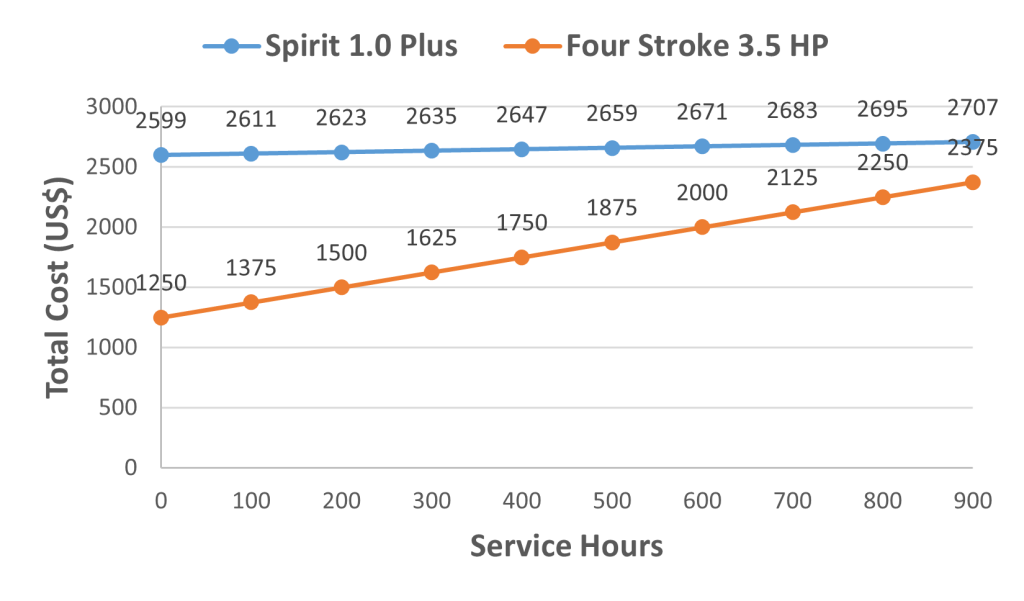
That’s to say, you will cover the price difference for electric yacht motors eventually as long as you use it long enough. Click to check the details of the calculation .
What makes the electric sailboat motor even more worthwhile is it saves you a lot of hassles, especially for sailors who only use the engine in and out of the harbor. Dealing with the maintenance of the gas outboard for a 10 minute motor out of and into the harbor is disproportionate and painful.
*The higher horsepower electric sailboat motor may be different in terms of the cost calculation. Check out the outboard motor pricelist by HP for more information.
As you may have already noticed, electric propulsion has already been widely used in the marine industry:
It’s quiet while motoring, clean to handle, environmentally friendly, with less maintenance and operation costs.
The electric sailboat motors are easier to use with dramatically fewer moving parts to break and no worries about being a diesel mechanic to deal with the hard pulling start. You can have it always on, so it is ready whenever you need it.
And it makes even more sense in sailing applications:
You don’t really need to motor much if your plan is to actually sail. If you are completely becalmed, you will probably just need to motor at 2 knots to keep making way, which is easy for electric sailboat motors.
If you mostly use the motor to get into and out of the harbor, the electric sailboat motor also works great for you.
You can always charge up at the dock, motor out of the marina (or even motor to your sailing area or race start), then hoist the sails and when you’re through, the batteries are charged again.
The electric sailboat motor is also useful as a backup (kicker) motor in case your system goes down. That’s why you can see people pushing a lot of big boats with small electric motors. (Click to learn more information about kicker motors .)
Personally, it’s really nice to have an electric auxiliary in the boat – no smelly, messy diesel and motor oil to deal with, a much simpler system with less maintenance, and much, much quieter operation.
However, powerboats tend to have much higher requirements in terms of both power output and runtime. In that case, an electric sailboat motor can be hard to satisfy your needs.
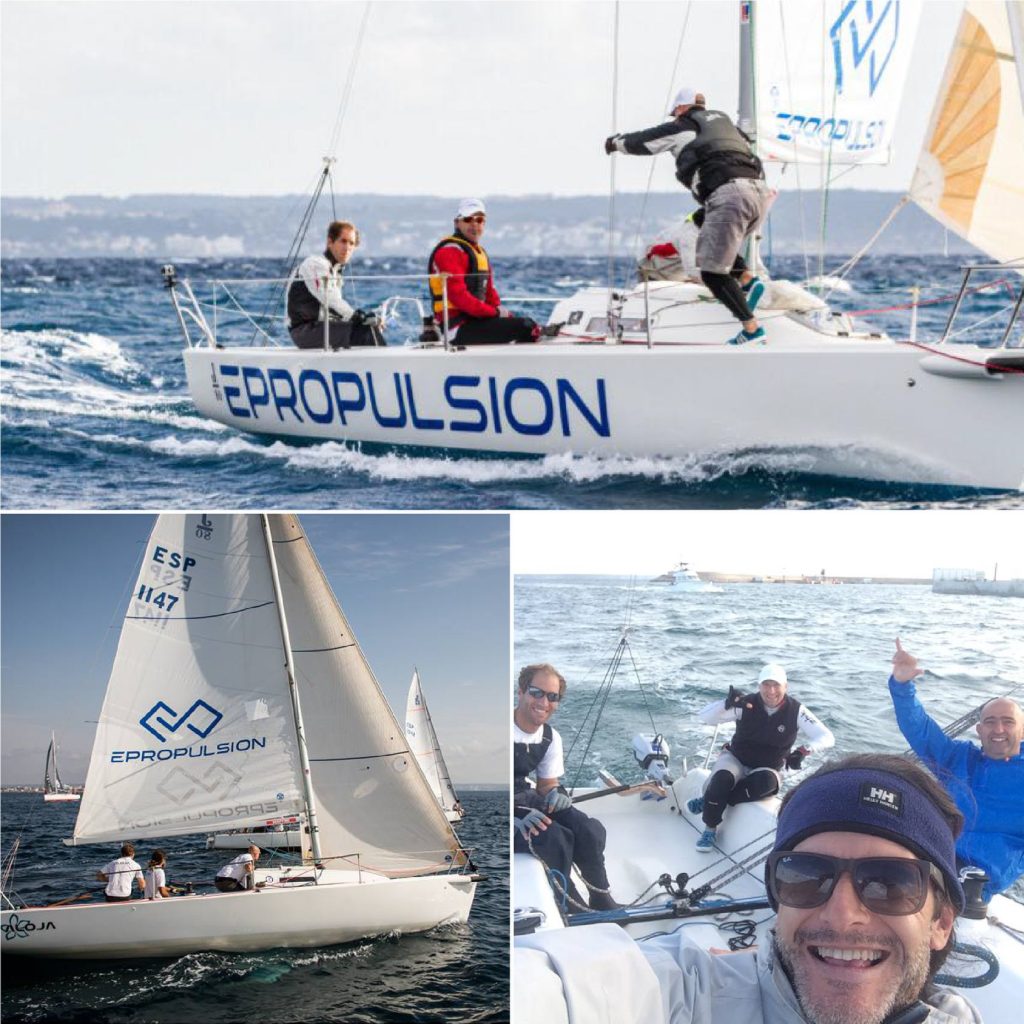
How Do You Size an Electric Motor for a Sailboat?
As a rule of thumb, you will need approximately 1 HP per 550 lb of the displacement of your boat.
Generally speaking, a 3 HP electric sailboat motor can push a sailboat up to 25 ft and a 9.9 HP motor is sufficient for a 30 ft sailboat to motor at a satisfying speed.
However, bear in mind the horsepower you need always depends on your needs and applications.
It’s better to check the data from real-world tests to decide whether the electric sailboat motor is suitable for your specific needs.
For example, the 9.9 HP electric sailboat motor Navy 6.0 allows you to go at 6.9 mph (11.1 kph) on a 30 ft sailboat, and the range can be extended to 46.4 miles if you decrease your speed to 2.9 mph (4.6 kph).
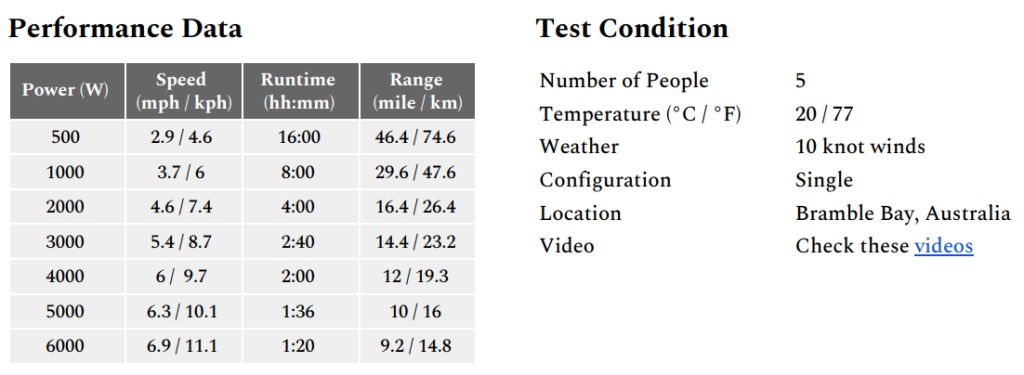
Click to see more test reports with other electric motor and sailboat combinations, and find the electric sailboat motor that suits you best.
If you are still not sure about the size of the electric sailboat motor for you, feel free to leave us a comment and we will get back to you ASAP with professional suggestions.
Electric Sailboat Motor Conversion
Basically, there are two ways for you to convert your sailboat to a clean and quiet electric drive system:
You can either convert your current vessel to electric or buy an engineless yacht and install an electric sailboat motor on your own.
#1. Repower Your Sailboat with Electric Motor
If you decide to replace the diesel engine with an electric motor, you will need to do a lot of preparations:
The DIY approach requires an electric sailboat motor kit (including motor and controller), batteries, a good level of mechanical ability and basic electrical knowledge, as well as some common tools such as a voltmeter.
You will need to take the old engine out for the new electric sailboat motor installation. It’s not an easy task that involves removing the engine mounts and the drive shaft (dealing with the numerous hoses and cables), taking out the engine, exhaust system, fuel tank, and its attendant tubes, etc.
Remember to balance the boat to avoid listing during the electric sailboat motor conversion.
Then in with the new electric sailboat motor. The installation process can be straightforward if you choose the electric sailboat motor kit wisely (See steps below). Furthermore, you can set up solar charging for your electric sailboat motor with solar panels and charger.
Many sailors have recorded their electric sailboat motor conversion process and experience. Be sure to check them out to get some inspiration. For example, Ed Phillips has documented everything which can serve as a guide for newbies to get started.
Mind you there can be a whole heap that can go wrong in designing and maintaining the electric sailboat motor systems. You really need to be totally on top of it if you want decent performance or reliability.
If you are not that technically inclined, it’s better to talk to a specialist first to discuss your plan for a smooth electric sailboat motor conversion.
#2. Install an Electric Motor in a Sailboat
If you own an enginless sailboat, the electric sailboat motor conversion is much easier for you.
All you need to do is to find a reliable electric sailboat motor and install it in simple steps. The whole process can be easily done, even for beginners. Here we take the popular 6 HP electric sailboat motor Navy 3.0 as an example to show you the installation process:
- Step 1 : Rotate the clamps or use the screws to fix the outboard onto the sailboat.
- Step 2: Mount the steering system in the proper position.
- Step 3: Install the tiller on the electric sailboat motor.
- Step 4: Connect the batteries to the electric sailboat motor system.
Click to check the video tutorial that guides you through each step of the installation.
If you are worried about aesthetic issues and want higher horsepower options, an electric inboard motor can be a better suit for your sailboat. If you prefer an inboard motor for your sailboat, contact our OEM team to get an electric propulsion solution tailored to your needs.
Note : You might find some electric trolling motors rated by #s of thrust on the market. Actually, those electric trolling motors for sailboats can only provide limited speed and range. If you are heading into the wind, the trolling motors for sailboats are definitely not an ideal solution.
Once you’ve evaluated if electric sailboat motors are right for you, there are a lot of options for electric systems.
Here are some popular electric sailboat motors with positive reviews from customers worldwide. Fast charger is available for all the models recommended to reduce your charging stress.
#1. 3 HP Spirit 1.0 Evo
If you are looking for an electric motor for a small sailboat, be sure to check out the ePropulsion Spirit 1.0 Evo. It’s suitable for large daysailers or small cruising sailboats under 25 ft.
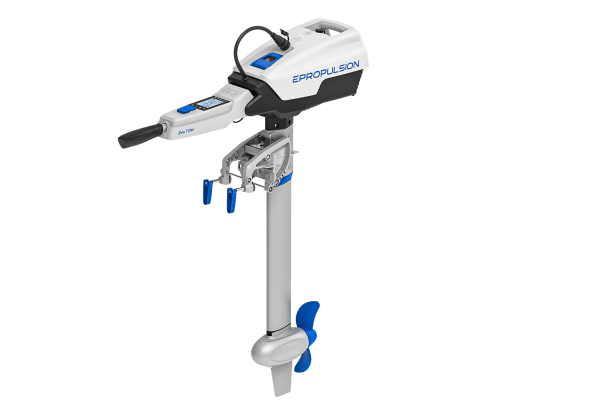
With the Spirit 1.0 Evo electric sailboat motor, you can go 5.5 mph (8.8 kph) at top speed on the 21 ft RS21 sailing boat, or troll for 20 hours continuously at 2.2 mph (3.5 kph) according to our test .
This electric sailboat motor with regeneration allows you to recover energy from the prop while under sail. It will start to generate power automatically when the sailing speed reaches 2 knots.
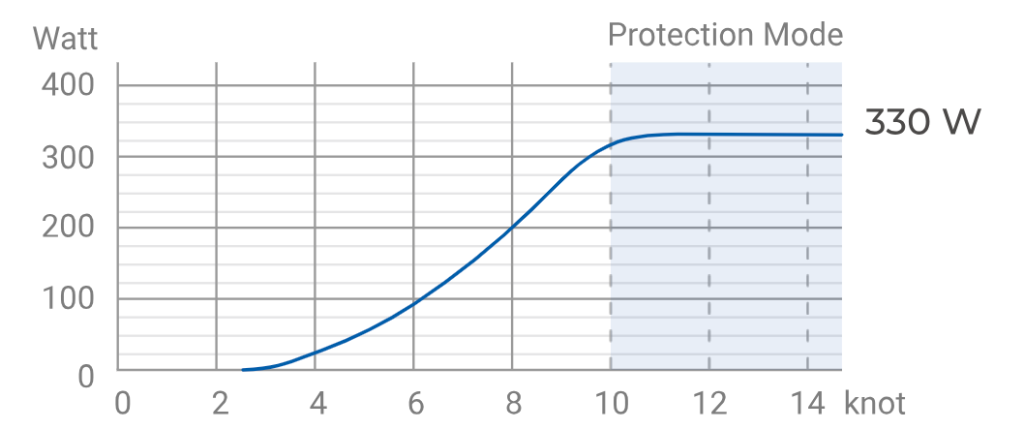
As an electric auxiliary sailboat motor, it can also be easily installed on your tender boats or yacht dinghies since it’s portable and easy to transport (with a lightweight integrated battery).
Features You Will Love:
- Come with the industry-first hydrogeneration capability
- Direct-drive technology makes it maintenance-free
- Portable with a 1276Wh large integrated lithium battery for long range
- Safety wristband keeps you safe in case of MOB
- Digital operation keeps you informed of the battery status
Spirit 1.0 Evo Electric Sailboat Motor Reviews:
“Great weekend with my 17′ sailboat powered by the Spirit Evo. This is great. Quiet and reliable. Went at 3/4 throttle for about 1.5hrs when taking it back to boat ramp.” – Robert Taylor
“Very happy with our Spirit Plus. Pushing our Kolibri 560 a 750 Kg sailboat, with ease. Doing about 5.8 km/h at 500W.” – Frank van Asten
#2. 6HP/9.9 HP Navy Evo Series
If you want a little more juice on the electric sailboat motor, check out the ePropulsion Navy Series. It offers 6 HP and 9.9 HP models for your selection and it provides sufficient power for sailboats up to 30 ft.
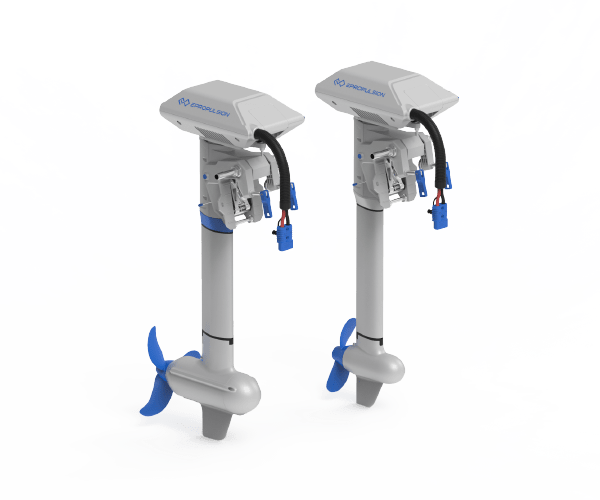
According to our test , the 6 HP electric motor Navy 3.0 can push the Catalina 25 sailboat (25 ft) at 6 mph (9.6 kph) top speed, while the Olga 33 sailboat (33 ft) can go at 7.5 mph (12 kph) with the 9.9 HP Navy 6.0 motor.
The Navy series electric sailboat motor also comes with regeneration features which can be recharged with hydrogeneration, wind turbine, and solar panel.
- Four controls to fit your sailboat installation and your boating style
- Accompany LiFePO4 batteries (need separate purchase) are more energy efficient
- Digital display offers real-time monitoring of the power and battery
- Magnetic kill switch and safety wristband keep you safe on the boat
- Electric start saves you trouble pulling the cord to start
Navy Series Electric Sailboat Motor Reviews:
“I have a Navy 3.0 with E80 on a Catalina 25 sailboat. It is working well. Currently I am using about 4% battery to go in/out of the marina by boat.” – Aaron Young
“Just finished my 8 weeks sailing journey in the Baltic Sea. The two Navy 3 outboards provide enough power for my 33ft catamaran. The 400W solar panels provided enough energy for engines and all other energy consumed on board with 2-6 persons. The two Navy Batteries provide power for engines and all other on-board electric devices. I never had to use shore power, so totally self-sufficient electric system.” – Martin Hildebrand
Recent Posts

ePropulsion Partners with 37th America’s Cup to Supply Sustainable Electric Power for Autonomous Race Marks
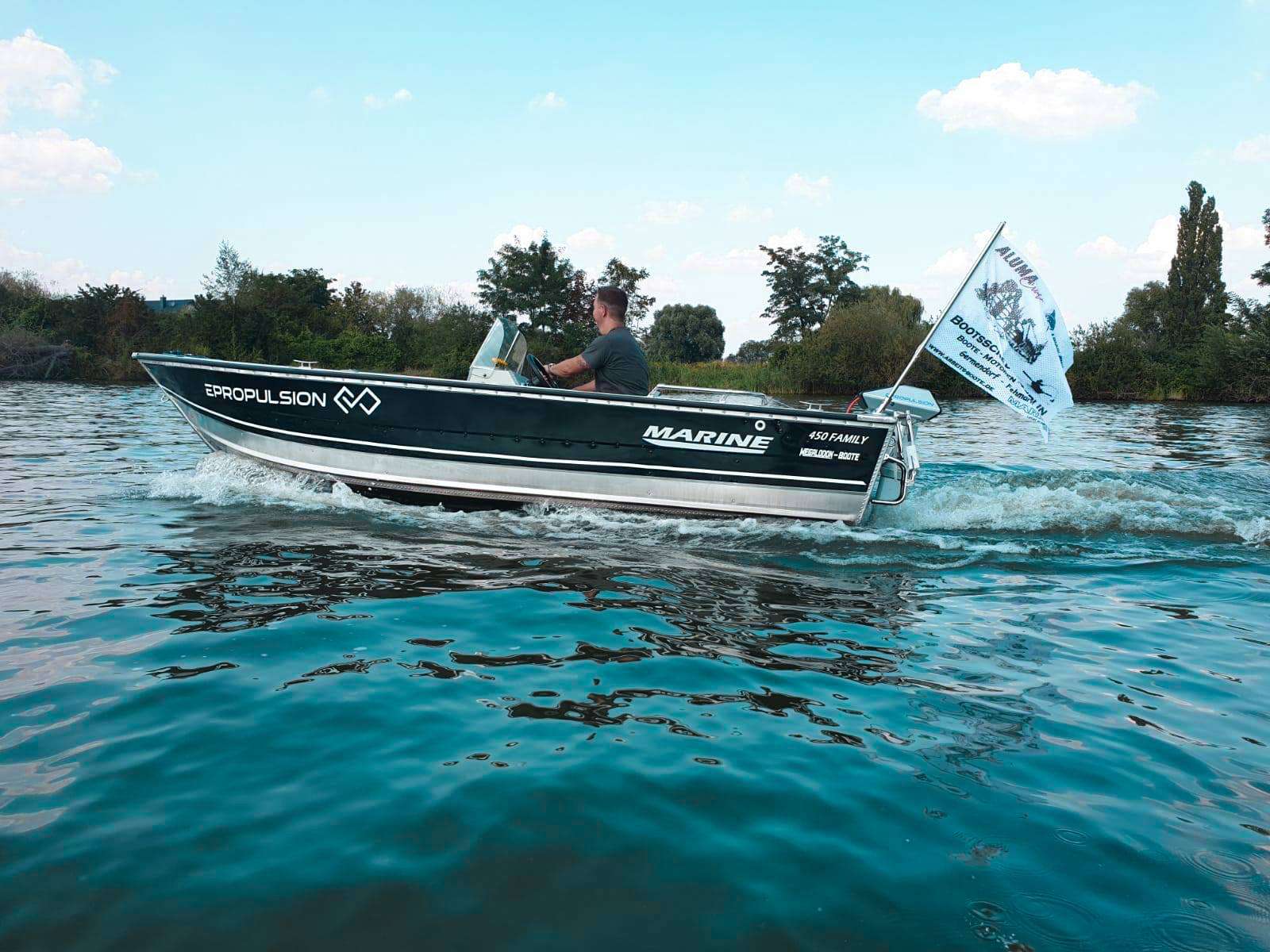
Why Do Boats Porpoise & How To Stop Your Boat From Porpoising

Understanding Propeller: Prop Diameter & Prop Pitch
Join the discussion cancel reply.
Save my name, email, and website in this browser for the next time I comment.
Notify me via e-mail if anyone answers my comment.
This site uses cookies to personalize your experience and analyze site traffic. By clicking accept or continuing browsing the site, you are agreeing to our use of cookies. See our Privacy Policy here .
View the Serial Number
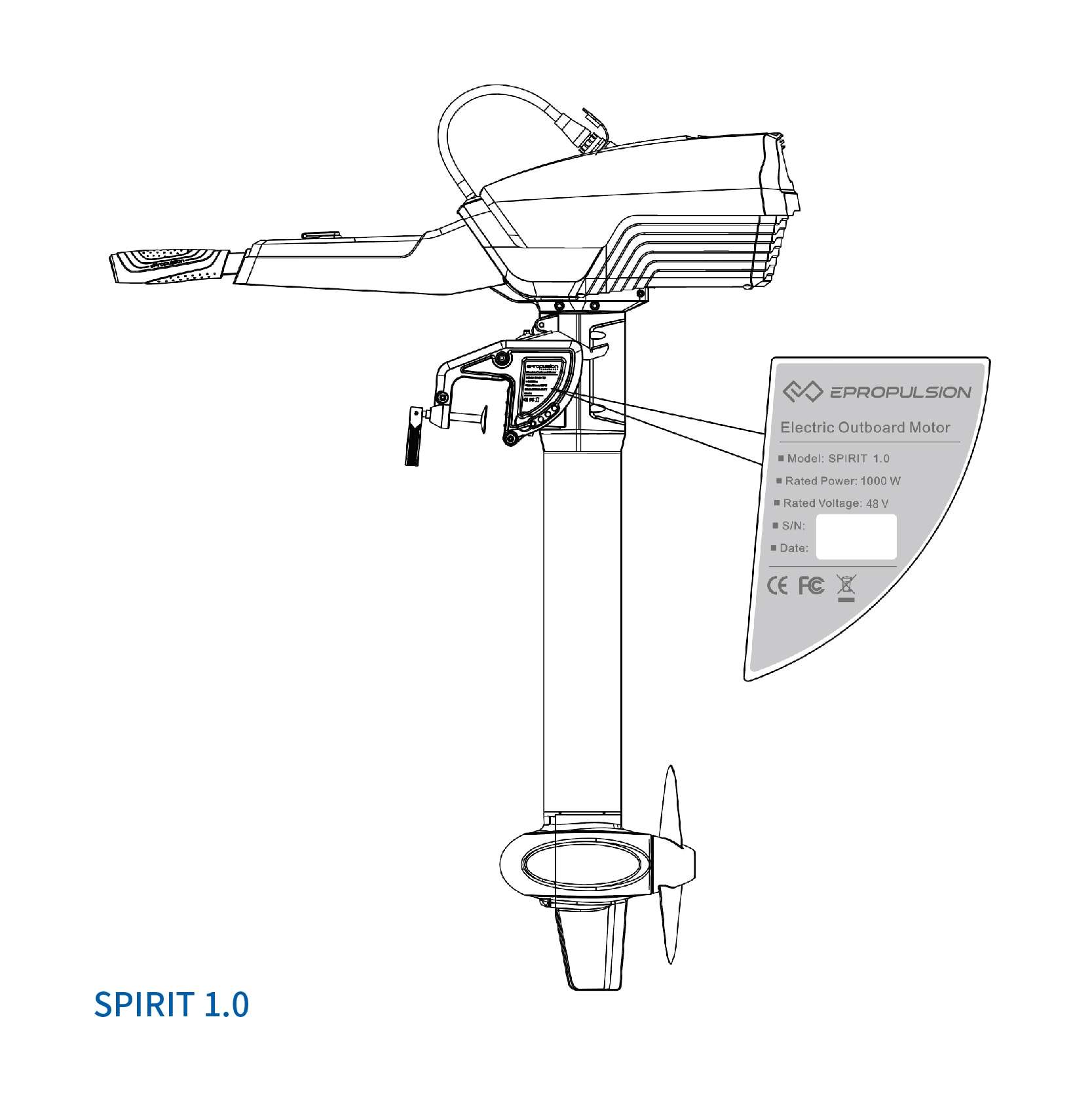

The top of this web page is an Illustrated Guide with photos of the motors and specifications to the right. At the bottom of the page is a Sortable/Searchable Table that lets you compare motors easily. If you are going to be using the table extensively the page is best viewed on a computer rather than smartphone or tablet.
- Illustrated Guide
The motors are organized in alphabetical order by manufacturer, then by model line. For the specifications we have tried to make it a user friendly as possible. If there are 3 models in the line, we will give the specs for each model with a comma in between. If there are many models, we give a range from without lining the specs up with specific models.
- Sortable/Searchable Table
The table can be searched with any keyword – manufacturer, for instance, or can be sorted by any of the columns: Peak kiloWatt power, Continuous kiloWatt power, estimated HP equvalent, Voltage, Dimensions (Length, Width, Height), Weight, RPMs, Type of motor and cooling system (air, liquid, water), and whether it is regenerative – capable of recharging when the boat is under sail propulsion.
All specifications are taken from the manufacturers’ websites or brochures without any independent verification. There is a lot of variety in the way manufacturers detail the attributes of their products, particularly when it comes to ‘Power’. Some use peak power as the measurement, some use continuous power, and there are other variations. Some quote minimum RPMs for their motors, others quote maximum RPMs. There is also no set standard for ‘horsepower equivalent’. We have tried to present the information as close as possible to an ‘apples to apples’ comparison.
The photographs and drawings are from the manufacturers’ websites and are not shown in any consistent scale.
Power Ratings – measured in kiloWatts kW power rating quoted is taken from the manufacturer website. Some quote only peak power or continuous power, some quote input power and output power. We have indicated what the measurement is, although in the table we have used peak power as equal to input power and continuous as equal to output. power. HP is ‘HorsePower equivalent’ so that you can get an idea of the power of the motor in comparison to a HP rating you might be more familiar with. As noted above, there is a lot of leeway in how this is interpreted. When manufacturers have provided an HP equivalent we have used that.
- IN THE TABLE , when no HP equivalent has been provided, we have used the continuous power and multiplied it by 1.3 to indicate HP equivalent. We have noted it with an asterisk * when we have done this.
Voltage is most often referred to on the sites as simply ‘Voltage’. Some indicate nominal or peak, we have used nominal and indicated if peak is also referenced.
Current is noted when the manufacturer supplies the information. It is not included in the table.
Torque is shown in Newton metres, Nm. A Nm is about 3/4 of a foot-pound, or conversely, a foot-pound is about 1 and 1/3 Nm.
Dimensions of the motors and shaft are shown in millimetres – mm. There are about 300 mm in 1 foot, or about 25 mm in 1 inch.
Weight is in kilograms. A kilogram is 2.2 pounds.
Motor Types There are advantages and disadvantages to each kind of electric motor. Some manufacturers use abbreviations to describe their motors, others use the full words. We have used whatever the manufacturer prefers, but when abbreviations are used, this is what they mean:
BLDC: BrushLess Direct Current
PMAC: Permanent Magnet Alternating Current
Information on this page updated August 12, 2024
You may also want to check our Directory of Electric Boat Motor manufacturers, dealers and distributors around the world, or the Plugboats Marketplace of electric boat motors for sale.

Manufacturers in this Buying Guide: Bellmarine • Combi • Damoto • Elco • Electric Yacht • Electrine • EPTechnologies • ePropulsion • E-TECH • Fischer Panda • GreenStar Marine • Huracan • Krautler • Lynch • Mitek • Molabo • NT Systems • Oceanvolt • Piktronik • Synapseo • TEMA • Thoosa • Torqeedo • waterworld
Click on the Manufacturer’s name or red cross on right hand side to open and close window with information and links for that company’s electric electric inboards
Click »» here to see Bellmarine motors for sale from vendors in the Plugboats Market
»» Bellmarine website (EU) »» Bellmarine website (USA) »» Bellmarine catalogue (EU) »» Bellmarine catalogue (USA)
Bellmarine is a very well established electric boat motor company with a history going back to 1999. They have now been purchased by and are merged with Transfluid, a large scale industrial motor manufacturer. Bellmarine offers a wide range of electric inboard motor configurations, both direct drive shaft and reduction geared. They range from 2 kW to 130kW and come in four model lines: the straight drive Drivemaster, dual motor ModularMaster, geared Thrustmaster and high power Shaftmaster. They are sold as complete systems with optional extras available.
Bellmarine DriveMaster Air Cooled Series 9 Models: DriveMaster 2A, 5A, 7A, 8A, 10A, 15A, 25A, 35A, 50A

- kW : Peak: From 2kW – 50kW | Continuous: From 1.5kW – 40kW • Voltage : 48V – Models 2A, 5A, 7A, 10A | 96V – Models 8A, 15A | 144V – Models 25A, 35A, 50A
- Motor Type : Permanent Magnet AC (PMAC)
- Cooling : Air cooled
- RPM : 1500
- Includes : Motor with mounting brackets and silent blocks • Motor with integrated thrust bearing • Vector control inverter IP65 • NMEA2000 compatible (Apply Transfluid) • Main switch and main fuse • DC-DC converter 12 Vdc • 5m cable for display, lever, key • Quick install / easy connect / plug and play
- Available : Regeneration (with upgrade to battery monitor), Control throttle, display, cooling kit, coupling, shaft with propeller
- Country of Manufacture : Netherlands/Italy
- Price : NA on website
Bellmarine DriveMaster Liquid Cooled Series 9 Models: DriveMaster 3W, 7W, 10W, 15W, 20W, 20W-EVO, 30W, 45W, 55W

- kW : Peak: From 3kW – 55kW | Continuous: From 2.5kW – 45kW • Voltage : 48V – Models 3W, 7W, 10W, 15W, 20W-EVO | 96V – Model 20W | 144V – Models 30W, 45W, 55W
- Cooling : Liquid cooled
- Includes : Motor with mounting brackets and silent blocks • Motor with integrated thrust bearing • Vector control inverter IP65 • NMEA2000 compatible (Apply Transfluid) • Main switch and main fuse • DC-DC converter 12 Vdc 5m cable for display, lever, key • Quick install / easy connect / plug and play • Inlet and outlet liquid connections
- Available : Control throttle, display, cooling kit, coupling, shaft with propeller
Bellmarine ModularMaster Series 3 Models: ModularMaster 40W-EVO, 40W, 60W

- kW : Peak: 40, 40, 60 | Continuous: 30, 30, 50 • Voltage : 48V – 40W-EVO | 96V – 40W | 144V – 60W
- Includes : True redundancy in case of one motor failure • Aluminum made split power drive • Mounting brackets and silent blocks • Live PTO available • Vector control inverter IP65 • NMEA2000 compatible (Apply Transfluid) • Main switch and main fuse • DC-DC converter 12 Vdc • 5m cable for display, lever, key • Quick install / easy connect / plug and play • Inlet and outlet liquid connections• Closed loop liquid cooling size XL mounted aboard
- Available : control throttle, display, cooling kit, coupling, shaft with propeller
- Country of Manufacture : Netherlands / Italy
Bellmarine TorqueMaster Series 2 Air cooled Models: TorqueMaster 20A, 25A 7 Liquid cooled Models: TorqueMaster 20W-EVO, 25W, 35W, 45W, 65W, 100W, 130W

- kW : Peak: 20 – 130 | Continuous: 15 – 100 • Voltage : 48V – 20W-EVO | 96V – 20A, 25W | 144V – 25A, 35W | 288V – 65W, 100W | 384V – 130W
- Cooling : See above
- RPM : 20W-EVO – 1500, all other Models 3000
- Includes : Motor with mounting brackets and silent blocks • Drop Box with integrated thrust bearing – 225 mm offset • Vector control inverter IP65 • NMEA2000 compatible (Apply Transfluid) • Main switch and main fuse • DC-DC converter 12 Vdc • 5m cable for display, lever, key • Quick install / easy connect / plug and play • Dropbox aluminum made – no cooling needed – low noise and low vibration • Oil temperature sensor • Elastic coupling between motor and Dropbox • DIN120 output (SAE 1410 upon request) – “U” drive possible
Bellmarine ShaftMaster Series 6 Models: ShaftMaster 25W, 35W, 45W, 64W, 100W, 130W

- kW : Peak: 25kW – 130kW | Continuous: 20 – 100 • Voltage : 96V – 25W | 144V – 35W | 288V – 45W, 65W, 100W | 384V – 130W
- Motor Type : Motor Type : Permanent Magnet AC (PMAC)
- RPM : 3000
- Includes : Motor with mounting brackets and silent blocks • Live Pto available • Marine gear with integrated thrust bearing (up to 130 kW) • Oil temperature sensor • Output offset 103 mm • Elastic coupling between motor and transmission • Vector control inverter IP65 • NMEA2000 compatible (Apply Transfluid) • Main switch and main fuse • DC-DC converter 12 Vdc • 5m cable for display, lever, key • Quick install / easy connect / plug and play • Inlet and outlet liquid connections • Throttle lever (TFC) • Self priming pump (mechanical) mounted aboard • Oil-water cooler mounted aboard • Closed loop liquid cooling size XL mounted aboard
»» Combi website
Combi Outboards was founded in 1979 in Giethoorn (‘the Dutch Venice’) to supply rental boats with clean electric power. It is now a leading international supplier of electric propulsion solutions for the maritime market. Combi inboards have all of the operating components in one housing, ready to plug in to batteries, throttle and monitoring systems. Motors are available both AC asynchronous (induction) and BLDC Permanent Magnet. The two larger inboards are dual motor, and can be operated on the Master / Slave principle but can also sail on a single motor.
Combi Inboard 5 Models: CI-3.5, CI-5, CI-7.5, CI-10, CI-16, CI-20

- kW : From 3.5kW to 20kW • Voltage : 48V • Current : From Nominal –73 / Cruising speed – 50 to Nominal – 417 / Cruising – 240 • HP : From 9HP to 33HP
- Motor Type : Brushless AC asynchronous • OR • Brushless DC Permanent Magnet (PMDC) Cooling : CI-3.5 Air cooled, all others liquid cooled
- RPM : From 1200 to 1500
- Shaft (cm) : Can be connected to all common propeller shaft sizes
- Includes : Our systems are constructed in such a way that all components are used in a motor housing. You just need to connect only the power cables. The engine foundation is prepared so that it is easy to install.
- Country of Manufacture : Netherlands
»» Damoto website
Damoto is a Dutch developer, manufacturer and distributor of an extensive range of premium electric inboard motors from 2kW to 40kW nominal. The first model dates from 2005 with more than 3000 boats equipped with it, including recreational sloops, charter and rental boats. The motors are now released under the name Damoto eFLOW but have been well known in the international maritime industry for many years.
Damoto eFLOW Original Series 5 models: eFLOW 2.0 Air, eFLOW 2.5 Air, eFLOW 3.0 Air, eFLOW 6.0 Air, eFLOW 11.0 Air

- kW : Nominal: 2kW to 11kW | Peak: 3kW to 15kW max
- Motor Type: Brushless 3 Phase Asynchronous • Cooling: Air cooled
- IP : IP66
- Includes : stainless steel motor frame with silent blocks, motor, thrust bearing, controller in stainless steel casing incl. marine software & PC/handheld connector for motor tuning, main power contactor & fuse, controller cable with connectors (Plug-n-Play)
- Available : Displays, throttle levers, shaft couplings
- Country of Manufacture : Netherlands / Europe
- Price : Not available on website
Damoto eFLOW Liquid Original Series 8 models: eFLOW 3.0 Liquid, eFLOW 5.0 Liquid, eFLOW 10.0 Liquid, eFLOW 15.0 Liquid, eFLOW 20.0 Liquid, eFLOW 30.0 Liquid, eFLOW 40.0 Liquid Dual Motor, eFLOW 14.0 Liquid 4Hybrid Dual Shaft

- kW : Nominal 3kW to 40kW | Peak: 6kW to 80kW
- Motor Type: Brushless 3 Phase Asynchronous • Cooling: Liquid cooled
- Includes : stainless steel motor frame with silent blocks, motor with liquid inlet & outlet, thrust bearing, controller in stainless steel casing incl. marine software & PC/handheld connector for motor tuning, on-board power converter (12V) integrated in controller casing, main power contactor & fuse, controller cable with connectors (Plug-n-Play)
- Available : Displays, throttle levers, cooling kits, shaft couplings
Damoto eFLOW Air All-in-One Series 3 models: eFLOW 2.0 Air AiO, eFLOW 3.0 Air AiO, eFLOW 6.0 Air AiO

- kW : Nominal 2kW to 6kW | Peak: 6kW to 80kW
- Includes : stainless steel housing, motor with silent suspension, thrust bearing, controller module incl. marine software & PC/handheld connector for motor tuning, main power contactor & fuse, connectors on box front (Plug-n-Play), wired & tested
- Available : throttle levers, shaft couplings
»» Elco website
Elco (Elco Motor Yachts) is the oldest electric boat motor company in the world, having been started in 1893 as the the Electric Launch Company to supply electric boats for the Chicago World’s Fair. It offers a full range of outboards, inboards and hybrids. Their Plug n Play system has all wiring and active power components in a marine grade aluminum casting rated IP-65. Can be purchased from the Elco website along with batteries, options and accessories, leading to a one-price checkout. They also have a ‘ Find My Motor ‘ calculator on the site.
Elco Inboards 6 Models: EP-6, EP-12, EP-20, EP-40, EP-70, EP-100

- kW : Peak: From 4.4kW – 73.5kW | Continuous: From 2.5kW – 42.5k • Voltage : From 36Vdc to 144 Vdc • Amps : 70A – 295A • HP : 6HP – 100 HP
- Dimension s: From L: 17” / W: 16.22” / H: 15.8” to L: 35” / W: 18.82” / H: 19.25”
- Includes : Motor and controller.
- Available : Motor mounts, shaft couplers, batteries, battery monitor, chargers, cables, and other accessories
- Country of Manufacture : USA
- Price (does not include options) : $US 7,000 – 21,000
Electric Yacht
Electric Yacht is one of the premier US suppliers of electric motors for sailboats with a Plug-n-Play system designed for DIY installation by “ a competent boat owner using simple tools and the easy to mount Electric Yacht system “. Their systems offer regenerative power while under the sail. 10 years of proven production with over 450 installs. 3 Year Warranty.
Electric Yacht QuietTorque single motor inboards 3 Models: QT5, QT10, QT10 Sport

- kW : Input – 2.5kW – 30kW, Continuous 2kW – 8kW • Voltage : 24, 36 or 48V for Quiet Torque 5.0, all others 48V • Current : 100A – 200A • HP : 10-25
- Motor Type : PMAC (Permanent Magnet Brushless AC) • Cooling : Air cooled • IP :
- RPM :
- Dimensions : L: 432mm, W: 245mm, H (with mountings): 342mm Adjustable mountings • Weight : 40 lbs, 70 lbs
- Includes : The motors are sold as systems with everything included except the battery, which can also be purchased from the company. The systems can be purchased directly from the website.
- Price : $US 5,000 – 9,000
Electric Yacht QuietTorque dual motor inboards 6 Models: QT20, QT30-Air-Cooled, QT30-Liquid-Cooled, QT40, QT45, QT60.0

- kW : Input – From 20kW – 60kW Continuous – From 16kW – 52kW • Voltage : 48V – QT20, QT30-Liquid-Cooled 72V – QT30-Air-Cooled, QT40 96V – QT45, QT60 • Current : NA • HP : From 25 – 80
- Motor Type : PMAC (Permanent Magnet Brushless AC) • Cooling : Air cooled – QT20, QT30-Air-Cooled, Liquid cooled – QT30-Liquid-Cooled, QT40, QT45, QT60 • IP : NA
- RPM : NA
- Torque : NA
- Dimensions : L: 673mm, W: 534mm, H (with mountings): 534mm Adjustable mountings • Weight : From 135 lbs to 200 lbs
- Price : $US 14,500 – 18,000
»» ELECTRINE website
ELECTRINE is a Korean manufacturer which has focused on maritime electrification since 2010, when the idea of electric mobility was still relatively uncommon. The company was known as LGM until 2020 and has had a consistent R&D effort for many years. They manufacture electric outboards, inboards and saildrives as well as accessories and Lithium-ion batteries using a Carbon Nano Tube heat exchanger technology. There are 7 models in the eINBOARD Line, the ZI40, ZI60, ZI90, ZI115, ZI180, ZI270 and ZI350
E-ELECTRINE e-INBOARD line 7 Models: ZI40 (shown), ZI60, ZI90, ZI115, ZI180, ZI270, ZI350

- kW : (Max): 43, 60, 110, 150, 173, 200, 250 • Operating Voltage (Vdc): 72~96, 288~384, 288~384, 288~384, 288~384, 500~738, 500~738, 500~738
- Motor Type : N/A
- RPM (Max): 8006, 7160, 10,250, 8000, 6204, 3500, 3375
- Torqu e (Max) Nm: 72, 167, 255, 251, 555, 2100, 2700
- Weight | Dimensions (kg | mm) N/A | 390 x 360 x 323, N/A | 390 x 360 x 323, 93.5 | 665 x 468 x 476, 93.5 | 665 x 468 x 475, N/A | N/A, 500 | 902 x 1200 x 733, 500 | 902 x 1200 x 733
- Country of Manufacture : Korea
EPTechnologies
»» EPTechnologies website
EPTechnologies is a complete marine propulsion provider for electric and hybrid vessels. The company specializes in custom electric and hybrid systems, but also has ‘off the shelf’ motors, including the drop-in Stern Drive unit below. The company delivers complete systems including batteries designed and built by EPTechnologies.
EPTechnologies Drop In Unit

- Voltage: 400
- Other: This motor system has been designed by EPTechnologies as a complete drop-in unit for a Mercury Sterndrive. Includes all batteries, controllers and accessories
- Country of Manufacture : Denmark
- Price : Contact EPTechnologies
EPTechnologies Electric Motor

- For boat sizes 60′-250′
- kW (Continuous) : 400 (Peak) : 700
- Torqu e (Max) Nm: 7800
- Other : Can be stacked together for 800kW or 1400kW peak
ePropulsion
Click here to view motors from ePropulsion dealers in the Plugboats Marketplace
»» ePropulsion website
ePropulsion was established in 2012 and is led by a team of technology entrepreneurs that are focused on developing uncompromising, superior products. It was the first company to launch a brushless, direct-drive electric outboard motor in the market. ePropulsion offers a portfolio of electric outboard motors – some of which offer hydrogeneration – pod drives, and inboard motors. The company is focused on products and services for all kinds of electric boats from dinghies and fishing boat to sailing boats to commercial and leisure motor vessels up to 100-feet and displacement of 200 tons.
ePropulsion I-Series T hree (3) models: I-10, I-20, I-40

- kW : 60kW to 140kW • Voltage : H-100: 540 VDC
- Motor Type : permanent magnet motor technology • Cooling : I-10 Air cooled | I-20 & I-40 Water cooled (air cooling optional) • IP : IP67
- RPM : 1500 all models
- Torque : 56 Nm | 111 Nm | 222 Nm
- Dimensions : I-10: 565 x 295 x 380 mm | I-20: 580 x 330 x 380mm | I-40 860 x 485 x 420mm • Weight : 43kg | 45kg | 75kg
- Includes : Weather & impact resistant metal housing contains integrated motor, gearbox, electronic control system, ECU, thermal management system and suspension, Smart 5” Display, ePropulsion Smart System Architecture (eSSA), Advanced driver assistance system (ADAS), Wired & tested, plug & play installation to new boat or retro-fit to existing shaft, NMEA 2000 compatible, CAN Bus communication, Fault diagnosis system & full redundancy design
- Available : Smart throttle, G102-100 battery, propeller, air-cooling, HVAC System, shaft and coupling, charger, remote data access & fleet management with IoT connectivity service
- Country of Manufacture : China
- Price : On application
ePropulsion H-Series Four (4) models available: H-60, H-85, H-100, H-140

- kW : 10kW | 20kW | 40kw • Voltage : 86~115 VDC all models
- Motor Type : permanent magnet motor technology • Cooling : Water cooled • IP : IP67
- RPM : H-100: 1150
- Torque : 797 Nm
- Dimensions : H-100: H 433mm x W 433mm x D 315mm • Weight : H-100: 190kg
- Includes : Weather & anti-corrosion metal housing contains integrated motor and gearbox, high torque density (max 2000Nm), modular design to extend range and power with extra motors, batteries and controllers, high accuracy position feedback, Boating IoT system enables remote monitoring and integrated management, Customised data for speed, power, track, mileage, safety alarm etc., NMEA 2000 compatible
- Available : Controller, remote control and display – single & dual controls, custom batteries
»» E-TECH website
E-TECH is a subsidiary of boatbuilder Starboats that was started in 2008 because they were dissatisfied with other electric motor offerings in the market at the time. The company has developed fixed pods, steerable pods and outboard motors that all utilize an in-water BLDC (BrushLess DC permanent magnet) pod motor in a watertight aluminum casing. The inboard motors are designed to fit any engine bed and any propeller shaft. For in-line hybrid applications, there are shaft endings on both ends of the engine to make an easy and quick in-line installation.
Click here to view motors from E-TECH dealers in the Plugboats Marketplace
E-Tech Standard Inboards 6 Models: 4WG, 7WG, 13WG, 18WG, 23WG, 35WG

- kW : From 4.3kW, 7.1, 11.9, 16.7, 21.5, 33.7 (power measured on the shaft) • Voltage : 48V, 48V, 48V (4WG, 7WG, 13WG) | 72V – 18WG | 96V – 23 WG, 144V – 35WG • HP : 6, 9.5, 16, 23, 30, 45
- Motor Type : Brushless permanent magnet BLDC • Cooling : Water cooled • IP : 67
- RPM : (min) From 1100, 1200, 760, 1140, 1520, 2500
- Shaft : 25mm (4WG, 7WG) or f 30mm (10WG, 15WG, 20WG), 8mm spline
- Includes : Controller, battery monitor / display, cabling, joystick (side or top mounting), integrated cooling circuit for controller with Quick-Click connections, main switch, main fuse.
- Country of Manufacture : Poland
E-Tech High Torque Inboards 4 Models: 13 Pod, 18 Pod, 23 Pod, 35 Pod

- kW : From 11.9 kW, 16.7 kW, 21.5 kW, 33.7 kW (power measured on the shaft) • Voltage : 48V, 72V, 96V, 144V • HP : ≈ 16, 23, 30, 45
- RPM : (min) From 760, 1140, 1520, 2500
- Shaft : f 30mm, 1:10 conic
Fischer-Panda
»» Fischer-Panda website
Fischer Panda is one of the world’s best known manufacturers of marine generators but are also manufacturers of high quality electric boat motors, sometimes marketed under the ‘Whisperprop’ name. They have an “EasyBox” system that is intended to take the guesswork and complication out of purchasing electric boat motors. There are various sample configurations on their website displaying how the EasyBox system is laid out in different boats.
Fischer Panda Easybox DE-Shaft systems 5 Motors: A06-140-6-SH, A50-160-6-SH, B00-150-8-SH 10 kW, B00-150-8-SH 20 kW, B00-300-8-SH 20 kW

- kW : (continuous) 3.5kW – 20kW • Voltage : 48V • Current : • HP :
- Motor Type : PMAC • Cooling : Water
- RPM : 600 – 2500
- Torque : 28Nm – 320Nm
- Dimensions : L: 400mm – 560mm W: 270mm H: 270mm • Weight : 15kg – 96kg
- Includes : EasyBox control, GD2 control panel, throttle
- Available : Battery bank, charger, shore power connection, 230V adaptor
- Country of Manufacture : Germany
GSM Electric (formerly Greenstar Marine)
»» GSM Electric website
GreenStar Marine was founded by a group of Swedish engineers in the 1990s to develop a series of electric propulsion systems, including a patented regenerative technology. All of the company’s systems are direct drive one-gear and complete except for batteries. The website has an interactive tool that shows approximate run times for different sized boats and battery/motor configurations.
GreenStar E-Line 2 Models: E-10, E-20

- kW : Peak – 3.5kW, 5.5kW | Nominal – 2.1kW, 4.2kW • Voltage : 24V, 24V • HP : 10, 20
- Motor Type : Brushed DC • Cooling : Air cooled
- RPM : 1000, 1000
- Torque : Nominal: 20 Nm, 40Nm | Peak: 40Nm, 50Nm
- Includes : Motor mountings, control system, basic system monitor, battery charger, monitoring, speed control, shore power system, cables, propeller shaft with low friction bearings, fixed propeller
- Available : Hydrogeneration, folding propeller, extra DC/DC
- Country of Manufacture : Sweden
GreenStar P-Line 3 Models: P-10, P-20, P-35

- kW : Peak – 10kW, 10kW, 30kW | Nominal – 2.5kW, 5.5kW, 11kW • Voltage : 48V, 48V, 48V • HP : 10HP, 20HP, 35HP
- Motor Type : Brushless AC • Cooling : P-10 – Air cooled | P-20, P-35 – Water cooled • IP : 65 or higher classed components
- RPM : 1250, 1250, 1250 •
- Torque : Nominal: 20 Nm, 45Nm, 85Nm | Peak: 75Nm, 85Nm, 130 Nm
- Includes : Hydrogeneration, motor mountings, advanced control system, system monitor, battery charger, monitoring, speed control, shore power system, cables, propeller shaft with low friction bearings, fixed propeller
- Available : Folding propeller, extra DC/DC
»» Huracan website
Huracan was founded at the beginning of 2012 in Venice with the goal of building entirely electric marine motors with the highest reliability of any on the market. The Thor motor is sold in a housing that includes the controller, with throttle, displays, monitors and other accessories sold separately.
Huracan Thor NOTE : The information for Huracan is presented in a different format from other manufacturers because the Thor is the only model, which provides different power ratings at different motor speeds.

- kW : 10kW at 3000 rpm | 20kW at 4000 rpm | 30kW at 5000 rpm | 40kW at 5500 rpm • Voltage : 220V • Current : NA • HP : NA
- Motor Type : NA • Cooling : Water cooled • IP : 69
- RPM : 3000 – 5500
- Torque : (at axles): 30Nm at 3000 rpm | 49Nm at 4000 rpm | 56Nm at 5000 rpm | 70Nm at 5500
- Dimensions : L: 543 mm H: 300mm W: 191mm • Weight : 40 kg
- Available :
- Country of Manufacture : Italy
»» Kräutler website
Kräutler is a long-established Austrian manufacturer of industrial electric motors. They began construction of electric boat motors in the 80’s mainly because they could not find a product that would live up to the standards of founder Oswald Kräutler. They make motors for industrial and ship use as well as recreational boats and offer a wide range of inboards for any size boat or usage. Krautler has 3 lines of electric inboard motors. The WAd and WAz lines are direct drive and run from powers of 2.0kW to 25kW (WAd) and 6kW to 37kW (WAz). The WA line is made up of motors from 30kW to 100kW, for high speed / planing boats.
Krautler WAd and WAz line WAd – 11 Models WAd 2.0AC, WAd 3.0AC, WAd 4.3AC, WAd 5.0AC, WAd 6.0AC, WAd 8AC, WAd 11.0AC, WAd 15.0AC (48V, Air), WAd 15.0AC (96V, Water), WAd 18.5AC, WAd 20.0AC WAz – 10 models WAz 6,0AC, WAz 8,0AC, WAz 11,0AC, WAz 15,0AC (Air), WAz 15,0AC (Water), Waz 18,5AC, WAz 20,0AC, WAz 25,0AC, WAz 30,0AC, WAz 37,0AC

- kW : (Output) From 2.5kW – 37kW • Voltage : 24V – 144V • Current : 104A – 292A • HP : 3.5 – 50 HP
- Motor Type : • Cooling : Air – 6,0 models to 15,0 models (WAd and Waz), Water for 18,5 models to 37,0 WAz model
- RPM : NA
- Dimensions : • Weight :
- Includes : Controller, throttle, monitor, display, cables
- Country of Manufacture : Austria
Krautler WA High Speed line 6 Models: WA 100/30, WA 150/40, WA 350/50, WA 350/60, WA 500/80, WA 500/100

- kW : (Output) From 30kW – 100kW • Voltage : 100V – 500V • Current : NA • HP : 45 – 130 HP
- Motor Type : • Cooling : Water
- Includes : Battery, controller, throttle, monitor, display, cables
»» Lynch website
The Lynch motor was invented by Cedric Lynch in 1979 – a unique axial gap permanent magnet brushed DC motor with high efficiency. The company offers three lines – the direct drive Yellowtail, geared drive Marlin and dual motor Swordfish. Motor systems include motor in mounting frame, controller, electronics, throttle and basic battery monitor and control cables. (options available on throttles and monitors) Lynch has 3 lines of electric inboard motors: the Yellowtail, Marlin and Swordfish, although the Yellowtail ‘line’ is only one motor.
Lynch Yellowtail

- kW : Peak – 6.0kW, Continuous – 2.5kW • Voltage : 24 • Current : 120/Peak 250A • HP : 5 – 10
- Motor Type : • Axial Flux ‘Pancake’ Permanent Magnet DC • Cooling : NA • IP : NA
- RPM : 1080 • Efficiency : 88%
- Torque : 16/Peak 35Nm
- Dimensions : NA • Weight : Motor: 14 kg Control box: 12 kg
- Includes : motor in mounting frame, controller, electronics, throttle and basic battery monitor and control cables.
- Available : options on throttles and monitors
- Country of Manufacture : UK
Lynch Marlin : Marlin 5 Single, Marlin 8 Single, Marlin 13 Single

- kW : Peak – 14kW, 14kW, 26kW • Voltage : 48V, 48V, 72VDC • Current : 140/Peak 350A, 180/Peak 350A, 200/Peak 400A • HP : 10-20, 17-25, 35-50
- RPM : 2160, 2160, 3240 • Efficiency : 90%
- Torque : 18/Peak 38Nm , 36/Peak 44Nm, 36/Peak 72/Nm
- Dimensions : NA • Weight : Motor: 21 kg • Controller: 12 kg (14kg on model 13 Single)
Lynch Swordfish : Swordfish 16V Twin, Swordfish 26V Twin

- kW : 16kW/Peak 30, 26kW/Peak 53 • Voltage : 48VDC, 72 VDC• Current : 180A/350 Peak, 200A/400 Peak • HP : 48-60, 60-75
- RPM : 2160, 3240 • Efficiency : 90%
- Torque : 72Nm/144 Peak,
- Dimensions : NA • Weight : Motor: 27 kg Controllers: 14.5 kg X 2 (29kg)
- Includes : motors in mounting frame, controller, electronics, throttle and basic battery monitor and control cables.
»» Mitek website
Mitek Srl manufactures permanent magnet synchronous electric motors that can be used both as propulsion engines and generators according to the highest quality standards for industrial and marine markets.With more than 10 years of experience, it is a flexible partner that provides competitive products and services for sustainable mobility. Its activities focus on the design, engineering and production of innovative high torque electric motors, which are lighter, smaller and more efficient.
Mitek Inboards : 6 Models: 200015, 200020, 260038, 260054, 260061, 260115

- kW (Continuous / Peak) : 10 / 15 to 85kW/Peak 115 • Voltage : 48V, 96V, 192V, 384V• Current : From 200A/310 max to 320A/600max • HP Continuous / Peak : From 14 / 20 to 114-154
- Motor Type : NA
- RPM : From 1700 to 2200
- Torque : From 88Nm/Peak 205 to 380Nm/Peak 540
- Dimensions : L: 388mm – 588mm W: 370mm H: 370mm • Weight : 32 – 69 kg
- Includes : Standalone
Click »» here to see Molabo motors for sale in the Plugboats Market
»» Molabo website
Molabo was founded in 2016 with the goal of providing safe-to-touch low-voltage e-solutions to enable sustainable mobility worldwide. To achieve this they developed the ISCAD (Intelligent Stator Cage Drive) motor technology and have been granted 10 patents worldwide with automotive and marine OEM (Original Equipment Manufacturer) partners in Europe and China.
Molabo ISCAD V50

- kW : Peak: 80 | Continuous: 50 • Voltage : 48V
- Motor Type : PM-SynRM (Permanent Magnet Synchronous Reluctance Motor) ISCAD (Intelligent Stator Cage Drive)
- Cooling : Water: 7 l/min, max. 45°C (dual circuit cooling possible) • IP67
- RPM : 4350 • Efficiency : 95.6 % (Motor: 97 %, Controller: 98 %)
- Dimensions : L: 265mm, Diameter: 254mm • Weight : NA
- Includes : Available as components or compete set-up including motor, reduction gear, rubber mounts & brackets, 5″ touch display, throttle top or side mount, molaCONNECT & molaLINK (IOT), communication cable set
- Available : Battery and charger packages: LFP 36kWh, 48kWh and 12kWh additions
- Price : Motor: €19,990 ($US 21,000) • With all components package (excluding battery): €28,400 ($US 29,900)
Click »» here to see NT Systems motors for sale in the Plugboats Marketplace
»» NT Systems website
NT Systems was established in 2018 by a team that includes experts in boating propulsion systems, electric engineering, electric systems development, and development of hybrid propulsion for the biggest 10-20 meter hybrid fleet in the world. They have a range of compact turnkey electric propulsion systems for commercial and leisure applications with high power-to-weight ratio continuous power from 40 kW up to 450 kW. Their system includes top or side mount throttle levers and all-in-one MFD with integrated propulsion interface, navigation, entertainment, and connectivity.
NT Systems electric propulsion inboards 7 models: C40, C80, C120, C160, C200, C320, C450 NOTE : Direct Drive or Gearbox Version s Systems feature a built-in thrust bearing, allowing for direct shaft mounting and use of the propulsion system in a direct drive configuration for simplified installation. Systems are also compatible with various marine gearboxes, allowing you to adjust the output RPM and torque.

- kW : (continuous) – 40, 80, 120, 160, 200, 320, 450 • Voltage : 40, 80, 120: 400Vdc • 160, 200, 320, 450: 700Vdc
- RPM (Nominal): 3200
- Torque [Nm] (continuous / peak) : 128 / 225 • 257 / 450 • 398 / 675 • 530 / 900 • 660 / 1130 • 1060 / 1800 • 1580 / 2680
- Dimensions : Length (mm) : C40, C80: 550 • C120, C160, C200: 665 • C320: 915 • C450: 1030 • Weight (kg) : C40: 79 • C80: 85 • C120: 96 • C160: 104 • C200: 124 • C320: 195 • C450: 240
- Includes : Electric motor with built-in thrust bearing • Motor controller/inverter • Electronic control unit (ECU) • Electrical and water plugs • Cooling system: heat exchangers, pumps for inner and outer circle, water strainer, flow through expansion tank • Frame and engine mounts
- Country of Manufacture : Slovenia
- Price : depends on configuraiton
»» Oceanvolt website
Click »» here to Oceanvolt motors for sale in the Plugboats Market
Oceanvolt is one of the best known names in electric boat motors, especially for sailboats, and is a leader in regenerative / hydrogenerative props systems. There are standard systems available, the motors can be purchased separately, and the company can also do custom installations. Oceanvolt has both all-electric and hybrid systems, we have only included the all-electric systems here, and only the standard preconfigured systems.
Oceanvolt Inboard Systems with AX motors: 3 Models: Shaftdrive 3, Shaftdrive 5, Shaftdrive 8

- kW : (continuous) – 3.7kW, 5.3kW, 8.7kW • Voltage : 48 • Current : • HP :
- Motor Type : Synchronous permanent magnet electric • Cooling : Air
- RPM : 2400
- Dimensions : NA • Weight : 22kg, 28kg, 28kg
- Includes : Controller/battery communication kit, Hydrogeneration feature
- Available : Batteries, charger, propeller
- Country of Manufacture : Finland
- Price : $US 6,500 – 8,000
Oceanvolt Inboard Systems with AX3 motors: 2 Standard Systems: Shaftdrive 10, Shaftrdive 20 NOTE: The AX3 motors are 10kW motors that can be ‘stacked’ to create higher powered system, up to 40kW. i.e. the illustration below shows 1 X 10kW AX3 in the diagram but 2 X 10kW AX3s coupled to form a 20kW motor in the photograph .

- kW : 10kw, 20kW • Voltage : NA • Current : • HP : 20 – 60
- Motor Type : PMAC • Cooling : Liquid
- Includes : Battery, controller/battery communication kit, Hydrogeneration feature
- Price : $US 36,000 – 59,000 (includes Lithium battery pack – 13.3kWh/26.6kWh)
»» Piktronic website
Piktronik is an Austrian-Slovenian company working on the research, development and production of components for electrical vehicles (EV) and boats. Their inboards are available as standalones and also as complete systems.
Piktronik Motors : 7 Models: PMSM10, PMSM40 PMSM50 PMSM60 PMSM100 PMSM110 PMSM180

- kW : (continuous) From 10 to 180 • Voltage : From 30V to 307V • Current : From 205A to 370A • HP : From 13.6 to 245
- Motor Type : 3 – Phase Permanent Magnet Synchronous ( PMSM ) • Cooling : Water cooled • IP :
- RPM : From 1200 to 3600
- Torque : From 80Nm – 555Nm
- Dimensions : From L: 431mm W: 220mm H: 220mm to L: 565mm W: 396 H: 396mm • Weight : From 45kg to 171kg
- Includes : See Piktronik systems below
- Country of Manufacture : Austria/Slovenia
Piktronik Systems : All of the motor power sizes above are available as complete systems. System includes:

- Display, control and battery monitoring unit
- DC-DC converter
- Battery chargers
- Wire harness, Distribution box, battery fuses and contactors, FI-Box, Ignition switch, User guide
»» Synapseo website
Synapseo was founded by a group of passionate sailors who have a common interest in making our oceans, seas and rivers great again. They have developed the KYWAT, an adaptive in-board solution to easily replace old diesel or gasoline engines. It is available in five models with power outputs from 4kW to 20 kW. The have output shaft diameter of 25mm to 30mm and mounting brackets hat adapt to all standard engine cradles. All motors have hydrogeneration / regeneration.
Synapseo Motors : 5 Models: AE-10, AE16, AE24, AE36, AE60

- kW : 4kw, 6kW, 10kW, 16kW, 20kW • Voltage : AE-10 – AE36: 48V, AR60: 72C • HP : 10, 16, 24, 26, 60
- Dimensions (mm): • AE-10 – AE24: W: 400 L:630 H: 440, AE 36 and AE60: W: 448 L:742 H: 512
- Includes : Control panel, digital throttle, power cables, coupling, four silencing blocks.
- Country of Manufacture : France
»» TEMA website
TEMA was founded in 1989 by Branimir Ruzojcic, Dr.Sc, who is still GM of the company. Its goal was to merge academic and scientific researches and engineering practical resources for offering sophisticated industrial automation products to the market. Today TEMA offers advanced motors/generators using Permanent Magnet technology ranging from 10KW to 1500KW and offers complete electric propulsion systems for all-electric, serial hybrids and parallel hybrid boats, from small leisure yachts to large commercial boats.
TEMA Motors : 5 Models: SPM132-1, SPM132-12, SPM132-2, SPM132-22, SPM132-3

- kW : 10kW – 60kW • Voltage : 48 – 450Vdc • Current : • HP :
- Motor Type : PMAC • Cooling : Air – either natural or forced air/fan
- RPM : Nominal – 3600
- Torque : (Nominal): 70 – 205Nm
- Dimensions : • From L:275mm, H: 260mm, W: 260mm to L: 552mm, H: 260mm, W: 260mm Weight : 70 – 148kg
- Includes : motor controller, marine throttle, information display, Plug and Play easy wiring
- Country of Manufacture : Croatia
»» Thoosa USA website
The Thoosa design has been in production in Denmark since 1998, originally by ASMO Marine, which became Clean eMarine in 2012. They manufacture the AC Triton motor and the DC Thoosa line, which includes four models with power ratings from 5kW to 12kW. All are geared motors. Motor and controller are sold together, with mounting brackets. Throttles and monitors are also available from the company.
Thoosa DC Motors : 4 Models: Thoosa 5000, Thoosa 7000HT, Thoosa 9000, Thoosa 12000

- kW : (continuous) – 5kW, 7kW, 9kW, 12kW • Voltage : Thoosa 12000 is 72V, others are 48V • Current : (Peak) 300A – 400A • HP : 10 – 50
- Motor Type : Axial Flux ‘Pancake’ Permanent Magnet DC • Cooling : Air cooled
- RPM : 1080 – 1270
- Torque : (Peak) 59.5Nm – 73.3Nm
- Dimensions : NA • Weight : (System) 37kg – 47.5kg
- Includes : Motor, controller
- Available : Throttle, battery monitor
- Country of Manufacture : Denmark / US Assembly for US models
»» Torqeedo website
Torqeedo is the world’s leading manufacturer of electric outboards. The company was founded in 2004 by Dr Christoph Ballin and Dr Friedrich Böbel when they decided they could build a better electric motor than the one on the boat Dr. Ballin had just purchased. The inboards are sold as a complete system, including batteries, and each is designed for different usage: the 1400 (RPM) models for displacement sailing with heavy boats, the 1800 (RPM) models for for planing with fast boats and the 100kW 900 for large sailing yachts and heavy displacement vessels.
Torqeedo Deep Blue Inboard Line – 25i and 50i models 4 Models: Deep Blue DB25i 1400, Deep Blue DB50i 1400, Deep Blue DB25i 1800 , Deep Blue DB50i 1800

- kW : 25i models – 27.6kW/33 Peak, 50i models – 55kW66 Peak • Voltage : 360V • Current : • HP : 25i models = 40HP, 50i models = 80 HP
- Motor Type : Permanent Magnet Synchronous (PMSM) • Cooling : Water cooled • IP :
- RPM : Model number1400 and 1800 refer to RPMs
- Torque : <280Nm – 343Nm
- Dimensions : L: 680mm W: 512mm H: 376mm • Shaft sizes : 30, 35, 40mm | 11/8,11/4” • Weight : 80kg
- Includes : Complete integrated system, including on-board touchscreen computer, batteries, shafts and propeller.
Torqeedo Deep 100kW 900

- kW : 100kW continuous • Voltage : 360V • Current : • HP : 135
- Motor Type : Permanent Magnet Synchronous (PMSM) • Cooling : Water cooled
- RPM : 900 (max)
- Torque : 1060Nm
- Dimensions : NA • Shaft sizes : 30, 35, 40mm | 11/8,11/4” • Weight : 450kg (w/o battery, including electronics)
»» WaterWorld website
WaterWorld is a joint venture undertaken by two companies, De Stille Boot, a distributor specializing in electric boating and Water World Electronics, a Dutch specialist in low voltage electronics. WWE develops and produces its own printed circuit boards and complete controllers for various markets such as the building and car industry. They have joined together to “offer boat owners and -users the ultimate joy of a quiet, calm and carefree boat ride.” The company offers four direct drive electric inboard systems, with the motor and controller in one housing with adjustable engine supports as well as monitors and other accessories.
WaterWorld Inboards : 3 Models: 4.0 i , 7.5 i , 10.0 i , 15.0 i

- kW : (continuous) – 4kW, 7.5kW, 10kW, 15kW • Voltage : 48V • Current : 92V (max), 172A, 230A • HP :
- Motor Type : Asynchronous • Cooling : Air cooled • IP :
- RPM : 1450 (max), 1350, 1450
- Torque : 27Nm, 53Nm, 66Nm
- Dimensions : (Motor and controller in frame) 4.0i: L- 558mm x W-225mm x H-221mm | 7.5i and 10.0i – L-681mm x W-290mm x H-271mm • Weight : (Motor and controller in frame) 4.0i: 39kg, 7.5i and 10.0i: 76kg
- Includes : Motor, controller, thrust bearing, relay, digital colour touch screen display, throttle
- Price : $US 3,675 – 5,500 (15.0 i tba)
Table – Searchable and Sortable
| Manufacturer | Model | kW Peak | kW Cont’s | HP equiv | Voltage | Dimensions | Weight | RPM | Motor Type – Cooling | Regen |
|---|---|---|---|---|---|---|---|---|---|---|
| Bellmarine | DriveMaster 2A | 2 | 1.5 | 2 | 48 | L: 328 W: 240 H: 240 | 18 | 1500 | PMAC – Air | √ with upgrade of battery monitor |
| Bellmarine | DriveMaster 3W | 3 | 2.5 | 3.25 | 48 | L: 328 W: 240 H: 240 | 18 | 1500 | PMAC – Liquid | √ with upgrade of battery monitor |
| Bellmarine | DriveMaster 5A | 5 | 4 | 5.2 | 48 | L: 368 W: 240 H: 240 | 18 | 1500 | PMAC – Air | √ with upgrade of battery monitor |
| Bellmarine | DriveMaster 7A | 7 | 5 | 6.5 | 48 | L: 408 W: 240 H: 240 | 35 | 1500 | PMAC – Air | √ with upgrade of battery monitor |
| Bellmarine | DriveMaster 7W | 7 | 5 | 6.5 | 48 | L: 368 W: 240 H: 240 | 25 | 1500 | PMAC – Liquid | √ with upgrade of battery monitor |
| Bellmarine | DriveMaster 8A | 8 | 6 | 7.8 | 96 | L: 408 W: 240 H: 240 | 35 | 1500 | PMAC – Air | √ with upgrade of battery monitor |
| Bellmarine | DriveMaster 10A | 10 | 8 | 10.5 | 48 | L: 460 W: 278 H: 278 | 55 | 1500 | PMAC – Air | √ with upgrade of battery monitor |
| Bellmarine | DriveMaster 10W | 10 | 8 | 10.5 | 48 | L: 408 W: 240 H: 240 | 35 | 1500 | PMAC – Liquid | √ with upgrade of battery monitor |
| Bellmarine | DriveMaster 15A | 15 | 10 | 13 | 96 | L: 460 W: 278 H: 278 | 55 | 1500 | PMAC – Air | √ with upgrade of battery monitor |
| Bellmarine | DriveMaster 15W | 15 | 10 | 13 | 48 | L: 460 W: 278 H: 278 | 55 | 1500 | PMAC – Liquid | √ with upgrade of battery monitor |
| Bellmarine | DriveMaster 20A | – | – | – | L: 543 W: 278 H: 278 | 80 | 1500 | PMAC – Liquid | √ with upgrade of battery monitor | |
| Bellmarine | DriveMaster 20W | 20 | 15 | 20 | 96 | L: 460 W: 278 H: 278 | 55 | 1500 | PMAC – Liquid | √ with upgrade of battery monitor |
| Bellmarine | DriveMaster 20W EVO | 20 | 15 | 20 | 48 | L: 460 W: 278 H: 278 | 55 | 1500 | PMAC – Liquid | √ with upgrade of battery monitor |
| Bellmarine | DriveMaster 25W | 25 | 20 | 25 | 144 | L: 543 W: 278 H: 278 | 80 | 1500 | PMAC – Air | √ with upgrade of battery monitor |
| Bellmarine | DriveMaster 30A | – | – | – | L: 543 W: 278 H: 278 | 80 | 1500 | PMAC – Liquid | √ with upgrade of battery monitor | |
| Bellmarine | DriveMaster 30W | 30 | 25 | 32 | 144 | L: 543 W: 278 H: 278 | 80 | 1500 | PMAC – Liquid | √ with upgrade of battery monitor |
| Bellmarine | DriveMaster 35A | 35 | 30 | 40 | 144 | L: 602 W: 360 H: 360 | 135 | 1500 | PMAC – Air | √ with upgrade of battery monitor |
| Bellmarine | DriveMaster 45W | 45 | 35 | 45 | 144 | L: 602 W: 360 H: 360 | 135 | 1500 | PMAC | √ with upgrade of battery monitor |
| Bellmarine | DriveMaster 50A | 50 | 40 | 52 | 144 | L: 702 W: 360 H: 360 | 185 | 1500 | PMAC – Air | √ with upgrade of battery monitor |
| Bellmarine | DriveMaster 55W | 55 | 45 | 58 | 144 | L: 702 W: 360 H: 360 | 185 | 1500 | PMAC | √ with upgrade of battery monitor |
| Bellmarine | ModularMaster 40W EVO | 40 | 30 | 40.0 * | 48 | L: 460 H: 278 W: 278 X 2 Motors | 110 | 1500 | PMAC – Liquid X 2 Motors | |
| Bellmarine | ModularMaster 40W | 40 | 30 | 40.0 * | 96 | L: 460 H: 278 W: 279 X 2 Motors | 110 | 1500 | PMAC – Liquid X 2 Motors | |
| Bellmarine | ModularMaster 50W | 50 | 40 | 55.0 * | 96 | L: 543 H: 278 W: 278 X 2 motors X 2 Motors | 160 | 1500 | PMAC – Liquid X 2 Motors | |
| Bellmarine | ModularMaster 60W | 60 | 50 | 65.0 * | 144 | L: 543 H: 278 W: 278 X 2 motors X 2 Motors | 160 | 1500 | PMAC – Liquid X 2 Motors | |
| Bellmarine | ShaftMaster 25W | 25 | 20 | 25.0 * | 96 | L: 460 H: 278 W: 278 | 55 | 3000 | PMAC – Liquid | |
| Bellmarine | ShaftMaster 35W | 35 | 30 | 40.0 * | 144 | L: 460 H: 278 W: 279 | 55 | 3000 | PMAC – Liquid | |
| Bellmarine | ShaftMaster 40W | 40 | 35 | 45.0 * | 288 | L: 543 H: 278 W: 278 | 80 | 3000 | PMAC – Liquid | |
| Bellmarine | ShaftMaster 45W | 45 | 40 | 53.0 * | 144 | L: 702 H: 360 W: 360 | 185 | 3000 | PMAC – Liquid | |
| Bellmarine | ShaftMaster 65W | 65 | 50 | 65.0 * | 288 | L: 602 H: 360 W: 360 | 135 | 3000 | PMAC – Liquid | |
| Bellmarine | ShaftMaster 100W | 100 | 75 | 100.0 * | 288 | L: 702 H: 360 W: 360 | 185 | 3000 | PMAC – Liquid | |
| Bellmarine | ShaftMaster 130W | 130 | 100 | 130.0 * | 384 | L: 702 H: 360 W: 361 | 185 | 3000 | PMAC – Liquid | |
| Bellmarine | TorqueMaster 20A | 20 | 15 | 20.0 * | 96 | L: 460 H: 278 W: 278 | 55 | 3000 | PMAC – Liquid | |
| Bellmarine | TorqueMaster 20W EVO | 20 | 15 | 20.0 * | 48 | L: 460 H: 278 W: 278 | 55 | 1500 | PMAC – Liquid | |
| Bellmarine | TorqueMaster 25A | 25 | 20 | 25.0 * | 144 | L: 543 H: 278 W: 278 | 80 | 3000 | PMAC – Liquid | |
| Bellmarine | TorqueMaster 25W | 25 | 20 | 25.0 * | 96 | L: 460 H: 278 W: 279 | 55 | 3000 | PMAC – Liquid | |
| Bellmarine | TorqueMaster 35W | 35 | 30 | 40.0 * | 144 | L: 460 H: 278 W: 280 | 55 | 3000 | PMAC – Liquid | |
| Bellmarine | TorqueMaster 40A | 40 | 30 | 40.0 * | 144 | L: 702 H: 360 W: 360 | 185 | 3000 | PMAC – Liquid | |
| Bellmarine | TorqueMaster 40W | 40 | 35 | 45.5 * | 288 | L: 543 H: 278 W: 278 | 80 | 3000 | PMAC – Liquid | |
| Bellmarine | TorqueMaster 45W | 45 | 40 | 53.0 * | 144 | L: 702 H: 360 W: 360 | 185 | 3000 | PMAC – Liquid | |
| Bellmarine | TorqueMaster 65W | 65 | 50 | 65.0 * | 288 | L: 602 H: 360 W: 360 | 135 | 3000 | PMAC – Liquid | |
| Bellmarine | TorqueMaster 100W | 100 | 75 | 100.0 * | 288 | L: 702 H: 360 W: 360 | 185 | 3000 | PMAC – Liquid | |
| Bellmarine | TorqueMaster 130W | 130 | 100 | 130.0 * | 384 | L: 702 H: 360 W: 361 | 185 | 3000 | PMAC – Liquid | |
| Combi | CI3,5 | 3.5 | – | 9 | 48 | – | – | 1500 | AC asynchronous/induction OR BLDC – Air | |
| Combi | CI5 | 5 | – | 13 | 48 | – | – | 1200 | AC asynchronous/induction OR BLDC – Water | |
| Combi | CI7,5 | 8 | – | 18 | 48 | – | – | 1400 | AC asynchronous/induction OR BLDC – Water | |
| Combi | CI10 | 10 | – | 23 | 48 | – | – | 1500 | AC asynchronous/induction OR BLDC – Water | |
| Combi | CI15 | 15 | – | 28 | 48 | – | – | 1400 | AC asynchronous/induction OR BLDC Dual drive – Water | |
| Combi | CI20 | 20 | 2.88 | 33 | 48 | – | – | 1500 | AC asynchronous/induction OR BLDC Dual drive – Water | |
| Elco | EP-6 | 4.4 | 2.5 | 6 | 36 | L: 17” • W: 16.22” • H: 15.8” | 170 lbs | brushless AC induction | ||
| Elco | EP-12 | 8.8 | 5.1 | 12 | 48 | L: 21” W: 16.22” H: 18.32” | 260 lbs | brushless AC induction | ||
| Elco | EP-20 | 14.1 | 8.5 | 20 | 72 | L: 21” W: 16.22” H: 18.32” | 260 lbs | brushless AC induction | ||
| Elco | EP-40 | 29.4 | 17 | 40 | 108 | L: 29” • W: 18.82” • H: 18.83″ | 400 lbs | brushless AC induction | ||
| Elco | EP-70 | 51.5 | 29.75 | 70 | 108 | L: 35” • W: 18.82” • H: 19.25″ | 650 lbs | brushless AC induction | ||
| Elco | EP-100 | 73.5 | 42.5 | 100 | 144 | L: 35” • W: 18.82” • H: 19.25” | 740 lbs | brushless AC induction | ||
| Electric Yacht | Quiet Torque 5.0 | 2.5 (24V), 3.6 (36V), 5.0 (48V) These are Input kW | 2.0 (24V), 3.0 (36V), 4.0 (48V) | 10-18 | 24 – 36 – 48 | L: 432, W: 245, H (with mountings): 342 Adjustable mountings | 40 lbs | PMAC – Air | √ | |
| Electric Yacht | Quiet Torque 10.0 | 10 (Input) | 8 | 15-25 | 48 | L: 432, W: 245, H (with mountings): 342 Adjustable mountings | 32 | PMAC – Air | √ | |
| Electric Yacht | Quiet Torque 10.0 Sport | 10 (Input) | 8 | 15-25 | 48 | L: 432, W: 245, H (with mountings): 342 Adjustable mountings | 32 | PMAC – Air | √ | |
| Electric Yacht | Quiet Torque 20.0 | 20 (Input) | 16 | 25-40 | 48 | L: 678, W: 470, H (with mountings): 418 Adjustable mountings | 135lbs | PMAC (Permanent Magnet Brushless AC) – Dual drive – Air | √ | |
| Electric Yacht | Quiet Torque 30.0 | 30 (Input) | 25 | 35 – 60 | 48 | L: 673, W: 534, H (with mountings): 534 Adjustable mountings | 195lbs | 2 motors – PMAC (Permanent Magnet Brushless AC) – Dual drive – Liquid | √ | |
| Electric Yacht | Quiet Torque 30.0 Air Cooled | 30 (Input) | 26 | 40 – 60 | 72 | L: 673, W: 534, H (with mountings): 534 Adjustable mountings | 150lbs | 2 motors – PMAC (Permanent Magnet Brushless AC) – Dual drive – Air | √ | |
| Electric Yacht | Quiet Torque 40.0 | 40 (Input) | 32 | 85 – 110 | 96 | L: 673, W: 534, H (with mountings): 534 Adjustable mountings | 150lbs | 2 motors – PMAC (Permanent Magnet Brushless AC) – Dual drive – Air | √ | |
| Electric Yacht | Quiet Torque 45.0 Liquid Cooled | 45 (Input) | 38 | 80 – 105 | 72 | L: 673, W: 534, H (with mountings): 534 Adjustable mountings | 195lbs | 2 motors – PMAC (Permanent Magnet Brushless AC) – Dual drive – Liquid | √ | |
| Electric Yacht | Quiet Torque 60.0 Liquid Cooled | 60 (Input) | 52 | 90 – 120 | 96 | L: 673, W: 534, H (with mountings): 534 Adjustable mountings | 200lbs | 2 motors – PMAC (Permanent Magnet Brushless AC) – Dual drive – Liquid | √ | |
| E-Tech | 4WG | – | 4.3 | 5.5 * | 48 | L: 350 W: 160 H: 160 | – | 1100 | BLDC – Water | |
| E-Tech | 7WG | – | 7.1 | 10.0 * | 48 | L: 430 W: 200 H: 200 | – | 1200 | BLDC – Water | |
| E-Tech | 10WG | – | 10 | 13.0 * | 48 | L: 570 W: 200 H: 200 | – | 1200 | WaterBLDC – Water | |
| E-Tech | 15WG | – | 15 | 20.0 * | 72 | L: 770, W: 270, H: 270 | – | 1400 | BLDC – Water | |
| E-Tech | 20WG | – | 20 | 25.0 * | 96 | L: 770, W: 270, H: 270 | – | 1600 | BLDC – Water | |
| E-Tech | 15WGH | – | 15 | 20.0 * | 72 | L: 770, W: 270, H: 270 | – | 1000 | BLDC – Water | |
| E-Tech | 20WGH | – | 20 | 25.0 * | 96 | L: 770, W: 270, H: 270 | – | 1300 | BLDC – Water | |
| E-Tech | 25WGH | – | 25 | 33.0 * | 144 | L: 770, W: 270, H: 270 | – | 1500 | BLDC – Water | |
| E-Tech | 28WGH | – | 28 | 36.5 * | 96 | L: 880 W: 270 W: 270 | – | 1400 | BLDC – Water | |
| E-Tech | 35WGH | – | 35 | 45.5 * | 144 | L: 880 W: 270 W: 270 | – | 1600 | BLDC – Water | |
| Fischer Panda | A06-140-6-SH | – | 3.8 / 7.5 | 50 – 100 | 48 | – | 15 | 1/2 | ||
| Fischer Panda | A50-160-6-SH | – | 10 | 13 | 48 | – | 44 | 1200 | ||
| Fischer Panda | B00-150-8-SH 10 kW | – | 10 | 13 | 48 | L: 400 W: 270 H: 270 | 58 | 600 | ||
| Fischer Panda | B00-150-8-SH 20 kW | – | 20 | 25 | 48 | L: 400 W: 270 H: 270 | 58 | 1200 | ||
| Fischer Panda | B00-300-8-SH 20 kW | – | 20 | 25 | 48 | L: 560 W: 270 H: 270 | 96 | 600 | ||
| GreenStar Marine | E-10 | 3.5 | 2.1 | 10 | 24 | – | 1000 | Brushed DC – Air | √ | |
| GreenStar Marine | P-10 | 10 | 2.5 | 10 | 48 | – | 1250 | Brushless AC – Air | √ | |
| GreenStar Marine | E-20 | 5.5 | 4.2 | 20 | 24 | – | 1000 | Brushed DC – Air | √ | |
| GreenStar Marine | P-20 | 10 | 5.5 | 20 | 48 | – | 1250 | Brushless AC – Water | √ | |
| GreenStar Marine | P-35 | 30 | 11 | 35 | 48 | – | 1250 | Brushless AC – Water | √ | |
| Huracan | Thor @ 3000 RPM | 10.0 @ 3000 RPM | – | 13 | 220 | L: 543 mm W: 191mm H: 300mm | 40 | 3000 | Water | |
| Huracan | Thor @ 4000 RPM | 20.0 @ 4000 rpm | – | 25 | 220 | L: 543 mm W: 191mm H: 300mm | 40 | 4000 | Water | |
| Huracan | Thor @ 5000 RPM | 30.0 @ 5000 rpm | – | 40 | 220 | L: 543 mm W: 191mm H: 300mm | 40 | 5000 | Water | |
| Huracan | Thor @ 6000 RPM | 40.0 @ 5500 rpm | – | 52 | 220 | L: 543 mm W: 191mm H: 300mm | 40 | 6500 | Water | |
| Kräutler | WAd 2,0 AC | 2.5 | 2.0 | 3.5 * | 24 | L: 473 W: 404 H: 258 | 35 | Air | ||
| Kräutler | WAd 3,0 AC | 3.6 | 3.0 | 4.5 * | 36 | L: 473 W: 404 H: 258 | 35 | Air | ||
| Kräutler | WAd 4,3 AC | 5.1 | 4.3 | 6.5 * | 48 | — | 35 | Air | ||
| Kräutler | WAd 5,0 AC | 6.0 | 5.0 | 8.0 * | 48 | L: 528 W: 404 H: 258 | 35 | Air | ||
| Kräutler | WAd 6,0 AC | 7.2 | 6.0 | 9.5 * | 48 | L: 578 W: 404 H: 258 | 44 | Air | ||
| Kräutler | WAz 6,0 AC | 7.2 | 6.0 | 9.5 * | 48 | L: 578 W: 404 H: 258 | 44 | Air | ||
| Kräutler | WAd 8,0 AC | 9.4 | 8.0 | 12.0 * | 48 | L: 578 W: 404 H: 258 | 44 – 74 | Air | ||
| Kräutler | WAz 8,0 AC | 9.4 | 8.0 | 12.0 * | 48 | L: 578 W: 404 H: 258 | 44 – 74 | Air | ||
| Kräutler | WAd 11,0 AC | 13 | 11.0 | 17.0 * | 48 | L: 578 W: 404 H: 258 | 69 | Air | ||
| Kräutler | WAz 11,0 AC | 13 | 11.0 | 17.0 * | 48 | L: 578 W: 404 H: 258 | 69 | Air | ||
| Kräutler | WAd 15,0 AC | 17 | 15.0 | 22.0 * | 96 | – | 69 | Air | ||
| Kräutler | WAz 15,0 AC | 17 | 15.0 | 22.0 * | 96 | – | 69 | Air | ||
| Kräutler | WAd 15,0 AC | 17.7 | 15.0 | 23.0 * | 48 | – | 69 | Water | ||
| Kräutler | WAz 15,0 AC | 17.7 | 15.0 | 23.0 * | 48 | – | 69 | Water | ||
| Kräutler | WAd 18,5 AC | 21 | 18.5 | 27.0 * | 96 | – | 69 | Air | ||
| Kräutler | WAz 18,5 AC | 21 | 18.5 | 27.0 * | 96 | – | 69 | Air | ||
| Kräutler | WAd 20,0 AC | 23.1 | 20.0 | 30.0 * | 96 | – | 97 | Water | ||
| Kräutler | WAz 20,0 AC | 23.1 | 20.0 | 30.0 * | 96 | – | Water | |||
| Kräutler | WAz 25,0 AC | 28.4 | 25.0 | 37.0 * | 96 | L: 938 W: 500 H: 463 | Water | |||
| Kräutler | WAz 30,0 AC | 34.1 | 30.0 | 40.0 * | 144 | Water | ||||
| Kräutler | WAz 37,0 AC | 42.0 | 37.0 | 50.0 * | 144 | L: 670 W: 440 H: 392 | 97 | Water | ||
| Kräutler | WA 100/30 | 34.9 | 30 | 45.0 * | 100 | 76 | ||||
| Kräutler | WA 150/40 | 45.5 | 40 | 55.0 * | 150 | 87 | ||||
| Kräutler | WA 350/50 | 53.8 | 50 | 65.0 * | 350 | 73 | ||||
| Kräutler | WA 350/60 | 64 | 60 | 80.0 * | 350 | 102 | ||||
| Kräutler | WA 500/80 | 85.5 | 80 | 105.0 * | 500 | 124 | ||||
| Kräutler | WA 500/100 | 107.5 | 100 | 130.0 * | 500 | 124 | ||||
| LGM | i-16 | – | – | 16 – Continuous Power | 72 | 19 (incl. controller) | 0-6500 (Operational Speed) | |||
| LGM | i-25 | – | – | 25 – Continuous Power | 72 – 150 | 38 (incl. controller) | 0-6,500 (Operational Speed) | |||
| LGM | i-40 | – | – | 40 – Continuous Power | 130 – 450 | 39.2 (incl. controller) | 0-11,750 (Operational Speed) | |||
| LGM | i-90 | – | – | 90 – Continuous Power | 130 – 450 | 49.7 (incl. controller) | 0-10,250 (Operational Speed) | |||
| LGM | i-110 | – | – | 110 – Continuous Power | 320 – 360 | 119 (incl. controller) | 0-10,000 (Operational Speed) | |||
| LGM | i-180 | – | – | 180 – Continuous Power | 602 – 750 | 146 (incl. controller) | 0-10,000 (Operational Speed) | |||
| LGM | i-270 | – | – | 270 – Continuous Power | 300 – 750 | 246 (incl. controller) | 0-3,240 (Operational Speed) | |||
| LGM | i-330 | – | – | 330 – Continuous Power | 300 – 750 | 373 (incl. controller) | 0-3,525 (Operational Speed) | |||
| Lynch | Yellowtail | 6.0 | 2.5 | 5-10 HP | 24 | 26 (motor + controller) | 1080 | ‘Pancake’ Axial flux DC | ||
| Lynch | Marlin 5 Single | 14 | 5 | 10-20 | 48 | – | 33 (motor + controller) | 2160 | ‘Pancake’ Axial flux DC | |
| Lynch | Marlin 8 Single | 14 | 8 | 17-25 | 48 | – | 33 (motor + controller) | 2160 | ‘Pancake’ Axial flux DC | |
| Lynch | Marlin 13 Single | 26 | 13 | 35-50 | 72 | – | 35.5 (motor + controller) | 3240 | ‘Pancake’ Axial flux DC | |
| Lynch | Swordfish 16V Twin | 30 | 16 | 48 – 60 | 48 | – | 56 (motor + 2 controllers @ 14.5 ea) | 2160 | ‘Pancake’ Axial flux DC | |
| Lynch | Swordfish 26V Twin | 53 | 26 | 60 – 75 | 72 | – | 70.5 (motor + 3 controllers @ 14.5 ea.) | 3240 | ‘Pancake’ Axial flux DC | |
| Mitek | 260038 | 29 | 17 | 23-39 | 48 | L: 388 W: 370 H: 370 | 32 | 1800 – 1700 | ||
| Mitek | 260054 | 54 | 27 | 36 – 72 | 96 | L: 431 W: 370 H: 370 | 42 | 1800 – 1600 | ||
| Mitek | 260061 | 61 | 45 | 60-82 | 192 | L: 472 W: 370 H: 370 | 55 | 1900 – 1850 | ||
| Mitek | 260115 | 115 | 85 | 114 – 154 | 384 | L: 558 W: 370 H: 370 | 69 | 2200 – 2000 | ||
| Molabo | ISCAD V50 | 80 | 50 | 70 – 110 | 48 | L: 265.5 W: 254 H: 254 | — | 4350 | PM-SynRM (Permanent Magnet Synchronous Reluctance Motor) | |
| Newport Electric Boats | Newport-15 | 15 | 15 | 25 | 48 | L: 231 W: 155 H: 155 | 120 lbs | 1500 | AC Induction | |
| Newport Electric Boats | Newport-25 | 25 | 25 | 34 | 48 | L: 231 W: 155 H: 155 | 120 lbs | 1500 | AC Induction | |
| Oceanvolt | Shaftdrive 3 | – | 3.7 | 5 | 48 | – | 22 | 2400 | PMAC – Air | |
| Oceanvolt | Shaftdrive 5 | – | 5.3 | 7 | 48 | – | 28 | 2400 | PMAC – Air | |
| Oceanvolt | Shaftdrive 8 | – | 8.3 | 12 | 48 | – | 28 | 2400 | PMAC – Air | |
| Oceanvolt | Shaftdrive 10 | – | 10 | 20-30 | 48 | – | NA | NA | PMAC – Liquid | |
| Oceanvolt | Shaftdrive 20 | – | 20 | 30-60 | 48 | – | NA | NA | PMAC – Liquid | |
| Piktronik | PMSM10 | – | 10 | 13.6 | 30 | L: 431mm W: 220m H: 220mm | 45 | 1200 | PMSM 3 phase – Water | |
| Piktronik | PMSM40 | – | 40 | 54 | 144 | L: 428mm H and W: 270 | 66.5 | 2600 | PMSM 3 phase – Water | |
| Piktronik | PMSM50 | – | 50 | 68 | 150 | L: 379 – 230 | 75 | 3000 | PMSM 3 phase – Water | |
| Piktronik | PMSM60 | – | 60 | 82 | 171 | L: 379 – 231 | 75 | 3400 | PMSM 3 phase – Water | |
| Piktronik | PMSM100 | – | 100 | 136 | 249 | L: 471 – 270 | 126 | 3000 | PMSM 3 phase – Water | |
| Piktronik | PMSM125 | – | 125 | 170 | 290 | L: 565 – 396 | 126 | 3600 | PMSM 3 phase – Water | |
| Piktronik | PMSM180 | – | 180 | 245 | 307 | L: 565 – 396 | 171 | 3100 | PMSM 3 phase – Water | |
| Propel | Propel D1 | – | 10 | 20 | 48 | – | – | 1440 | ‘Pancake’ Axial flux permanent magnet AC | |
| TEMA | SPM132-1 | 19.0 @3600 RPM | 12.0 @ 1800 RPM | 16-25 | 48 – 450 | L: 275 / 342 (natural air / forced air) W: 260 H: 260 | 73 | PMAC – Air – either natural or forced air fan | ||
| TEMA | SPM132-12 | 29.0 @ 3600 RPM: | 19.0 @ 1800 RPM | 25-39 | 48 – 450 | L: 327 / 395 (natural air / forced air) W: 260 H: 260 | 93 | PMAC – Air – either natural or forced air fan | ||
| TEMA | SPM132-2 | 41.0 @ 3600 RPM | 25.0 @ 1800 RPM | 33-55 | 48 – 450 | L: 379 / 447 (natural air / forced air) W: 260 H: 260 | 110 | PMAC – Air – either natural or forced air fan | ||
| TEMA | SPM132-22 | 50.0 @ 3600 RPM | 30.0 @ 1800 RPM | 45-67 | 48 – 450 | L: 432 / 500 (natural air / forced air) W: 260 H: 260 | 130 | PMAC – Air – either natural or forced air fan | ||
| TEMA | SPM132-3 | 57.0 @ 3600 RPM) | 35.0 @ 1800 RPM | 47-76 | 48 – 450 | L: 484 / 552 (natural air / forced air) W: 260 H: 260 | 148 | PMAC – Air – either natural or forced air fan | ||
| Thoosa | Thoosa 5000 | 14.3 | 5.1 | 10-15 | 48 | — | 47.5 | 1080 | ‘Pancake’ Axial flux DC – Air | √ |
| Thoosa | Thoosa 7000HT | 18.6 | 7.4 | 17-25 | 48 | — | 37 | 1030 | ‘Pancake’ Axial flux DC – Air | √ |
| Thoosa | Thoosa 9000 | 18 | 9 | 17-25 | 48 | — | 37 | 1150 | ‘Pancake’ Axial flux DC – Air | √ |
| Thoosa | Thoosa 12000 | 24.2 | 12 | 50 | 72 | — | 44 | 1270 | ‘Pancake’ Axial flux DC – Air | √ |
| Torqeedo | Deep Blue 25i 1400 | 33 | 27.6 | 40 | 360 | L: 680 W: 512 H: 376 | 80 | 1400 | PMSM – Liquid | |
| Torqeedo | DB25i 1800 | 33 | 27.6 | 40 | – | L: 680 W: 512 H: 376 | 80 | 1800 | PMSM – Liquid | |
| Torqeedo | DB 50i 1400 | 66 | 55 | 80 | 360 | L: 680 W: 512 H: 376 | 80 | 1400 | PMSM – Liquid | |
| Torqeedo | Deep Blue 50i 1800 | 66 | 55 | 80 | 360 | L: 680 W: 512 H: 376 | 80 | 1400 | PMSM – Liquid | |
| WaterWorld | 4.0 i | – | 4 | 5.5 | 48 | L: 558 W: 225 H 221 (motor + controller in frame) | 39 (motor + controller in frame) | 1450 (max) | Asynchronous – Air | |
| WaterWorld | 7.5 i | – | 7.5 | 10 | 48 | L: 681 W: 290 H: 271 (motor + controller in frame) | 76 (motor + controller in frame) | 1350 | Asynchronous – Air | |
| WaterWorld | 10.0 i | – | 10 | 13 | 48 | L: 681 W: 290 H: 271 (motor + controller in frame) | 76 (motor + controller in frame) | 1450 | Asynchronous – Air |

Get all the latest electric boats and boating news delivered to your mailbox!
Sign up here for the Plugboats newsletter.
IT’S FREE!
Email address:
Terms and Conditions - Privacy Policy
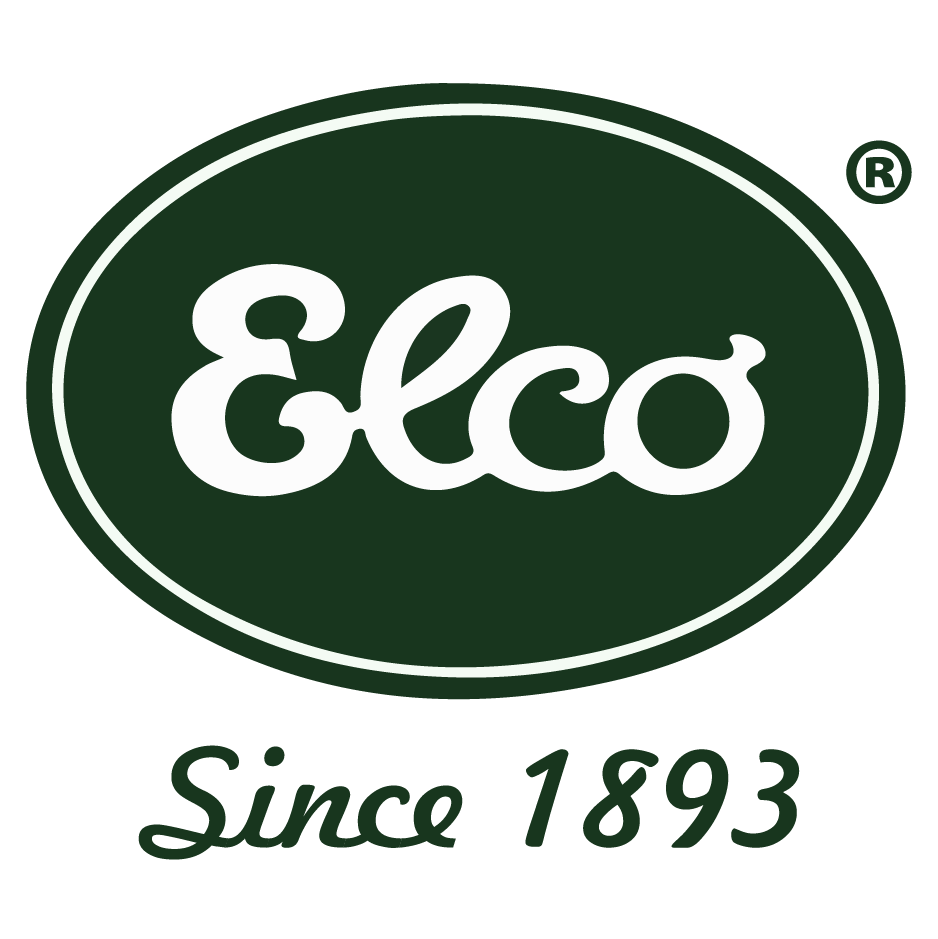
All About Electric Sailboat Motors: Efficiency & Performance
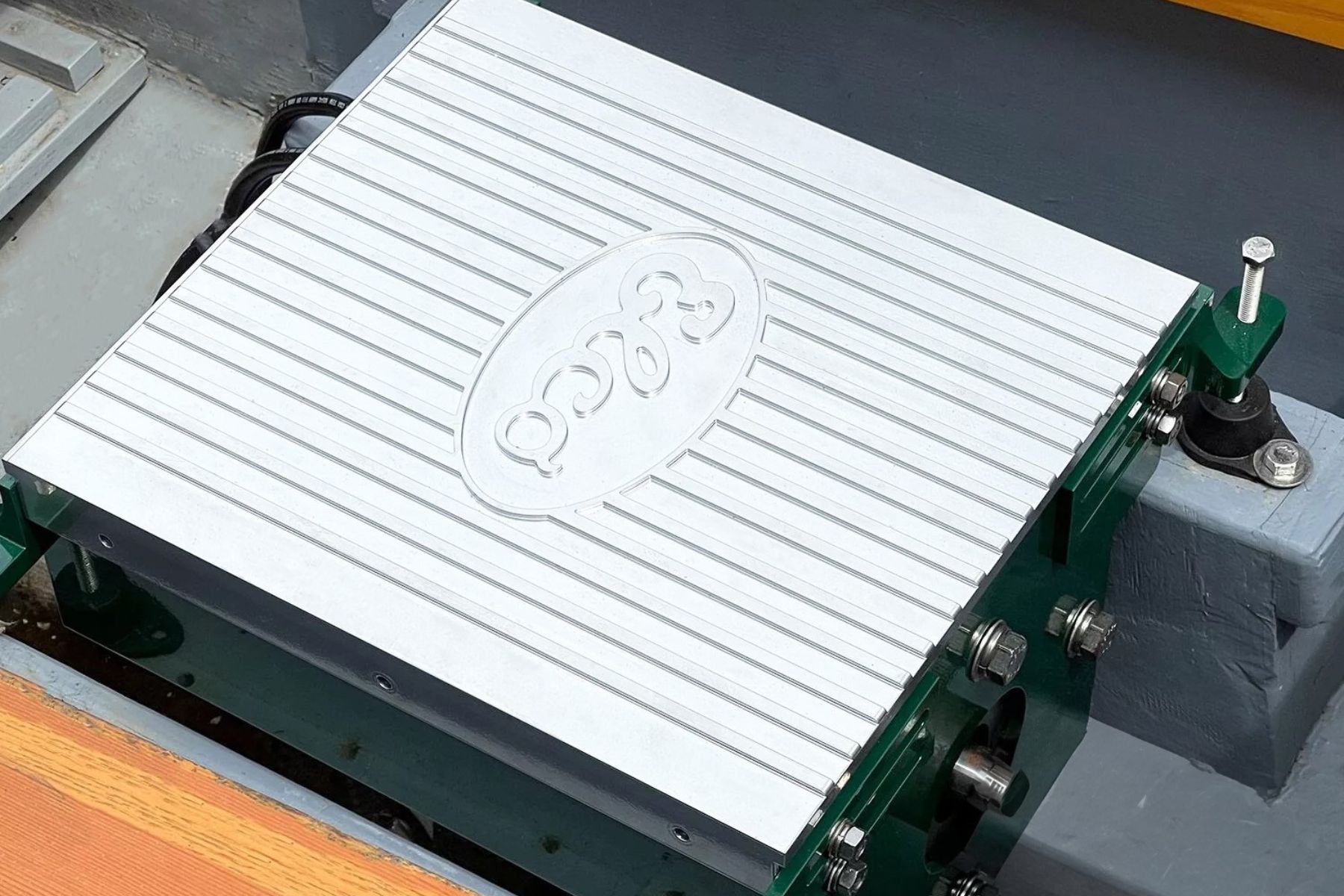
Exploring the Environmental Benefits of Electric Boat Motors
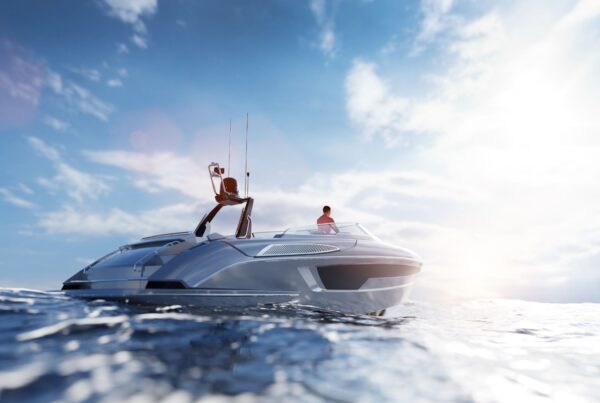
- Privacy Overview
- Strictly Necessary Cookies
This website uses cookies so that we can provide you with the best user experience possible. Cookie information is stored in your browser and performs functions such as recognising you when you return to our website and helping our team to understand which sections of the website you find most interesting and useful.
Strictly Necessary Cookie should be enabled at all times so that we can save your preferences for cookie settings.
If you disable this cookie, we will not be able to save your preferences. This means that every time you visit this website you will need to enable or disable cookies again.
- BOAT OF THE YEAR
- Newsletters
- Sailboat Reviews
- Boating Safety
- Sails and Rigging
- Maintenance
- Sailing Totem
- Sailor & Galley
- Living Aboard
- Destinations
- Gear & Electronics
- Charter Resources
- Ultimate Boat Giveaway

The Promises and Pitfalls of an All-Electric Yacht
- By Tim Murphy
- Updated: November 8, 2021
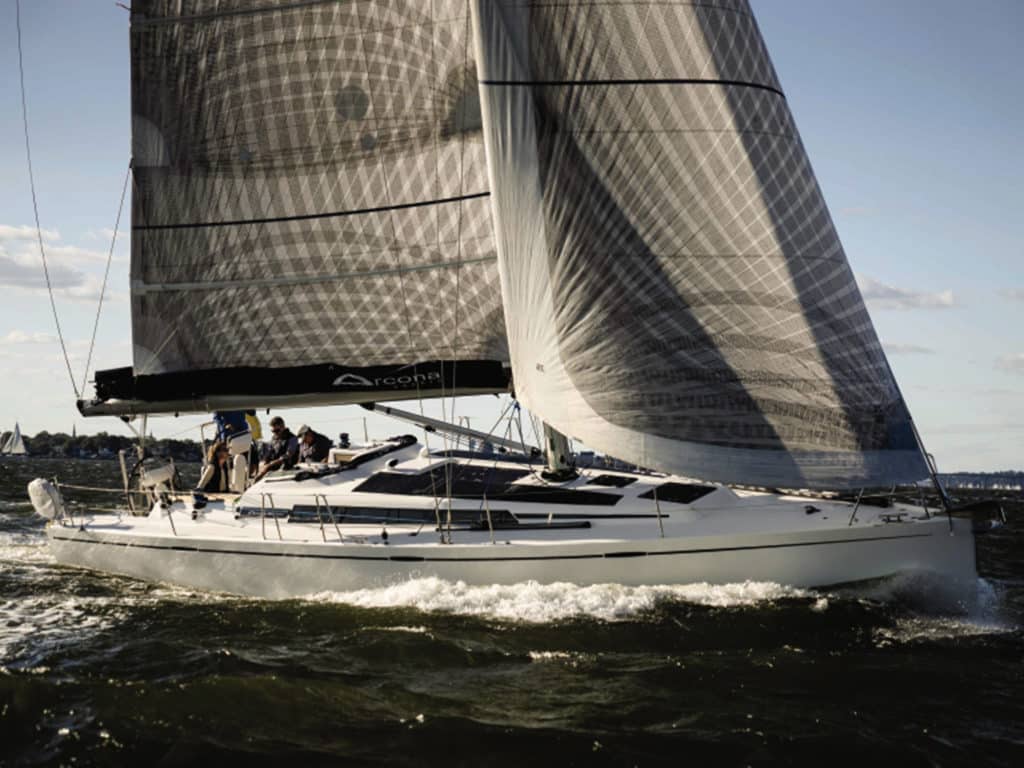
This past October, I saw one of the most interesting exhibits in more than 500 new cruising sailboats I’ve reviewed over two decades. It was the Arcona 435Z, built in Sweden and introduced by Graham Balch of Green Yachts in San Francisco. Balch describes his business as “a new brokerage dedicated to the electric revolution on the water,” and it was the “Z” in the boat’s name, which stands for “zero emissions,” that made this boat so interesting. This was the first electric propulsion system—not hybrid but all-electric —I’d ever seen on a cruising sailboat.
Electric propulsion isn’t new. Since 1879, electric motors have propelled boats; a fleet of some four-dozen electric launches transported visitors around the 1893 Colombian Exposition in Chicago. But cruising sailboats are not launches, and the open sea is not a protected canal. When we’re using cruising boats as they’re meant to be used, they seldom end their day plugged into a shore-power outlet. Cruising boats comprise many devices —stove, refrigerator, freezer, windlass, winches, autopilot, radar, lights—whose power typically comes from a tank of fossil fuel. And today’s cruising sailors are accustomed to using diesel auxiliary power to motor through lulls or punch into headwinds and seas.
Starting about 15 years ago, we saw a wave of diesel-electric and hybrid propulsion systems on production and custom cruising boats ( see “Perpetuated Motion,” CW , March 2005 ). Both of those systems ultimately start with an onboard internal-combustion engine. A diesel-electric propulsion system relies on a running genset to directly power the electric motor that turns the propeller. A hybrid system relies on batteries to power the electric motor, plus an internal-combustion genset to recharge the batteries. One of the promises of a hybrid system is the ability to regenerate electrical power. Regeneration means using boatspeed under sail to turn the propeller, whose spinning shaft sends electrons from the electric motor back through an electronic controller to recharge the batteries. In such a system, the boat’s propeller is both an electrical load (when running under power) and a charging source (when sailing in regeneration mode).
The Arcona 435Z was different from both of these systems: It incorporates no onboard fossil-fuel engine at all. Instead, it has a bank of lithium batteries, several solar panels, and a proprietary propulsion leg that looks like a saildrive. “This boat,” Balch said, “has the very first production unit in the world of Oceanvolt’s newest electric propulsion system, called the ServoProp.”
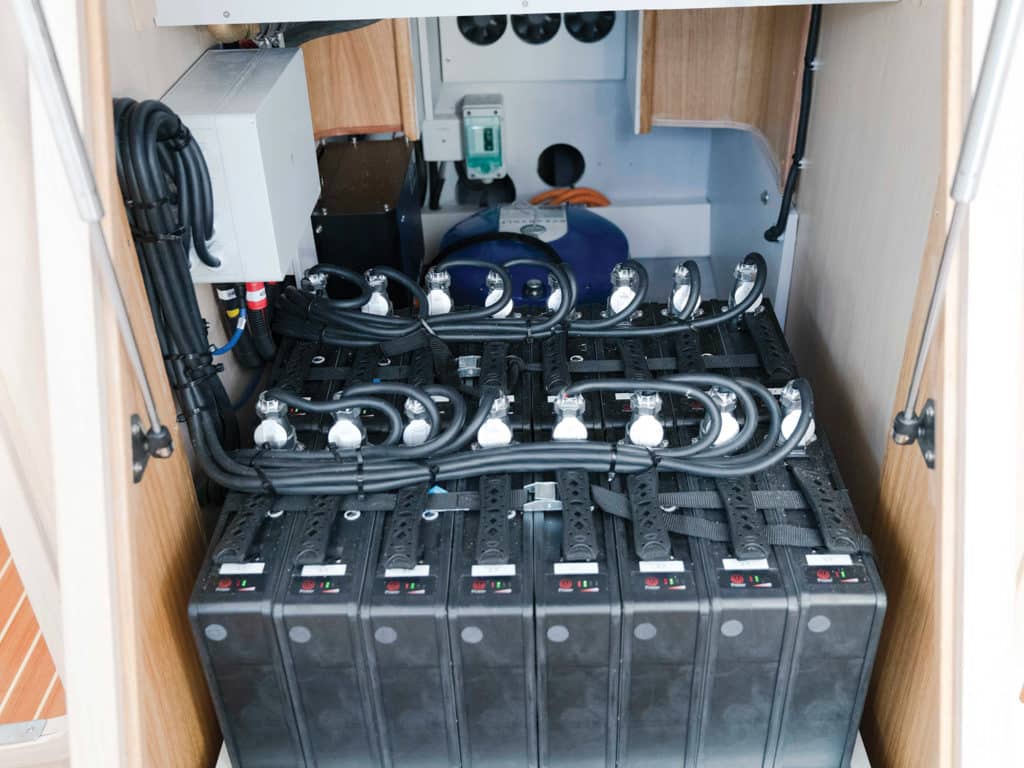
For our sea trial, Balch was joined by Derek Rupe, CEO of Oceanvolt USA. “If you can sail the boat and you have some solar, you can go anywhere in the world, and you can make all your power underway while you go,” Rupe said. When we spoke in October 2020, he touted three high-profile sailors who were using the Oceanvolt electric propulsion system: Alex Thomson, for his Hugo Boss Open 60 Vendée Globe program; Jimmy Cornell, for his Elcano 500 expedition; and Riley Whitelum and Elayna Carausu, who had been teasing their new boat for months on their popular Sailing La Vagabonde YouTube channel.
The efficiency of Oceanvolt’s ServoProp and the regeneration from it is the promised game-changer in each of these boats. The ServoProp is a leg with a feathering propeller that can be set for optimal pitch in three modes: forward, reverse and regeneration.
“You don’t need fuel,” Rupe said. “You don’t need to dock; you can go anywhere you want to go and always have the power for living and propulsion.”
That’s the promise. But are there also pitfalls?
Innovation and Risk
Marine electric propulsion is an emerging technology. Compared with the mature and settled technology of diesel engines and lead-acid batteries, electric-propulsion systems—with their electronic controllers and lithium batteries—are in a stage of development best described as adolescent. Every sailor has his or her own tolerance for technical innovation. For the promise of fewer seconds per mile, grand-prix-racing sailors willingly trade a high risk of expensive damage to the sails, rig or the boat’s structure itself; cruising sailors, by contrast, tend to favor yearslong reliability in their equipment as they seek miles per day.
Folks who identify as early adopters take special joy in the first-wave discoveries of a new technology; if they’re clear-eyed about supporting an ongoing experiment, they see themselves as partners with the developers, accepting failures as opportunities for learning. Sailors motivated primarily by changing the trajectory of climate change might be especially willing to modify their behavior to limit their own output of greenhouse gases. Investing in any emerging technology asks you to start with a clear assessment of your own risk tolerance. We’ll return to this theme with one or two real-life examples.
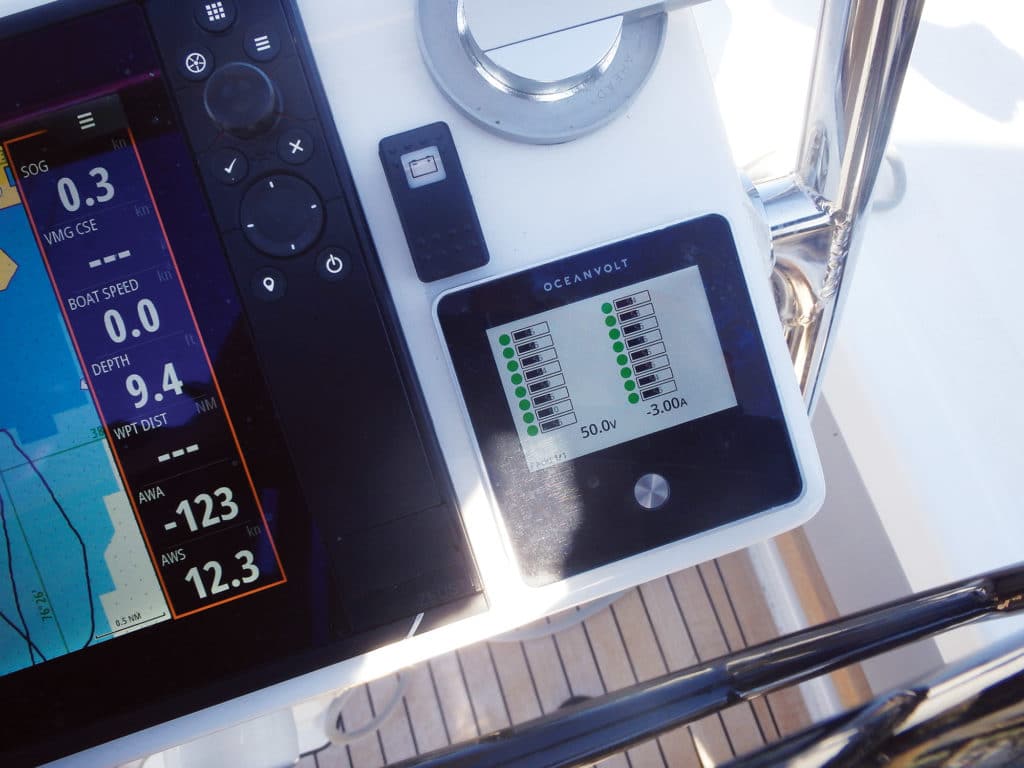
The American Boat and Yacht Council, founded in 1954, sets recommended standards for systems installed on recreational boats. For decades, ABYC has published standards related to installations of diesel and gasoline engines, as well as electrical systems based around lead-acid batteries. By contrast, it was only three years ago that ABYC came out with its first electric-propulsion standard (revised July 2021). And only last year it published its first technical-information report on lithium batteries (a technical-information report is an early step toward a future standard). The takeaway is that if you need help servicing your diesel engine or electrical system built around lead-acid batteries, you can pull into any reasonable-size port and find competent technicians to help you. With electric propulsion and lithium batteries, that pool of skilled talent is significantly scarcer.
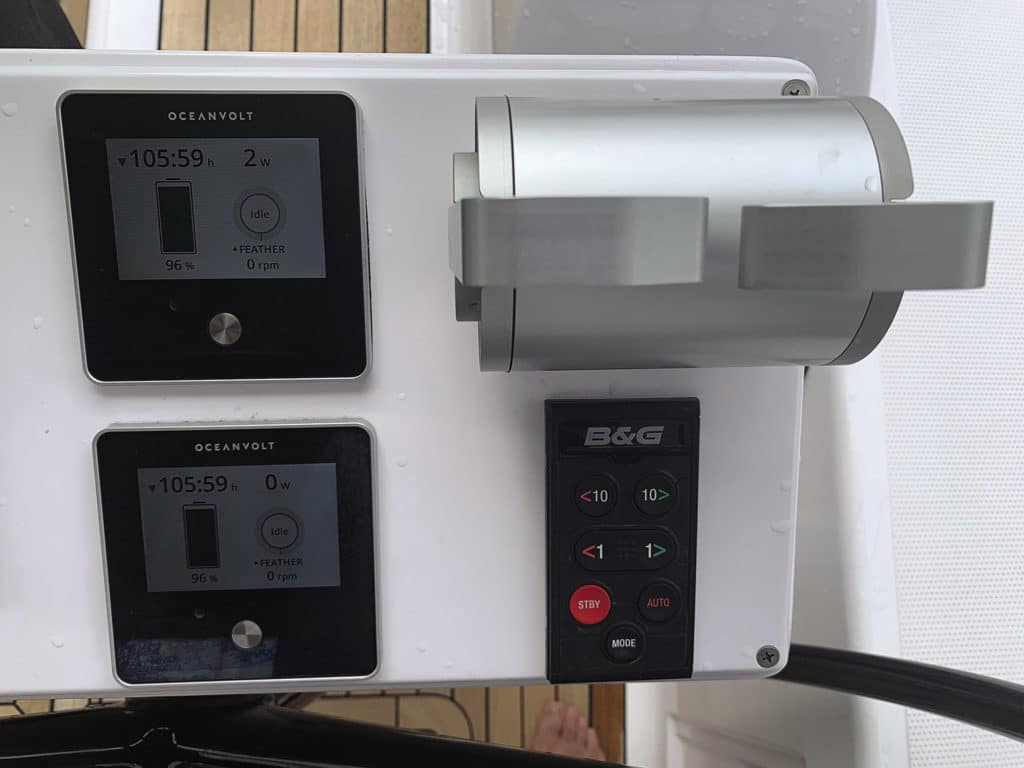
To say that a technology is mature simply means that we’ve learned to live with it, warts and all, but that it holds few remaining surprises. Certainly, diesel-propulsion and lead-acid-battery technologies each leave plenty of room for improvement. When a charge of fuel ignites in the combustion chamber of a diesel engine, some three-quarters of the energy is lost in heat and the mechanical inefficiencies of converting reciprocating motion to rotation. Lead-acid batteries become damaged if we routinely discharge more than half of their capacity. During charging, they’re slow to take the electrons we could deliver.
Lithium batteries are comparatively full of promise. Their power density is far greater than that of lead-acid batteries, meaning they’re much lighter for a given capacity. They’re capable of being deeply discharged, which means you can use far more of the bank’s capacity, not merely the first half. And they accept a charge much more quickly; compare that to several hours a day running an engine to keep the beers iced down.
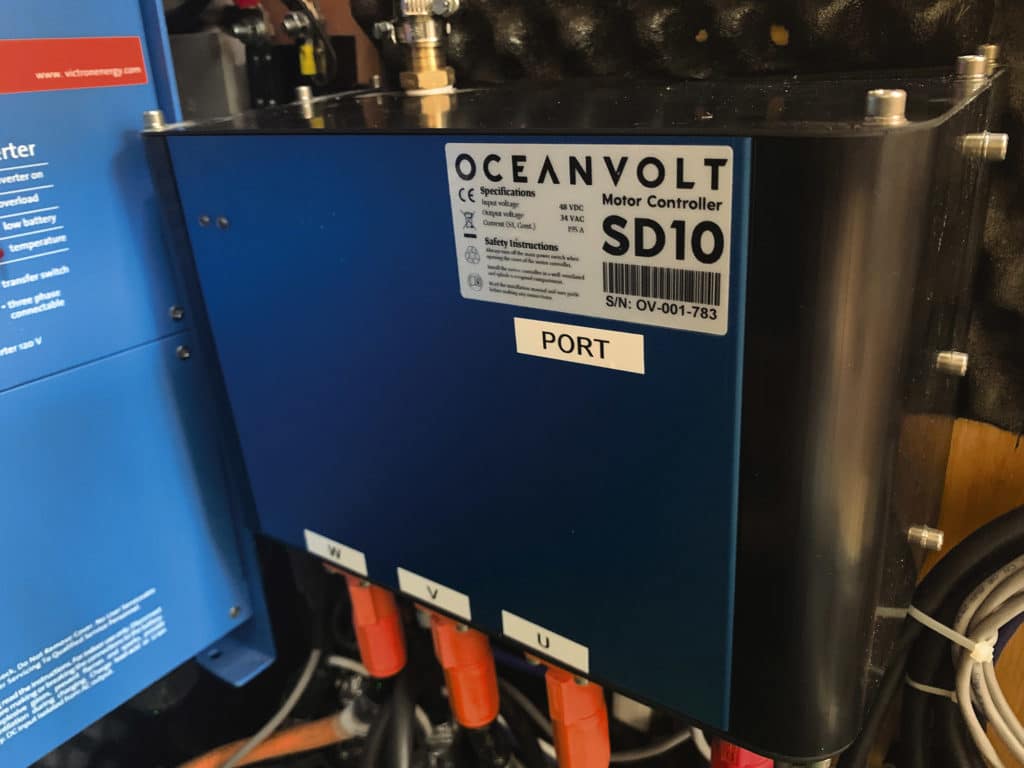
But the pitfalls? Let’s start with ABYC TE-13, Lithium Ion Batteries. Some of its language is bracing. “Lithium ion batteries are unlike lead-acid batteries in two important respects,” the report says. “1) The electrolyte within most lithium ion batteries is flammable. 2) Under certain fault conditions, lithium ion batteries can enter a condition known as thermal runaway, which results in rapid internal heating. Once initiated, it is a self-perpetuating and exothermic reaction that can be difficult to halt.”
Thermal runaway? Difficult to halt? Self-perpetuating?
“Typically, the best approach is to remove heat as fast as possible, which is most effectively done by flooding the battery with water,” TE-13 continues, “although this may have serious consequences for the boat’s electrical systems, machinery, buoyancy, etc.”
If you were following the news in January 2013, you might remember the story of Japan Airlines Flight 008. Shortly after landing at Boston’s Logan Airport, a mechanic opened the aft electronic equipment bay of the Boeing 787-8 to find smoke and flames billowing from the auxiliary-power unit. The fire extinguisher he used didn’t put out the flames. Eventually Boston firefighters put out the fire with Halotron, but when removing the still-hissing batteries from the plane, one of the firefighters was burned through his professional protective gear.
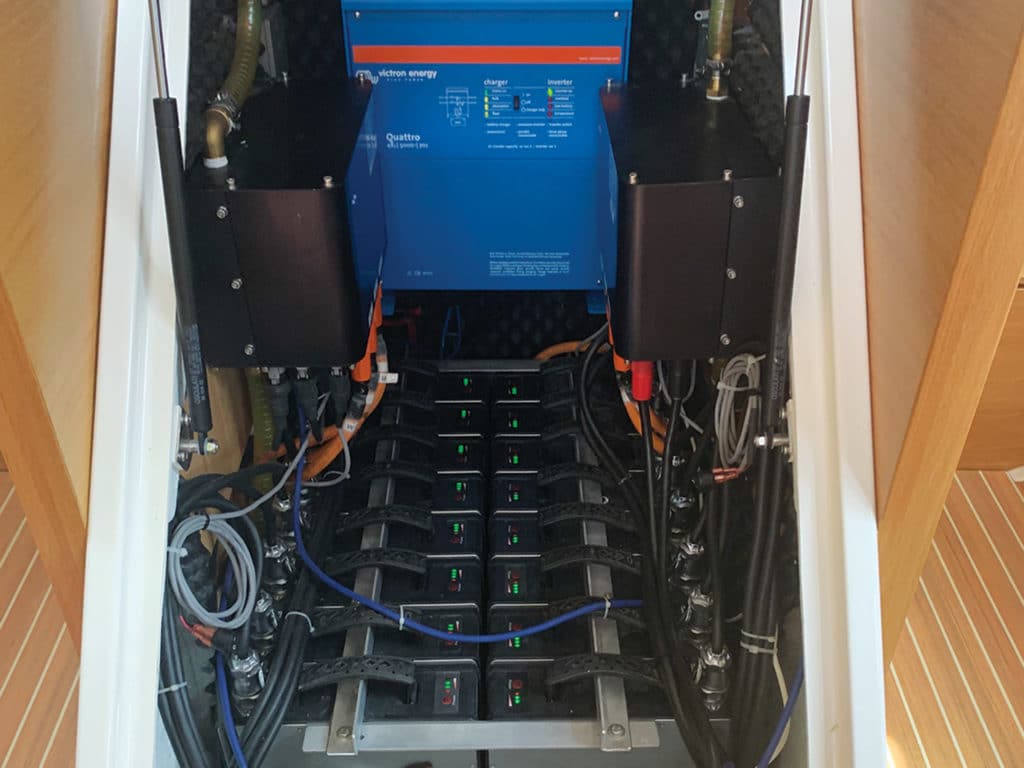
Samsung Galaxy cellphones, MacBook Pro laptops, powered skateboards—in the past decade, these and other devices have been recalled after their lithium batteries burned up. In that period, several high-end custom boats were declared a total loss following failures from lithium batteries. In March 2021, a 78-foot Norwegian hybrid-powered tour boat, built in 2019 with a 790 kW capacity battery bank, experienced thermal runaway that kept firefighters on watch for several days after the crew safely abandoned the ship.
Yes, experts are learning a lot about how to mitigate the risks around lithium batteries. But we’re still on the learning curve.
ABYC’s TE-13 “System Design” section starts, “All lithium-ion battery systems should have a battery management system (BMS) installed to prevent damage to the battery and provide for battery shutoff if potentially dangerous conditions exist.” It defines a bank’s “safe operating envelope” according to such parameters as high- and low-voltage limits, charging and discharging temperature limits, and charging and discharging current limits.
Graham Balch takes these safety recommendations a step further: “To our knowledge, the BMS has to monitor at the cell level. With most batteries, the BMS monitors at the module level.” The difference? “Let’s say you have 24 cells inside the battery module, and three of them stop working. Well, the other 21 have to work harder to compensate for those three. And that’s where thermal events occur.”
Balch followed the story of the Norwegian tour boat this past spring. He believes that the battery installation in that case didn’t meet waterproofing standards: “The hypothesis is that due to water intrusion, there was reverse polarity in one or more of the cells, which is worse than cells simply not working. It means that they’re actively working against the other cells. But if the BMS is monitoring only at the module level, you wouldn’t know it.”
On the Green Yachts website, Graham lists five battery manufacturers whose BMS regimes monitor at the cell level. “If I were sailing on an electric boat, whether it be commercial or recreational, I would feel comfortable with having batteries from these five companies and no other,” he said.
The broader takeaway for today’s sailors is that lithium batteries bring their own sets of problems and solutions, which are different from those of conventional propulsion and power-supply technologies. A reasonably skilled sailor could be expected to change fuel filters or bleed a diesel engine if it shuts down in rough conditions. With lithium-ion batteries aboard, an operator needs to understand the causes and remedies of thermal runaway, and be ready to respond if the BMS shuts down the boat’s power.
Real-World Electric Cruising Boats
When we met Oceanvolt’s Derek Rupe a year ago, he and his wife had taken their all-electric boat to the Bahamas and back the previous season. Before that, he’d been installing electric-propulsion packages for six years on new Alerion 41s and other refit projects. “My real passion is on the technical side of things—installations, really getting that right. That’s half the picture. The technology is there, but it needs to be installed correctly.”
When talking to Rupe, I immediately encountered my first learning curve. I posed questions about the Oceanvolt system in amps and amp-hours; he responded in watts and kilowatt-hours. This was yet another example of the different mindset sailors of electric boats need to hold. Why? Because most cruising boats have just one or two electrical systems: DC and AC. The AC system might operate at 110 or 220 volts; the DC side might operate at 12 or 24 volts. On your own boat, that voltage is a given. From there we tend to think in terms of amps needed to power a load, and amp-hours of capacity in our battery banks. Going back to basics, the power formula tells us that power (watts) equals electrical potential (volts) times current (amps). If your boat’s electrical system is 12 volts and you know that your windlass is rated at 400 watts, it follows that the windlass is rated to draw 33 amps.
But an all-electric boat might comprise several systems at different voltages. A single battery bank might supply cabin lights at 12 volts DC; winches and windlasses at 24 volts DC; the propulsion motor at 48 volts DC; and an induction stove, microwave and television at 110 volts AC. A DC-to-DC power converter steps the voltage up or down, and an inverter changes DC to AC. Instead of translating through all those systems, the Oceanvolt monitor (and Derek Rupe) simply reports in watts coming in or going out of the bank.
“We keep all our thoughts in watts,” Rupe said. “Watts count in the AC induction. They count in the DC-to-DC converter. They count the solar in. They count the hydrogeneration in. And the power-management systems tracks it that way for shore-power in.
“On a boat like this, maybe I have 500 watts coming in the solar panels,” he continued. “So then I can think: ‘Well, my fridge is using 90 watts. My boat has an electric stove. When I cook a big meal, I can see that for every hour we cook, we lose about 10 to 12 minutes of our cruising range.’”
During his Bahamas cruising season, Rupe observed that on days that they were sailing, the combination of solar panels and hydroregeneration supplied all the power he and his wife needed. “When we weren’t sailing,” he said, “we found that we were losing 8 percent each day, in the difference from what the sun gave us to what we were using for the fridge, lights, charging our laptops, and all that stuff.”
Rupe’s solution? “Twice in Eleuthera and once outside Major’s, we went out and sailed laps for a couple of hours because the batteries were below 30 percent of capacity. It was good sailing, and the wind was coming over the shore, so we didn’t have any sea state. We did a couple of hot laps on nice beam reaches, and generated about 700 watts an hour.”
Of the three sailors Rupe touted in October 2020—Alex Thomson, Jimmy Cornell and the Sailing La Vagabonde couple—only Cornell can report back on his all-electric experiences with Oceanvolt. Alex Thomson ended his circumnavigation abruptly last November, just 20 days after the Vendée Globe start, when Hugo Boss collided with an object in the South Atlantic. And at press time in early fall 2021, Riley and Elayna had just recently announced the build of their new Rapido trimaran; keep an eye on their YouTube channel for more about their experiences with the Oceanvolt propulsion system.
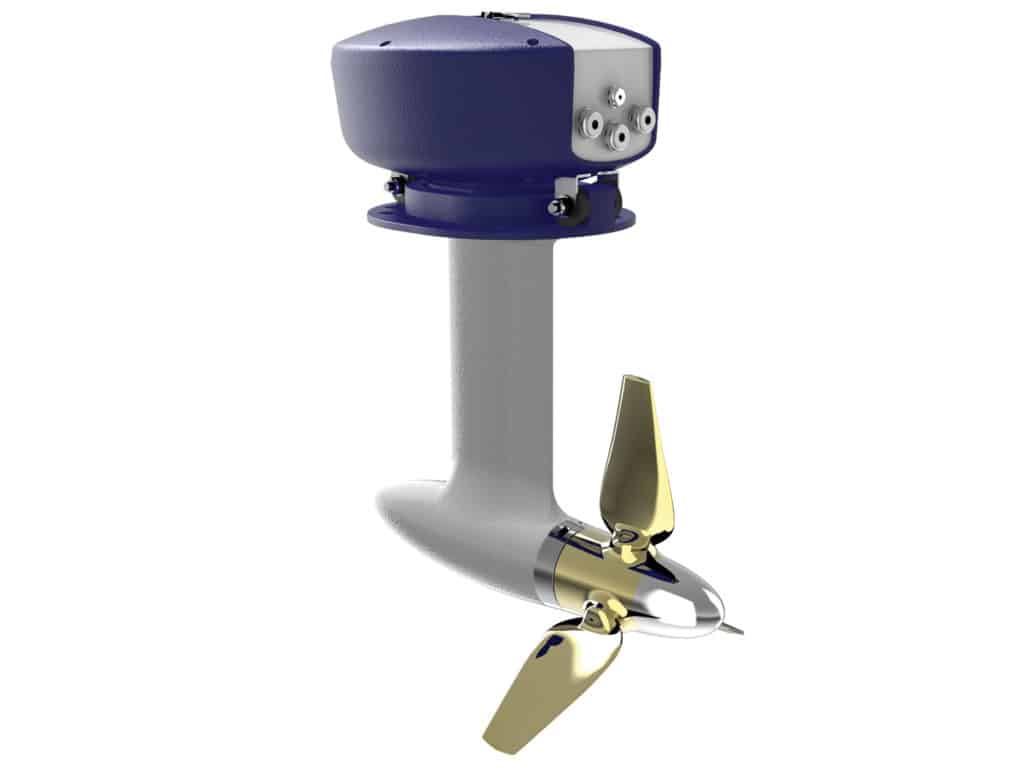
As for Cornell—circumnavigator, World Cruising Routes author, creator of the transoceanic rally, and veteran of some 200,000 ocean miles—he suspended his planned Elcano 500 round-the-world expedition solely because of the Oceanvolt system in his new Outremer catamaran. His Aventura Zero Logs on the Cornell Sailing website, particularly the Electric Shock article posted on December 2, 2020, are essential reading for any sailor interested in sailing an electric boat. “Sailing around the world on an electric boat with zero emissions along the route of the first circumnavigation was such a tempting opportunity to do something meaningful and in tune with our concern for protecting the environment that my family agreed I should do it,” Cornell wrote. “What this passage has shown was that in spite of all our efforts to save energy, we were unable to regenerate sufficient electricity to cover consumption and top up the batteries.”
Cornell’s experience in that article is raw, and his tone in that moment bitterly disappointed. We recommend it as essential reading—not as a final rejection of the electric-boat concept or of Oceanvolt’s system, or even as an endorsement of Cornell’s own decision that the system didn’t work. I suspect that I may have arrived at the same conclusion. Yet given the same boat in the same conditions, one imagines that a new breed of sailor—a Graham Balch or a Derek Rupe—may have responded differently to the constraints imposed by an all-electric boat, as nearly every cruising sailor today habitually responds to the inconvenient constraints of diesel engines and lead-acid batteries.
“If you bring electric winches, electric heads and an induction stove, and then sail into a high-pressure system, you’ll set yourself up for failure,” Balch said. “You have to balance your power inputs and your power outputs.
“Sailing an electric boat is a return to the tradition of sailing that the crutch of a diesel engine has gotten us away from,” he added. “Magellan’s fleet got all the way around the world, and they didn’t have a diesel engine.”
Tim Murphy is a Cruising World editor-at-large and longtime Boat of the Year judge.
- More: Green Wakes , Hands-On Sailor , navigation , print nov 2021 , sailboat review , Sailboat Reviews
- More Sailboats

For Sale: 1984 Camper & Nicholsons 58

Alubat Updates OVNI Models

For Sale: Little Harbor 63 Ketch

Sailboat Review: Fountaine Pajot Aura 51
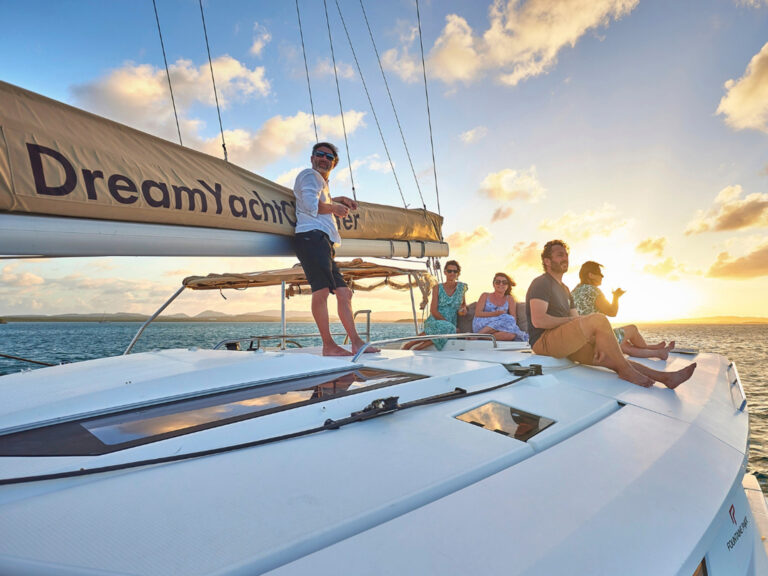
Options To Explore

Cruising Tahiti: A Party in Paradise
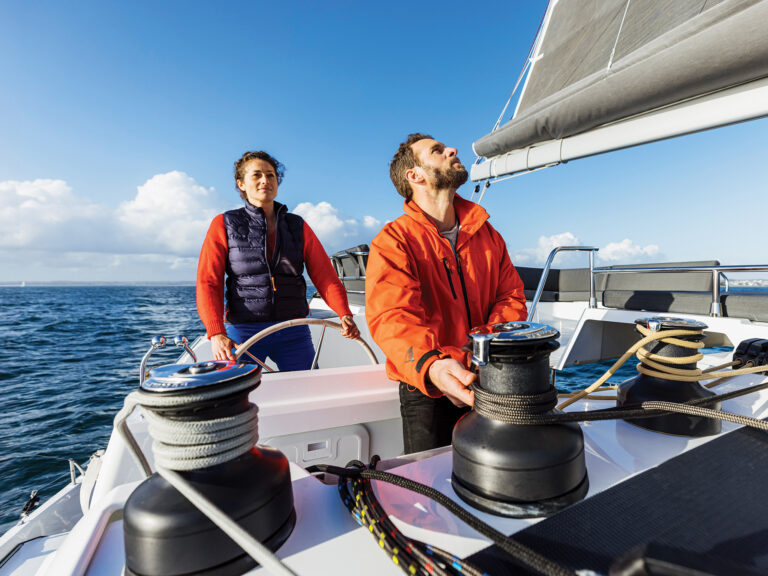
- Digital Edition
- Customer Service
- Privacy Policy
- Terms of Use
- Email Newsletters
- Cruising World
- Sailing World
- Salt Water Sportsman
- Sport Fishing
- Wakeboarding
- 2024 BOAT BUYERS GUIDE
- Email Newsletters
- Boat of the Year
- 2024 Freshwater Boat and Gear Buyers Guide
- 2024 Boat Buyers Guide
- 2024 Water Sports Boat Buyers Guide
- 2024 Pontoon Boat Buyers Guide
- Cruising Boats
- Pontoon Boats
- Fishing Boats
- Personal Watercraft
- Water Sports
- Boat Walkthroughs
- What To Look For
- Watersports Favorites Spring 2022
- Boating Lab
- Boating Safety
- Ultimate Boat Giveaway

Four Electric Boat Motors Compared
- By Randy Vance
- Updated: September 17, 2020
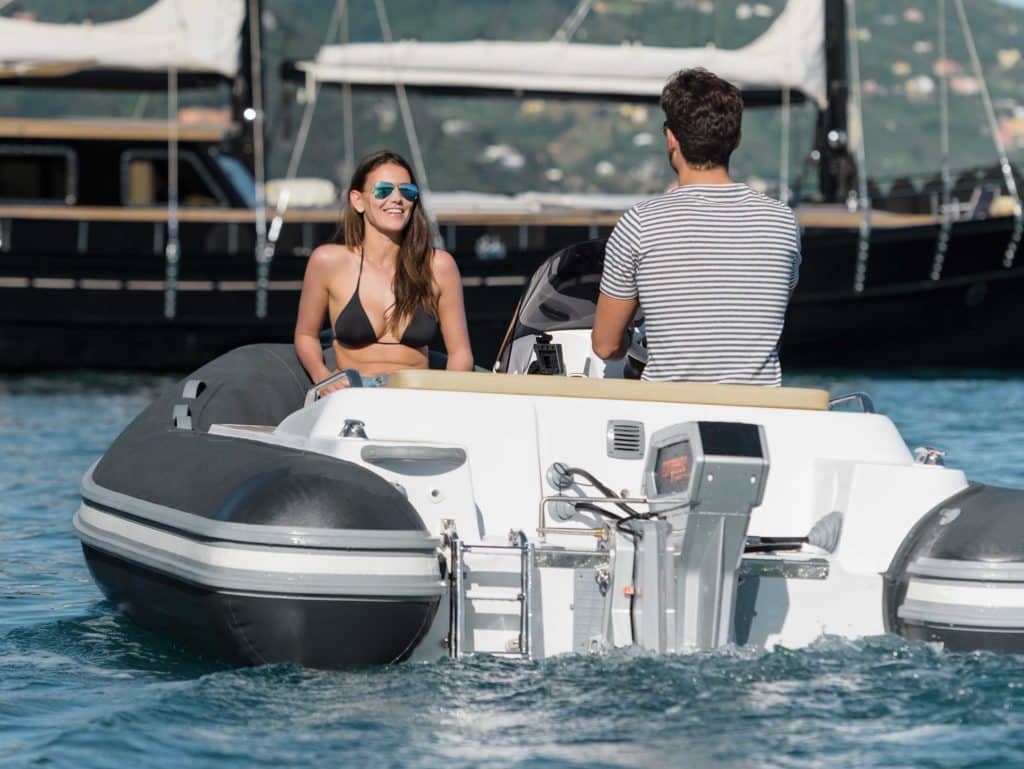
Electric marine propulsion is rapidly advancing in market share while providing a fun and unique boating experience not available from internal combustion power.
Electric Motors Then
You might be surprised to learn that electric boats have been around since 1838. Inventors from Prussia, England and America began making vessels with lead-acid batteries—tons of lead-acid batteries per vessel—to move passengers quietly and efficiently. But the internal combustion engines invented in the late 1800s were more powerful and convenient, and with the exception of Elco electric motors, electric power fell away in popularity. In 1934, Minn Kota manufactured the first electric outboard. Then, in the 1960s, bass tournament fishing popularized big-horsepower gas engines for speed, and electric trolling motors for precise boat handling. You might say the fishermen were ahead of the curve by about 60 years on hybrid boats.
Electric Motors Today
We are focusing on production models that can be easily installed by a do-it-yourselfer or OEM without special training. Lithium-ion batteries can be volatile if not properly installed, so some companies require their trained tech to do that.
Electric outboards are expensive, and while we’ve listed the purchase cost, the batteries available are too numerous to name or price, and can cost more than the motor.
A mathematic equation easily converts kilowatt-hours to horsepower, and our math revealed the calculated horsepower to be considerably less than the equivelant horsepower suggested by manufacturers.
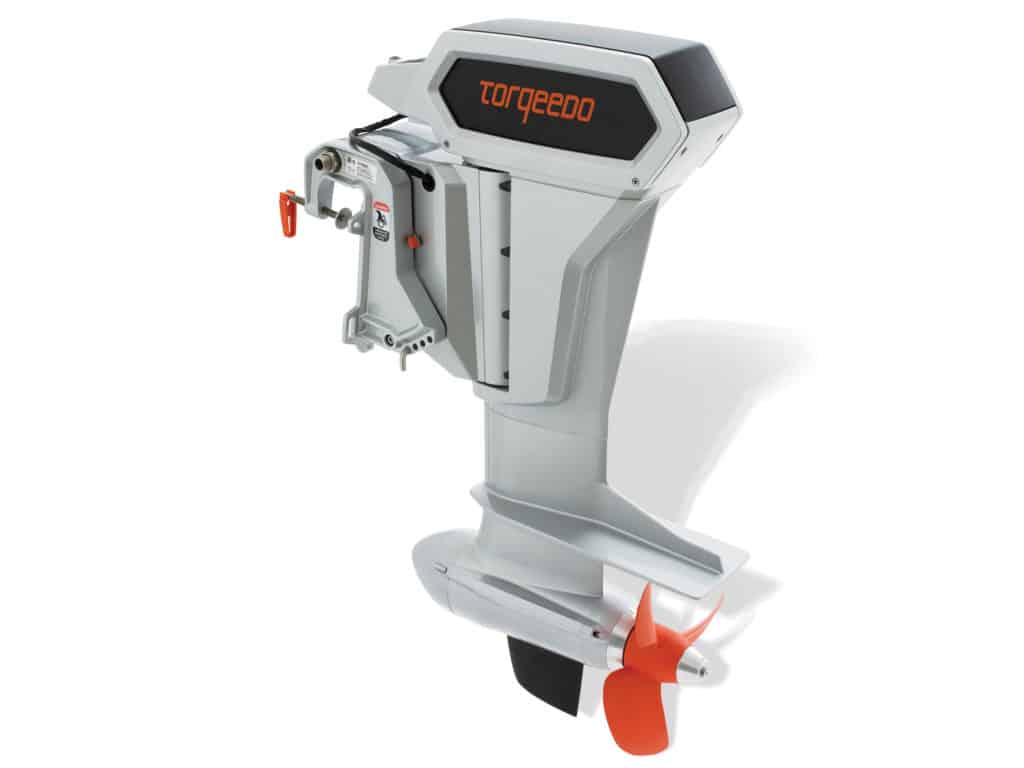
Torqeedo provides completely integrated motor, battery and controls. Electronically controlled systems give its motors greater range per battery capacity and, similar to a fuel gauge, help operators conserve energy when needed or tell them when they can splurge on maximum throttle. The batteries are provided by BMW, but it is Torqeedo’s control system that manages output, heat and recharge operations to protect and optimize battery capacity and motor performance.
Range of Power: Outboards from Ultralight 403 at 400 W (about 1 hp) to Deep Blue at 50 kW (about 80 hp equivalent with 20 percent hole-shot boost), and inboards up to 100 kW (about 135 hp).
Most Popular Motor: Torqeedo’s Cruise 10 ($8,999) puts out 10 kW, or about 14 hp, but performs comparably to a 20 hp outboard thanks to Torqeedo’s software. In remote control, it is popular among pontoon boaters in particular, and commonly installed on pontoons used on neighborhood lakes requiring electric propulsion. Through digital controls, peak output is boosted beyond nominal output for a short time to improve acceleration at the hole shot, then returns to nominal output for optimal heat, range and speed control. A side- or top-mount controller—akin to the throttle—will cost $1,399, by the way.
Best Battery: The Torqeedo 48-5000 (5,000 Wh) lithium-ion battery ($5,159) is rated IP67 waterproof; connecting two or more in parallel extends the range.
Battery Compatibility: Compatible with any lithium-ion or AGM battery bank providing 48 volts, the Torqeedo can only operate in smart mode, measuring discharge, heat and other factors to dynamically manage power with Torqeedo batteries. With nonproprietary battery banks, Torqeedo motors mathematically, and less accurately, estimate range and consumption.
Chargers: The 2213 charger ($899) can recharge a 48-5000 battery in under 10 hours. It is rated IP65 water-resistant. The 2212-10 charger ($2,199) can recharge it in two hours.
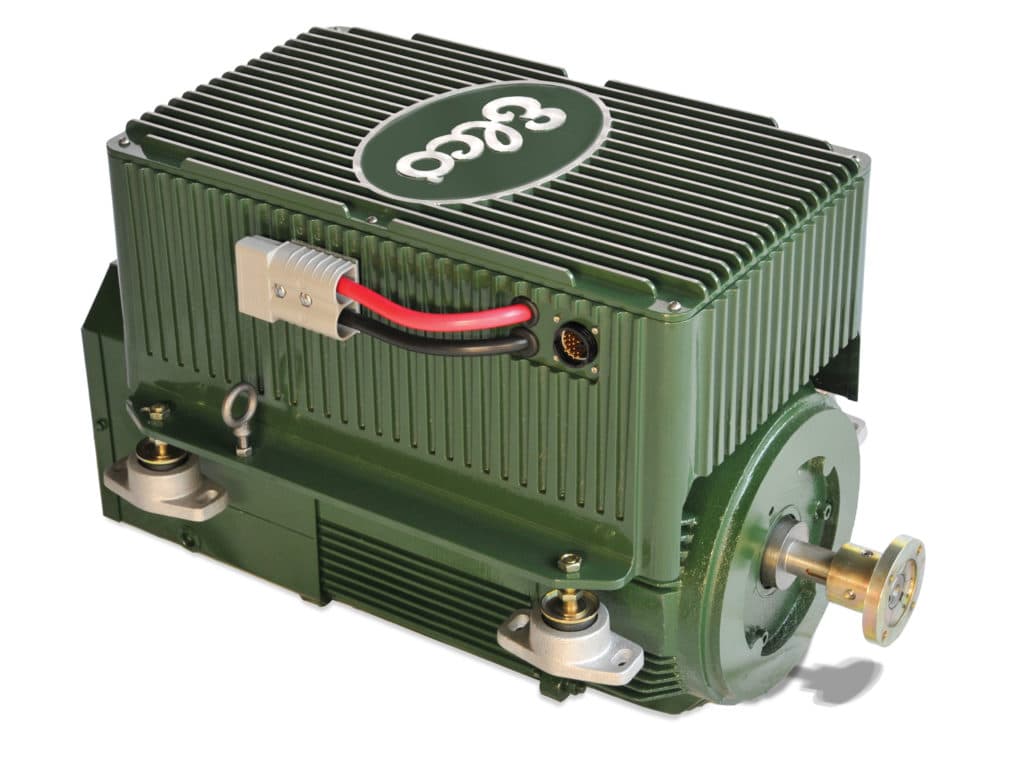
Elco Motors
Elco has been building electric outboards for over 100 years—a figure that seems implausible to boaters who are beginning to see electric propulsion for the first time. The company’s engineering philosophy has remained the same: build plug-and-play systems, relying on battery power preferred by the customer, and design its motors to fit existing motor mounts, or provide standard transom clamps to make repowering simple and seamless.
Range of Power: Elco builds electric outboards with tiller or remote controls from 3.7 kW (about 5 hp) to 37 kW (about 50 hp). Elco’s inboards range from EP 6 to EP 100, with horsepower equivalents from 6 to 100.
Most Popular Motor: The EP 70 inboard ($15,995) can replace inboard diesel kickers and trawler motors, providing a top speed of 8 to 10 mph (7 to 8.5 knots) and a range of 23 to 41 miles. Its peak output is 51.5 kW (about 69 hp), and continuous output is 29.75 kW (about 40 hp). It needs nine 8-D 12-volt AGM batteries for a total of 108 volts. Lithium-ion batteries are also compatible in comparable volts and amps.
Best Battery: Battery banks from Lithionics are most commonly selected for new builds, and an EP-12 Victron AGM Deep Cycle 12V/220Ah bank is ideal ($5,409).
Battery Compatibility: Elco batteries are completely brand agnostic and connect with any quality battery bank providing the motor’s power demand. However, lithium-ion batteries still provide the most efficiency, along with full power to complete discharge. Even though their upfront investment is often more than double that of AGM batteries, the cost per charge is comparable while also lightening the boat and bringing better performance and range.
Chargers: The ElCon UHF3300 (1x) charger (starting at $825) takes three to four hours to restore battery banks, and the PFC 5000 fast charger reduces the time to two to three hours.
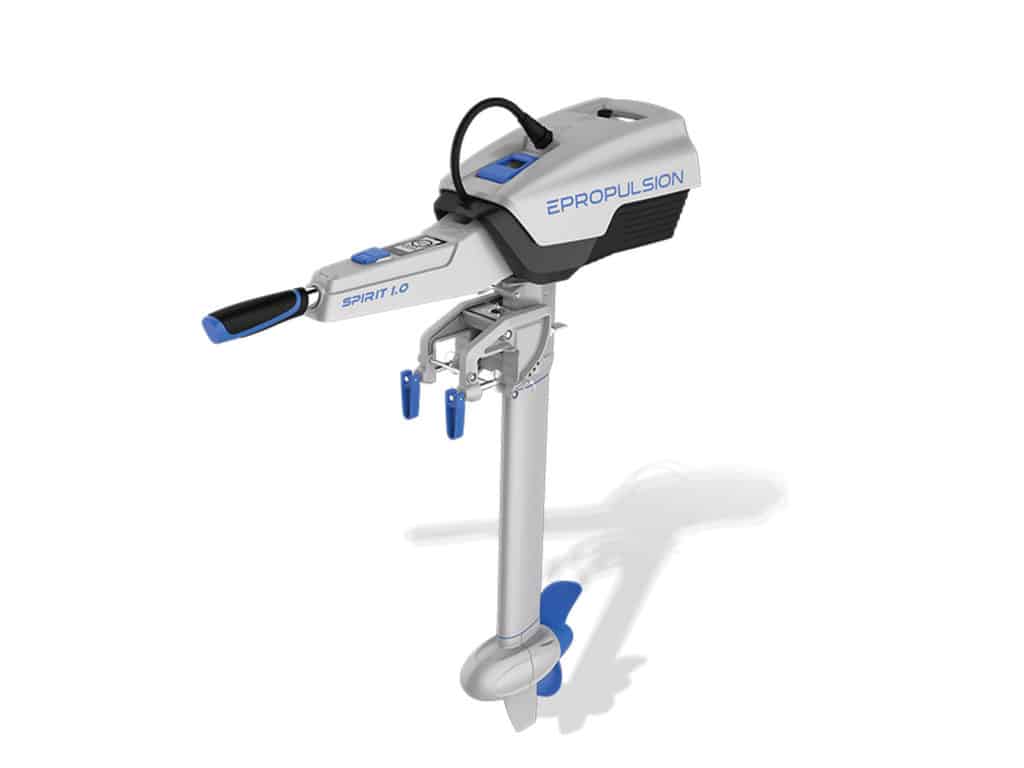
ePropulsion
This company boasts five electric propulsion systems engineered at the Hong Kong University of Science and Technology, and entered the market in 2013. HKUST is also known as the incubator of many electronic products, including the DJI drone. Persistent engineering has brought new innovations to the marketplace.
Range of Power: The smallest offering from ePropulsion is a strap-on stand-up-paddleboard motor. Mainstream power includes two large outboards boasting 1 kW (about 1.35 hp) and 3 kW (about 4 hp) power, two pod drives of the same output, and the most popular portable Spirit 1.0 Plus.
Most Popular Motor: The Spirit 1.0 Plus ($1,999 including charger) is ePropulsion’s top-selling motor, ideal for small vessels, square-stern canoes, tenders and more. It’s a 1 kW motor that the company says offers 3 hp equivalent power with an industry-first direct-drive brushless motor. That’s a quiet arrangement, making the motor lighter and more efficient. It’s got a 75-minute run time at full speed, making 22 miles on a quickly exchangeable, integrated and included floating battery. Take a spare battery ($899) for longer range.
The Navy 3.0, ePropulsion’s latest motor, is 3 kW, or about 4 hp, though ePropulsion claims 6 hp equivalence. It’s available in tiller-steered and remote-control models. Its direct-drive, no-gear-case motor was a breakthrough in electric outboards, using a brushless motor that produced less sound and drag, and increased power and efficiency, offering a more serene experience.
Best Battery: There are three E-Series 48-volt batteries offered: The E40 ($1,200) provides 2,048 Wh, the E80 ($2,000) provides 4,096 Wh, and the E175 ($4,000) offers 8,960 Wh. The data-cable connections in ePropulsion batteries give battery management, enhancing range and speed.
Read Next: ePropulsion Lithium Iron Batteries
Chargers: Chargers available from ePropulsion are 10-, 20- and 30-amp modes ranging from $300 to $620.
Read Next: Learn About Garmin and Lowrance Electric Motors
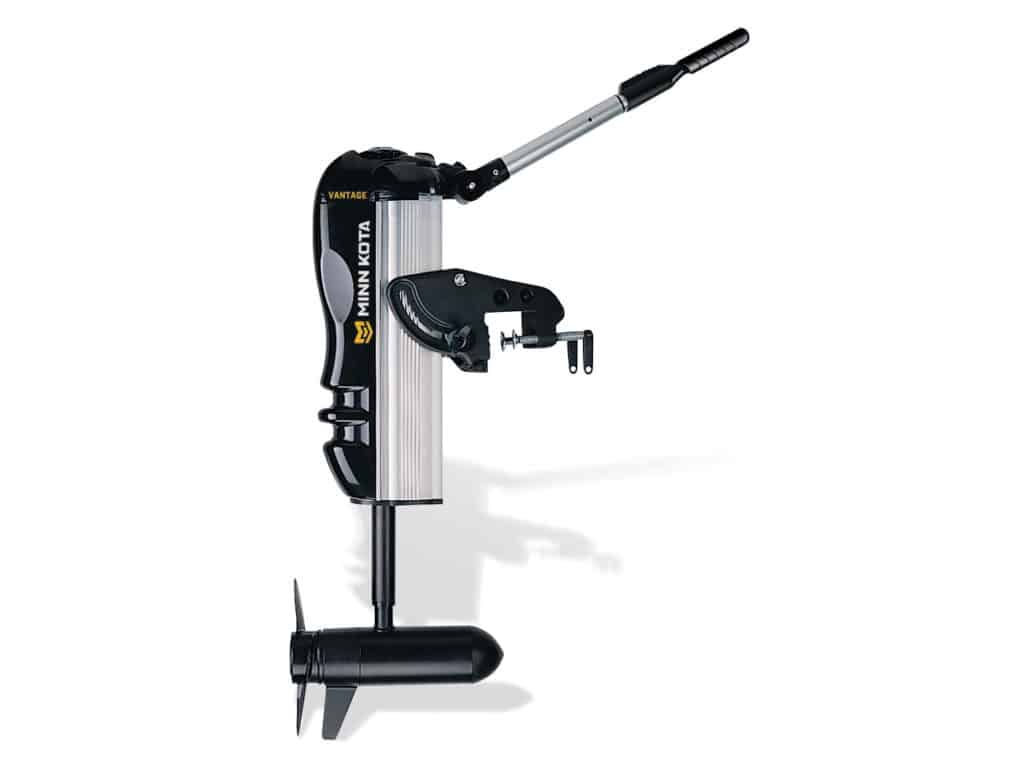
Minn Kota Motors
Minn Kota has been making electric outboard motors since 1934, and its first model was a gear-driven, transom-mounted motor with a tiller. As time progressed, it improved motors slowly until the tournament bass-fishing craze began in the early 1960s. In that time, the motors have been popular as primary propulsion for dinghies and utility boats used for tenders, or positioning the boat for casting.
Range of Power: Models today range from simple tiller- steered motors to digitally remote-controlled motors complete with autopilot features and smartphone compatibility. The Vantage is the company’s primary propulsion motor.
Most Popular Motor: The Vantage ($1,549.99) is not Minn Kota’s most popular motor, but it’s a top contender in the boat market where electric propulsion is desired or required. The tiller-steered Vantage is ideal for use as a kicker for trolling, or propulsion for a tender or small johnboat. The variable-speed motor is digitally controlled to manage and conserve power for optimum range. Forward, neutral, reverse, and power trim to raise it are easily accessible on the tiller of this 24-volt motor. For some reason, Minn Kota does not list specs such as amps, kilowatts or watt-hours.
Best Battery: Minn Kota doesn’t offer batteries, but the motor is compatible with any battery bank producing 48 volts.
Battery Compatibility: Lead-acid, wet-cell batteries are still the most commonly used for small electric motors, but AGM (absorbed glass mat) batteries are more durable, offer more charge cycles, and are quickly replacing wet-cell batteries. Lithium-ion batteries shave 75 percent of the weight of lead-acid batteries, deliver full power to total discharge, and are actually more economical per charge cycle in spite of a 100 percent premium over AGMs.
Chargers: An MK 345 PC Precision Charger ($449.99) provides three-bank charging at 15 amps per bank.
- More: Boats , elco , electric boats , Engines , epropulsion , minn kota , torqeedo
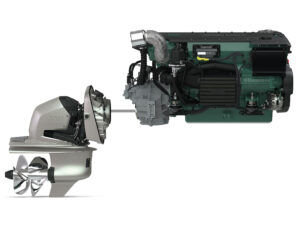
Volvo Penta D6 Diesel DPI
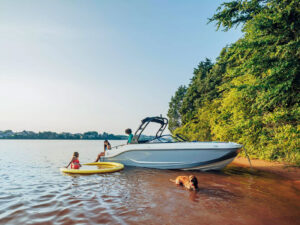
Bayliner 2024 D Series Deckboats Debut
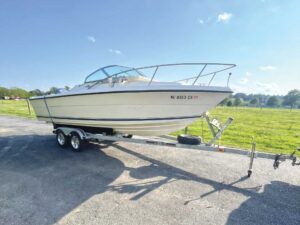
Is Your Trailer Right for Your Boat?
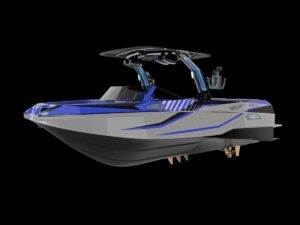
Genesis Marine Technologies 24: Our First Impression
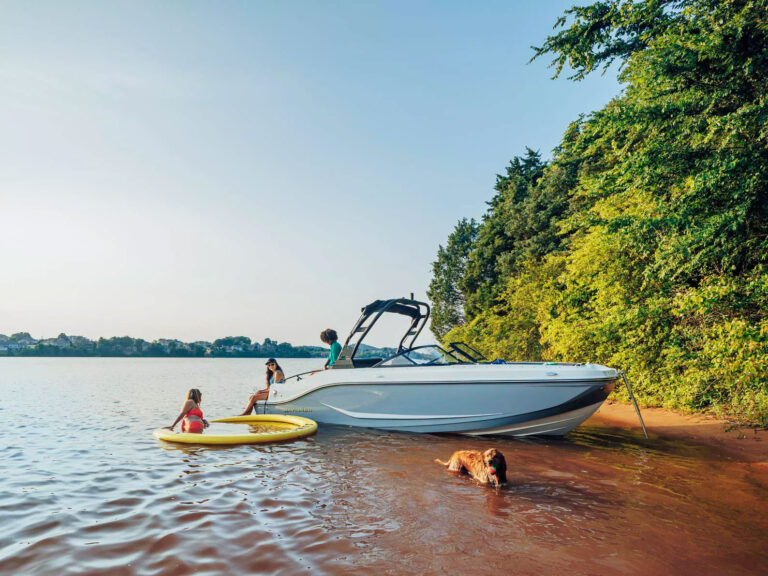
How to Choose a Trailer Winch

Best Non Skid Boat Deck Paint

- Digital Edition
- Customer Service
- Privacy Policy
- Terms of Use
- Cruising World
- Sailing World
- Salt Water Sportsman
- Sport Fishing
- Wakeboarding
Many products featured on this site were editorially chosen. Boating may receive financial compensation for products purchased through this site.
Copyright © 2024 Boating Firecrown . All rights reserved. Reproduction in whole or in part without permission is prohibited.
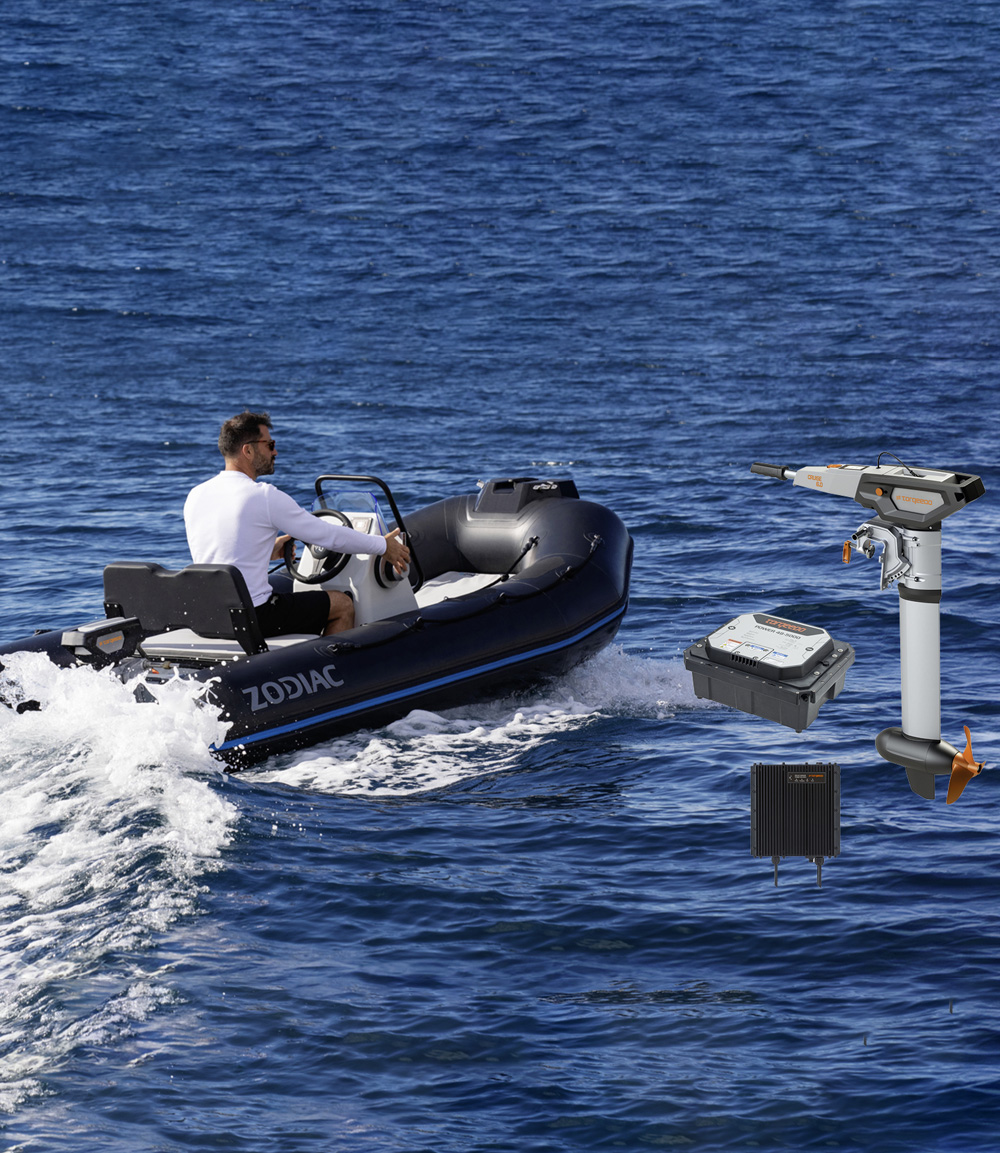
JavaScript functionality for your browser has been deactivate. Please activate JavaScript so you can use all functions on this page.
Sailboat Kits & Accessories
- Motorcycle & Kart Kits
- AC & Large Motor Kits
- Gear Reduction & Motor Plates
- Battery Management Systems
- Chargers & Accessories
- New Lithium Batteries
- Used Lithium Batteries
- DC-DC Converters
- Displays and Instrumentation
- Throttle Controls
- Motors DC and PMAC
- Motor Brushes & Encoders
- Sevcon Controllers
- Curtis Controllers
- Alltrax Controllers
- Programmers
- Cooling, Heating & Pumps
- Connectors & Wiring
- Contactors & Switches
- Garage Sale
- Warehouse Overstock Sale
- Vehicle Control Unit (VCU)
- Our Company
- Why Choose ThunderStruck
- Conversions
- Electric Vehicle Books
- Recommended Links
- Return/Cancellation Policy and Warranty Information
- Support Request
- Ask a general question...
- Installation

- Newest Items First
- Sort Alphabetically: A to Z
- Sort by Price: Low to High
- Sort by Popularity
- Sort by Bestselling
- 12 Per Page
- 48 Per Page
- 96 Per Page

© 2004 - 2024 Thunderstruck Motors. Powered by Ecommerce software with PayPal
Superyacht Australia
Marine lifestyles and evoy deliver high output electric boat motors.
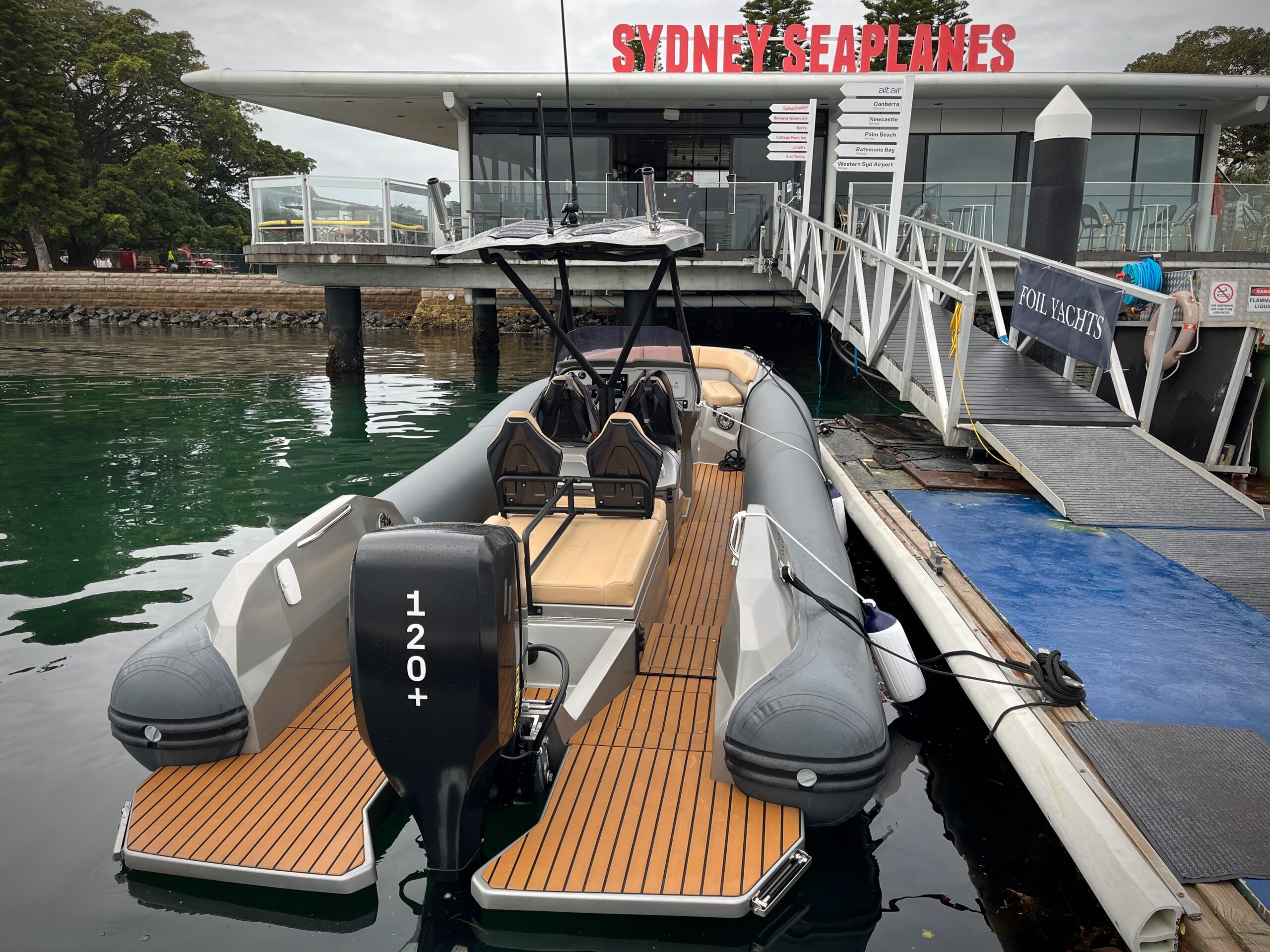
Marine Lifestyles appointed as Evoy dealer for Australia and the Pacific
SYDNEY, AUSTRALIA – 14 AUGUST 2024 – Marine Lifestyles today announced at a launch event at Sydney Seaplanes Empire Lounge in Rose Bay that it had been appointed by Evoy® as their dealer for Australia, New Zealand and the Pacific region.
Marine Lifestyles, based in Sydney and Perth, Australia, has been appointed for the commitment it shares with Evoy® to accelerating the transition to emission free, blissfully quiet and sustainable boating.
Evoy®, founded in 2018, is based in Florø, Norway and delivers long-lasting inboard and outboard Electric Boat Motor systems ranging from 120-400 hp continuous power. Evoy® has 50 employees from 13 different countries and has sales to 20 different countries. Boats powered by Evoy® systems have now covered 38,000 nautical miles of proven performance and reliability.
Norway has led the world’s adoption of electric cars. Evoy® and Norway will lead the world’s adoption of electric boats. Marine Lifestyles will partner with Evoy® to lead the way in the Oceania region.
Marine Lifestyles will be offering Evoy electric boat motor systems to boatbuilders, boat dealers, commercial and government users, as well as private individuals looking to make the switch to sustainable boating. They will be supporting both new builds and re-powering.
At the launch event, Mads Roland-Glimsholt, Evoy’s® Business Development Manager – Commercial and Stephen Hennessy, managing Director of Marine Lifestyles, met with key stakeholders in the Australian maritime industry, and announced the dealership, while presenting Evoy’s® cutting-edge technology.
Mads led an interesting discussion about the various efforts by governments around the world to promote emission-free boating, highlighting the strong tailwinds from regulatory environment. There is a strong push in North America and Europe to electrify commercial & recreational boating. This is being achieved by a combination of government incentives and grants with bans on fossil fuel boats in certain waterways. There are lessons here for Australian authorities.
After the presentation, several attendees braved the rainy conditions for a sea trial of the Evoy® Breeze 120+ outboard motor on a brand-new Foil Yachts Electrofoil 29 hydrofoil-assisted RIB. The overwhelming response was enthusiasm for the instant torque, lack of emissions and quietness of the engine.
“It was a great presentation, Mads Roland-Glimsholt, and the audience was very engaged,” said Angus McDonald, CEO of Maritime Impulse and Chair of the Maritime Emissions Reduction Coalition Steering Committee.
“Thanks for Wednesday’s insight into the Evoy® motors and the sea-trial – a great morning and very insightful. It was good to meet you and your team. I look forward to catching up in the future and working together to drive forward some new tech and more sustainable boating,” said Ross Turner, General Manager of Eyachts.
“It’s fantastic that Marine Lifestyles is bringing Evoy® electric propulsion to Australia. Evoy is the market leader for high powered, fully electric inboard and outboard engines. On top of zero-emissions and super quiet boating, Evoy®’s greatest advantage is they can be fast charged, just like electric cars. This makes Evoy® the perfect motor for new boats, as well as re-powering existing boats,” said Chris Cudlipp, CEO of Seavolt, who are building electric charging networks across the world’s ports and waterways.
Mads Roland-Glimsholt from Evoy®, who delivered the presentation, said, “Thank you to all the participants for their valuable insights and engagement, and special thanks to Stephen Hennessy and Marine Lifestyles for hosting the event at Sydney Seaplanes.”
Stephen Hennessy, Managing Director of Marine Lifestyles, said, “We are excited about being Evoy®’s dealer for Australia and New Zealand and look forward to promoting sustainability and decarbonisation in the maritime sector.”
About Marine Lifestyles
Marine Lifestyles is a leading supplier of electric powered marine products in Australia and the Asia-Pacific region. We believe in ensuring that the marine environment is protected and nurtured so the people can enjoy their marine lifestyles into the future. Our environment is in danger, and our use of fossil fuels must diminish. The move to electric power has gained huge momentum in the automotive industry and the same will happen in the marine world.
We started by focusing on electric and human powered technology with the products we sell and operate in our water sports division, Water Sports Central. We are now extending this focus into sustainable boating and high-powered marine propulsion.
Our Foil Yachts electric and conventional vessels offer breathtaking performance and efficiency and are the ideal platform for electric boating.
Evoy®’s vision is to deliver an irresistible boating experience by developing sustainable electric motor systems to accelerate the shift to emission free electric boating. Evoy® develops longer-lasting, sustainable motor systems that reduce CO2 emissions at sea.
Just imagine boating with no engine sounds except the flow of water. No smelly fumes leaking into the atmosphere. Enjoy your voyage as it should be enjoyed – in harmony with the surrounding nature and wildlife, feeling free and at ease with your loved ones.
That is what we call the Evoy® Experience.
Contact Information
Marine Lifestyles Pty Ltd
Stephen Hennessy
+61 414 817 241
Taraneh Ghajar Jerven
+47 906 18 607
Member's Updates
Revo sunglasses announces premium partnership with hamilton island enterprises for race week and endurance series events, longhurst family inducted into queensland business leaders hall of fame, australia indepth documentary.

Superyacht Australia in partnership with superyachts.com is pleased to present ‘Australia InDepth’, a series of informative short documentary films on the vast and incredible destinations on offer when cruising in Australian waters and the world-class service capabilities available to support visiting vessels..
CLICK HERE FOR FURTHER INFORMATION
MARINE JOBS
Marine Jobs is an online ‘career centre’ designed to make it easier for employers to advertise vacancies and for people to find the right job for them in the marine industry. This new industry jobs platform provides a range of career resources, including information on apprenticeships and industry training, writing a resume and preparing for an interview.
Click on the link below to see what jobs are now available.
Marine Jobs
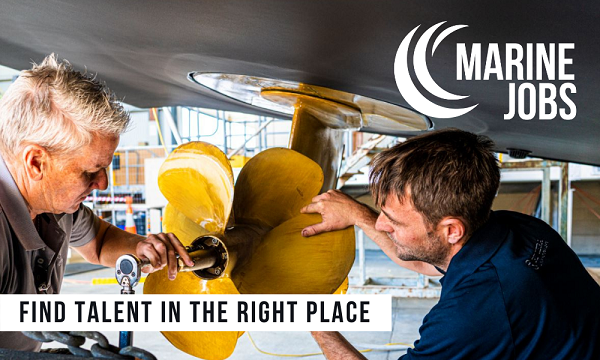

Supported by

Upcoming Events
Australia fiji rendezvous, south pacific superyacht rendezvous, gold coast marine jobs & careers expo 2024, monaco yacht show, fort lauderdale international boat show, join our email list.
New electric boat motors from Mercury Marine coming soon to a lake near you
The avator series ranges from 3 to 15 hp.
LAS VEGAS — And now something from sister site Aquablog (kidding), Mercury Marine is showing off electric boat motors at CES. Its 7.5e is already available, but new are the 20e, 35e, 75e and 110e sizes. All can be connected to existing motor mounts on boats, most likely pontoon boats here in the United States. The numbers/names correspond to their output in hectowatts, which, if you’re not Egon Spengler, equates in the case of the first three motors to to 2-3 horsepower, 5 hp, and 9.9 hp respectively. Mercury says it hasn't released performance data for the two biggest motors yet.
While the existing 7.5e has an integrated battery pack, the bigger and more powerful motors require separate packs, available in 1-, 2.3- or 5.4-kilowatt-hour sizes. The 2.3 is what will be offered initially later this year – the 20e takes one pack, while the 35e takes two. Details about the even bigger motors are to be announced. The battery packs are provided by Mercury Marine along with the necessary power control module that ensures the overall system satisfies regulations and safety. Mercury also provides brackets to secure the battery packs.
This electric propulsion system can be retrofitted to existing boats or to new ones, again, most likely pontoons. This means Mercury Marine is working with individual boat dealers as well as boat manufacturers. To facilitate the transformation, it will also be dispatching product integration engineers as needed to dealers or manufacturers.

Mercury Marine says that even the smallest motor could push a pontoon up to 20 mph, which would be really all you need. Range is said to be one hour at full throttle or five hours at 50% throttle. Recharging is both complicated and incredibly easy. Each of the 48-pound 2.3-kWh battery packs can be hauled out and recharged. Alternatively, you can have an AC breaker installed on your boat, which Patrick Reinke of Mercury Marine says isn’t as scary or complicated as it sounds. With it, you can simply plug the boat/battery into an outlet in your boathouse or on a dock. The final alternative is to haul the boat out of the water entirely and recharge the batteries that way – if you haul the boat out any way, this is probably how you’d do it. Considering how much of a pain it can be to refill your boat with gasoline, being able to recharge with any of these methods doesn’t sound too bad.
What about price? Mercury Marine hasn’t released pricing for all the new motors, but the 20e goes for $6,500 and the 35e for $10,500. That includes the power control unit. The 2.3-kWh battery pack is then $1,989 each. Do the math and you’re looking at $8,489 for the 20e and $14,478. That obviously does not include installation.
Related Video:
More Information
Popular vehicles, popular new vehicles.
- 2023 Ford Bronco
- 2024 Toyota Tacoma
- 2024 Toyota RAV4
- 2024 Lexus GX 550
- 2024 Ford F-150
- 2023 Toyota Tacoma
- 2024 Toyota Land Cruiser
- 2023 Toyota Camry
- 2023 Jeep Wrangler
- 2024 Mercedes-Benz GLC 300
Popular Used Vehicles
- 2021 Jeep Grand Cherokee
- 2022 Ford F-150
- 2014 Honda Civic
- 2014 Honda Accord
- 2017 Chevrolet Camaro
- 2018 Chevrolet Camaro
- 2022 Toyota 4Runner
- 2014 Chevrolet Silverado 1500
- 2021 Toyota 4Runner
- 2022 Honda Accord
Popular Electric Vehicles
- 2024 GMC HUMMER EV Pickup
- 2023 Tesla Model 3
- 2024 Tesla Model 3
- 2024 Tesla Cybertruck
- 2016 Tesla Model S
- 2023 Lucid Air
- 2024 BMW i5
- 2025 Rivian R1T
- 2017 Tesla Model S
- 2022 GMC HUMMER EV
Popular Truck Vehicles
- 2024 Chevrolet Silverado 1500
- 2024 Toyota Tundra
- 2024 Chevrolet Silverado 2500HD
- 2024 Chevrolet Colorado
- 2023 Ford F-150
Popular Crossover Vehicles
- 2024 Chevrolet Traverse
- 2024 Chevrolet Trax
- 2024 Hyundai Tucson
- 2022 Toyota RAV4
- 2024 Subaru Outback
- 2025 Chevrolet Trax
- 2023 Toyota RAV4
- 2024 Ford Bronco Sport
Popular Luxury Vehicles
- 2022 Lexus IS 350
- 2024 Land Rover Defender
- 2014 Mercedes-Benz E-Class
- 2019 Chevrolet Corvette
- 2024 Lexus RX 350
- 2014 Mercedes-Benz C-Class
- 2024 Porsche 911
- 2024 Mercedes-Benz Maybach S 680
Popular Hybrid Vehicles
- 2024 Toyota Sienna
- 2024 Ford Explorer
- 2025 Toyota Camry
- 2023 Ford Explorer
- 2022 Ford Explorer
- 2024 Toyota Venza
- 2023 Toyota Sienna
Popular Makes
Featured makes, product guides.
- The Best Electric Bikes
- The Best Car Covers
- The Best Portable Air Compressors
- The Best Car GPS Trackers
Choose a Display Name
Please enter a display name

Sign in to post
Please sign in to leave a comment.

OCEANVOLT sail drive motors
Oceanvolt offers a range of sail drive motors to provide propulsion and hydro generation for vessels ranging from 15 to 80 feet.
Sail Drive (SD)
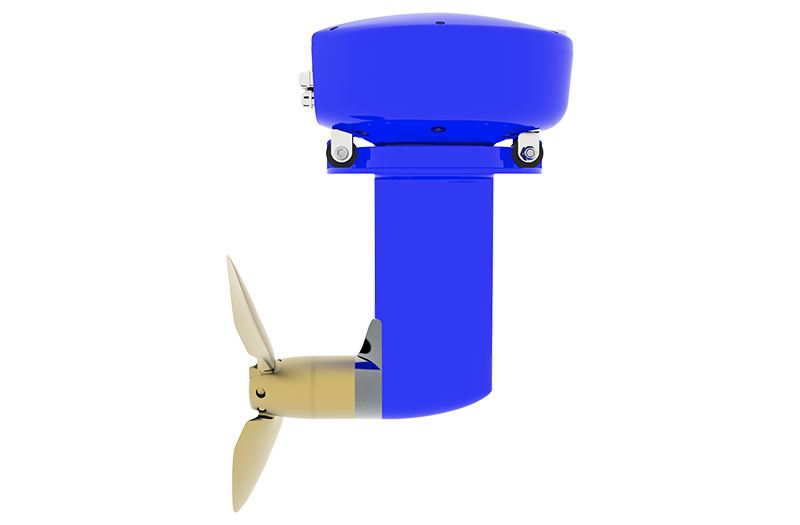
- Synchronous permanent magnet electric motor.
- Sail Drive with 1.93:1 reduction.
- Lightweight: weighs as little as 42.5kg (motor & sail drive).
- The only complete electric inboard propulsion system with
- EMC certified closed circulation liquid cooling providing both cooling and lubrication.
- Functions as a hydro generator to generate power while under sail.
system installation layout (example)
- Nominal Power
- Reduction Ratio
- Motor weight
Oceanvolt servoprop
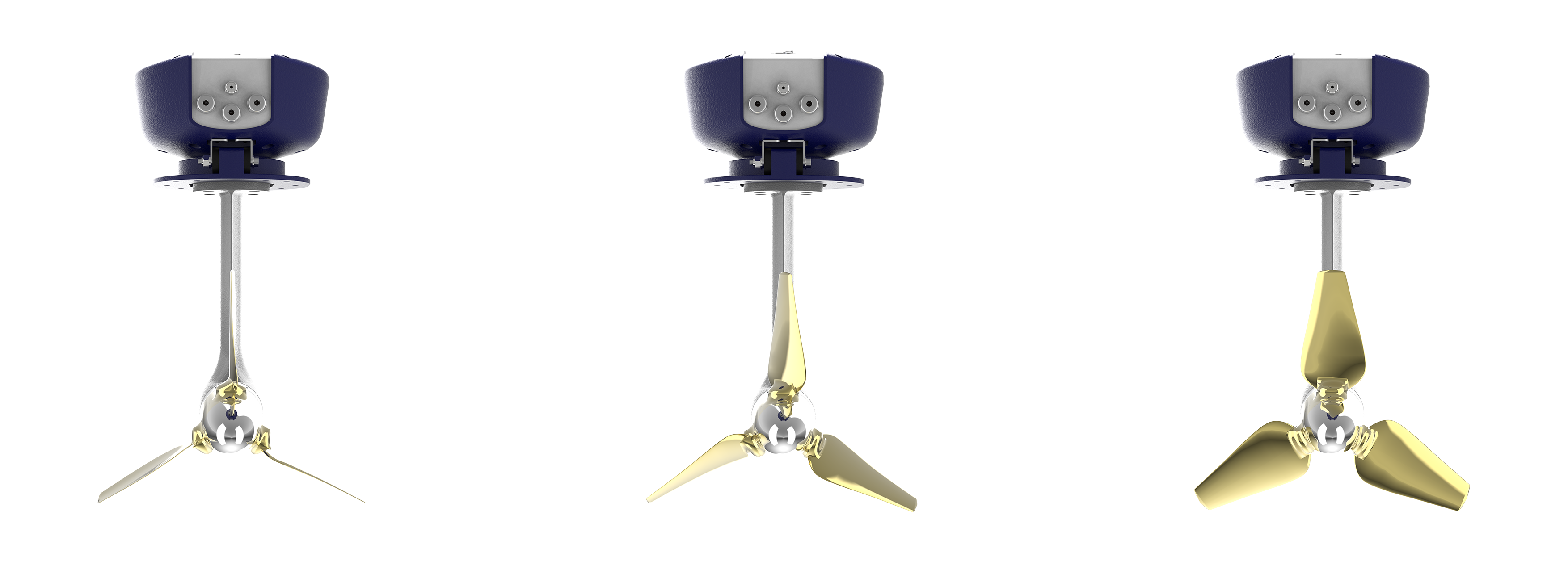
The patented Oceanvolt ServoProp variable pitch sail drive combines a high efficiency sail drive with the most powerful hydro generator on the market. The unique feature of the ServoProp is the possibility to turn the propeller blades more than 180 degrees. The software controlled variable pitch sail drive adjusts the pitch of the propeller blades automatically so that the power generation and power output are optimal. Combined with uniquely designed blades it delivers optimal efficiency in both forward, reverse and hydro generation. And with the blades set to the neutral sailing position, the propeller creates extremely low drag similar to the drag of a feathering propeller. The benefits of ServoProp include an estimated +30% increase in forward propulsion, +100% in reverse and +300% increase in hydro generation effect.
A normal fixed propeller (that by nature does not have the blades ideally shaped for regeneration) generates less than half the power of ServoProp at a given boat speed. ServoProp is capable of generating more than 1 kW at 6-8 knots. The power generated can be used to power both the propulsion system as well as all the electronics on board without the need to have a separate generator. With this in mind we can definitely start talking about the possibility of a totally self-sufficient cruiser!
The ServoProp is suitable as a propulsion motor for monohulls up to 50 ft & multihulls up to 60 ft. It can also be used as a hydro generator in boats up to 100 ft.
Collection: Products
Filter products.
- In stock 86
- Out of stock 432
465 Products

Abrazo Outrider Electric Bicycle E-Bike
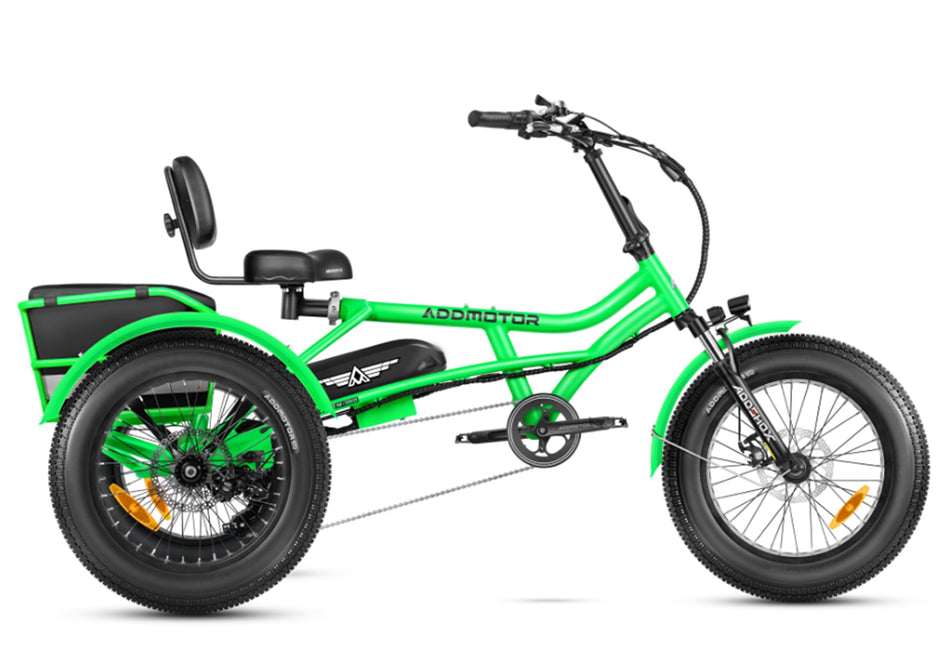
Addmotor Arisetan II M-360 2024

Addmotor Chopptan M-70 Retro Ebike
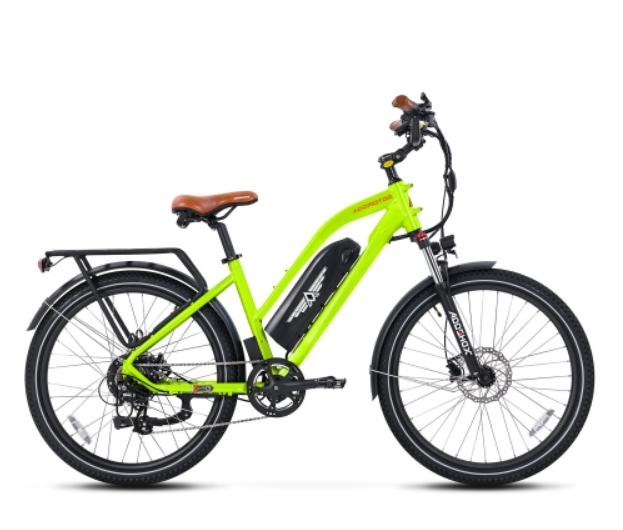
Addmotor Citypro E-43
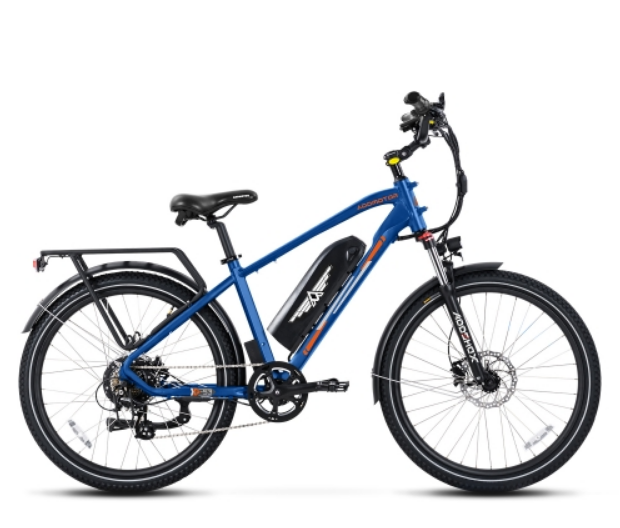
Addmotor Citypro E-53
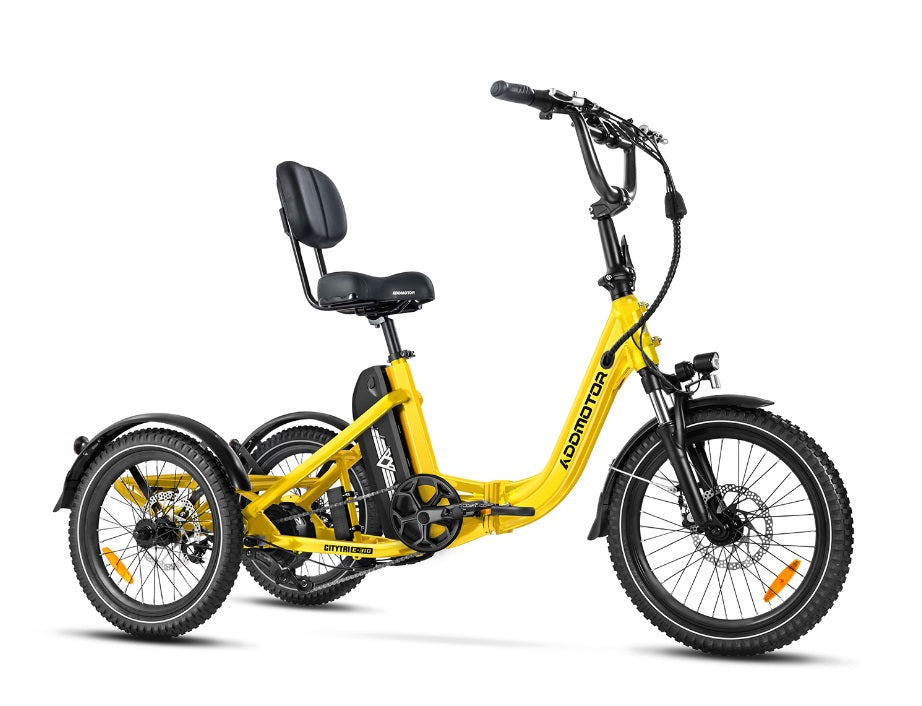
Addmotor Citytri E-310
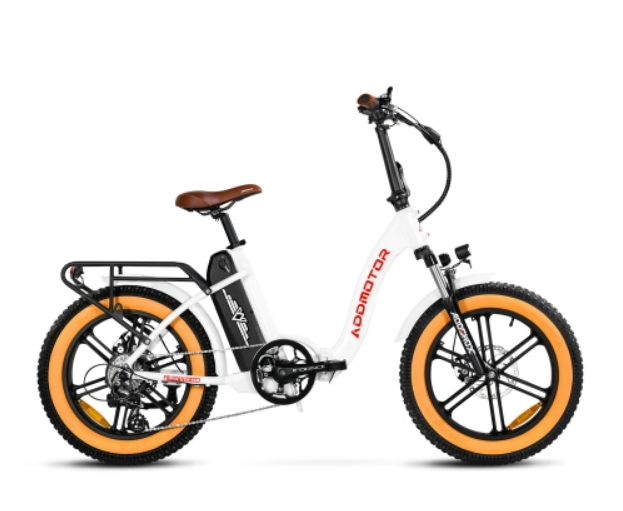
Addmotor Foldtan M-140
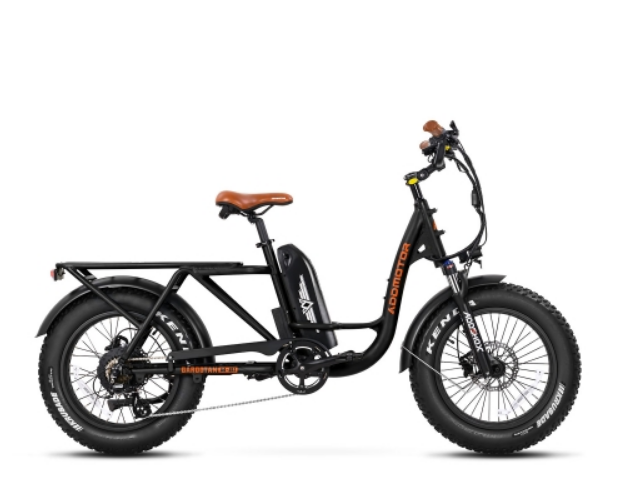
Addmotor Garootan M-81

Addmotor Grandtan II 2024
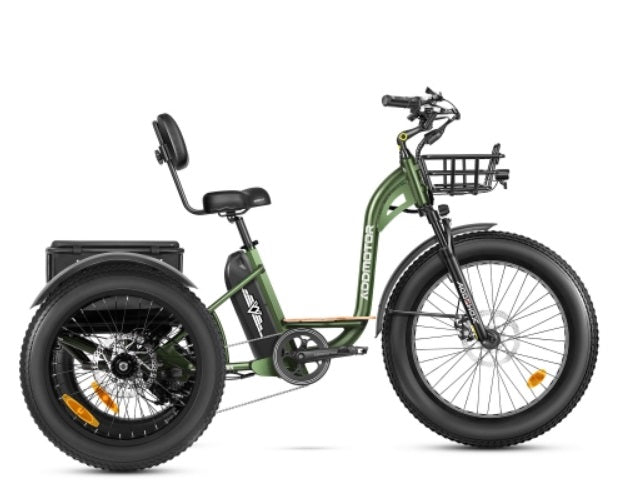
Addmotor Grandtan Plus II 2024

Addmotor Grandtan Turbo

Addmotor GRAOOPRO

Addmotor Greattan

Addmotor Greattan L
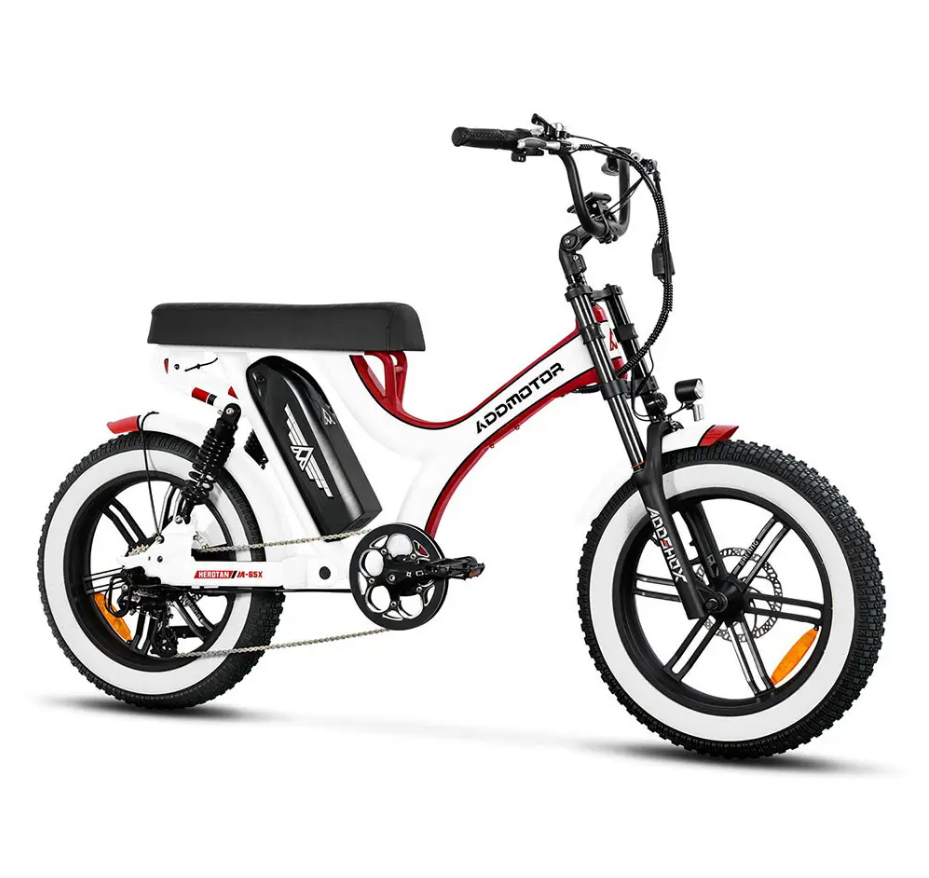
Addmotor Herotan M-65X
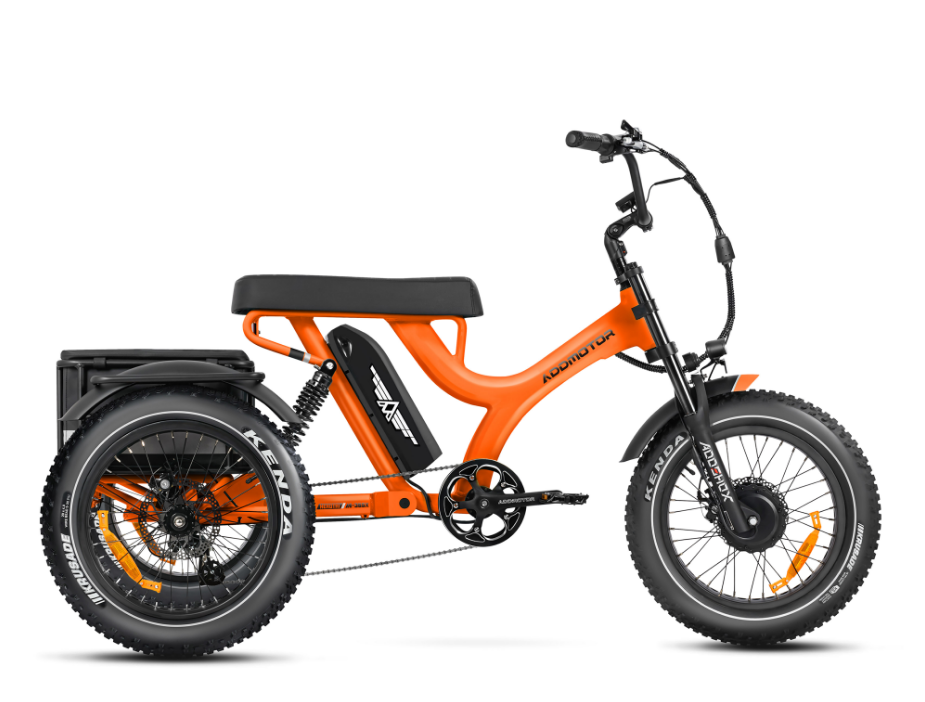
Addmotor Herotri M-365X Beach Cruiser Trike
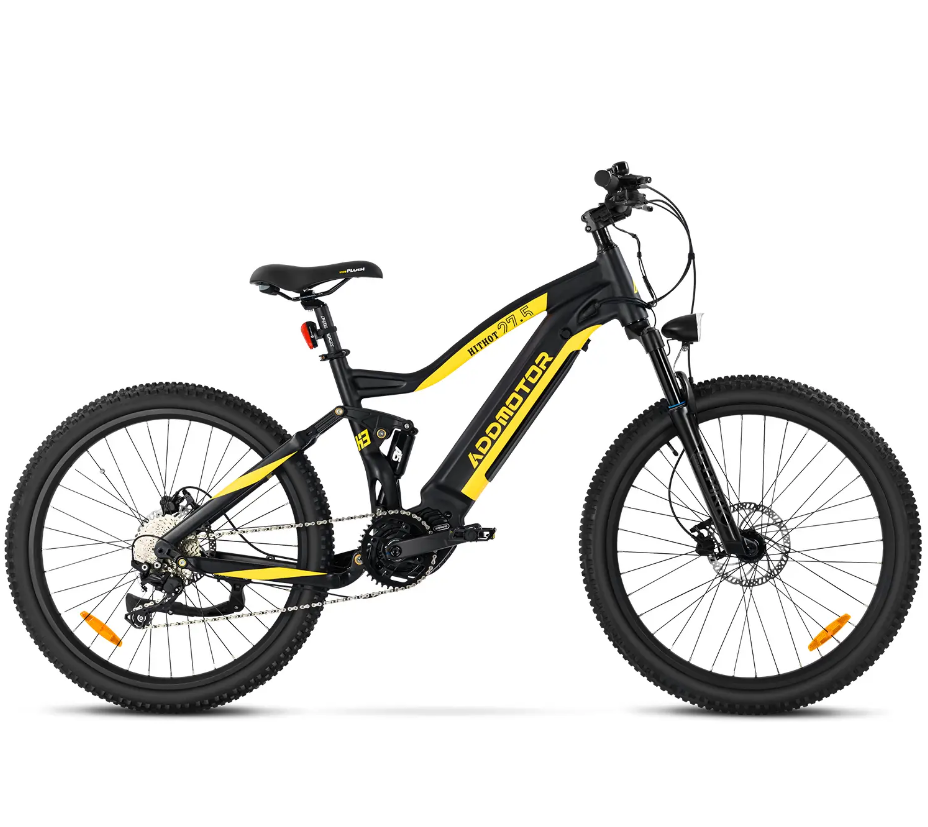
Addmotor Hithot H3
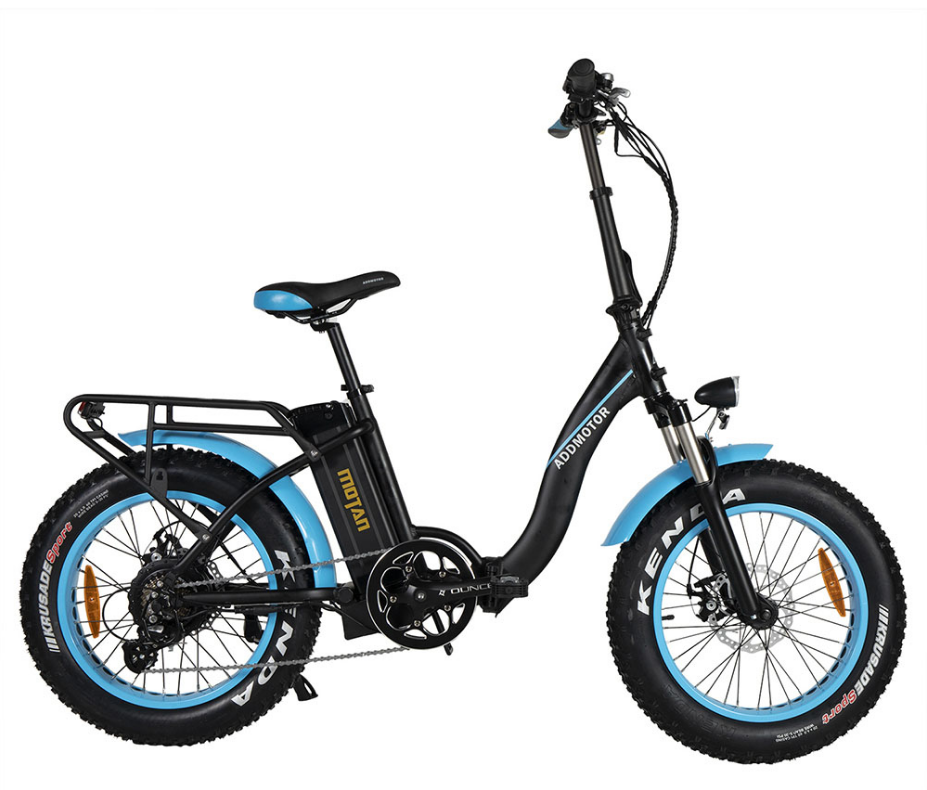
Addmotor M-140 P7

Addmotor M-560 P7 All Terrain
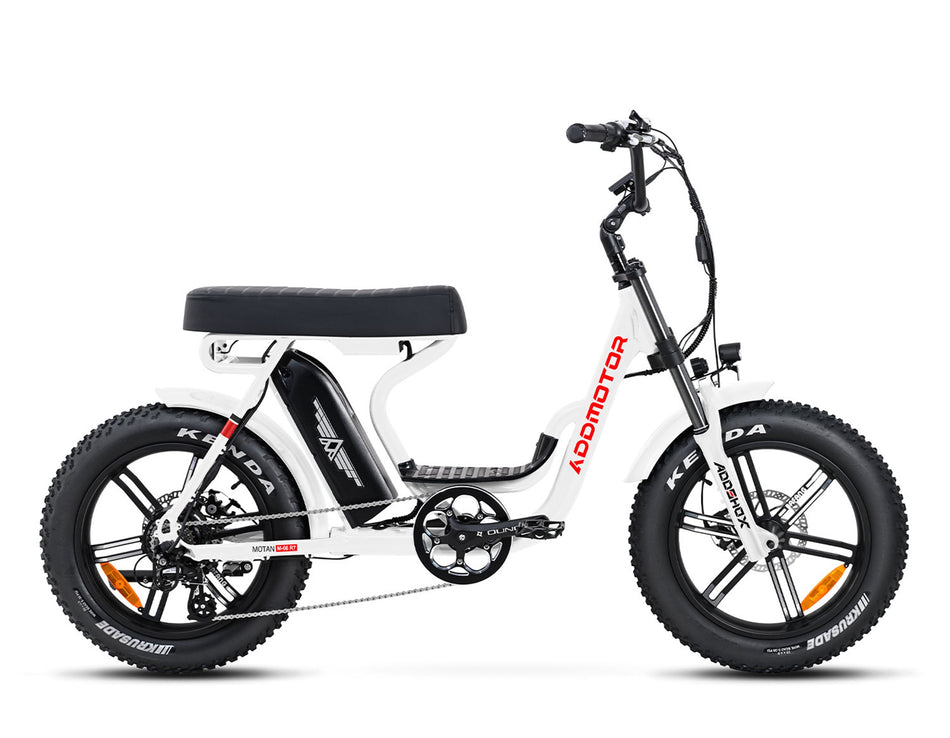
Addmotor M-66 R7 Cruiser E-Bike
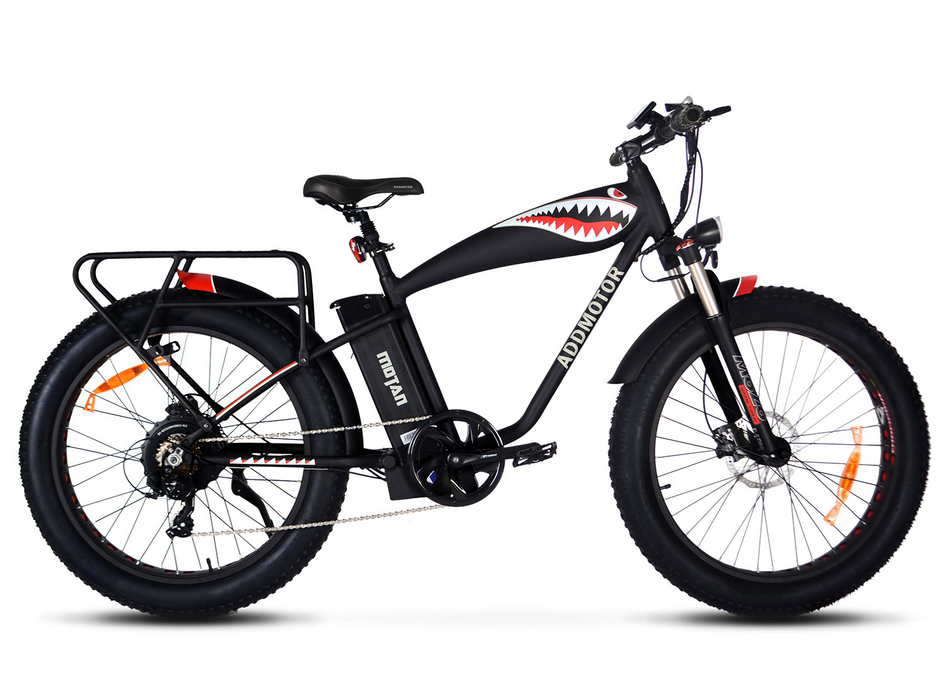
Addmotor MOTAN M-5500 All-Terrain
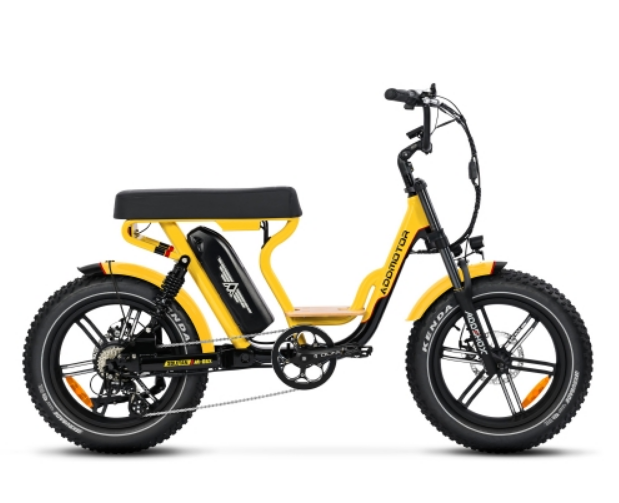
Addmotor Soletan M-66X
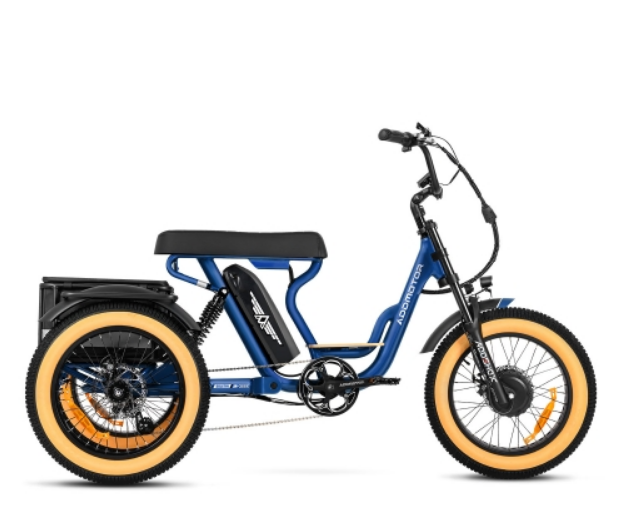
Addmotor Soletri M-366X Electric Trike

Addmotor Spytan
Do water and electricity mix? Rhode Island company bets that formula is the future of boating.

On a recent Friday morning, I hopped into my electric car in the driveway, drove to a marina in Salem, and boarded a 21-foot powerboat that — like my car — had been charging overnight.
As we put the House of Seven Gables behind us, we could barely hear the electric outboard motor attached to the boat’s rear end. Even after speeding up to 25 miles per hour, we could carry on a conversation at a normal volume.
Is this the future of boating?
While electric car sales have begun to take off — more than 1 million were sold in the US last year, according to Kelley Blue Book — marinas are still full of gas guzzlers.
And gas can be a big part of the expense of owning a boat. Matt Perry, a cabin cruiser owner who was watching us take the electric-powered boat for a test ride, said he might spend $300 on fuel over the course of a weekend on the water.
Flux Marine, based in Bristol, R.I., hopes to change that. Founded in 2018, it has raised nearly $16 million , but has sold only a handful of motors. The company’s new strategy is to pair its outboard with new boats made by Scout or Highfield, Flux’s first two partners. Flux was showing off one such boat last month at a sailing regatta in Marblehead and plans to exhibit at the Newport Boat Show in September.
Advertisement
Electric motors have made a small splash in the boating world, but they’re mainly used to power dinghies that take boaters from a mooring or anchorage to shore, or small sailboats that need to be under power only for a short stretch. They rely on a portable battery that you can remove from the boat, and charge at home.
Still, they’re about five times more expensive than a gasoline-powered outboard. When I counted dinghies in part of the Salem marina, 17 had motors. Of those, four were electric.
But the Flux-powered boat, at 21 feet long, was the only large electric boat I could find in the marina. Boatbuilders such as Candela in Sweden and Navier in California have been designing new, fully electric boats, and others such as the engine suppliers Yamaha, Mercury, and Evoy are working on electric outboards similar to Flux’s.
Elco, based in Lake George, N.Y., has made electric boats since 1893 — when one big customer was the Chicago World’s Columbian Exposition — and has sold electric outboards since 2009.
So, Flux will not be the only supplier in the market by a long shot. But cofounder Daylin Frantin says the company is aiming for a sweet spot of enough power, speed, range, and charge time — at the right price.
The entire motor is sealed so saltwater doesn’t corrode the components. Instead of a fuel tank, the company’s boat-making partners leave an empty space where an 84-kilowatt-hour lithium-ion battery pack gets installed. (By comparison, a base-level Tesla Model 3 sedan, with a range of about 270 miles, comes with a 57-kilowatt battery pack.)
The company has 50 employees; a 2022 package of tax incentives from the state of Rhode Island set a target of 80 new employees by the end of 2024. Frantin said he feels good about hitting that number.
Electric boating has some advantages that could help it win over customers more quickly than electric vehicles. First, so-called shore power outlets already installed at most marinas can be used to charge batteries at a much lower cost than gassing up.

Second, electric motors produce much less noise and vibration — not to mention exhaust fumes, which is a real plus if you’re riding on an inner tube or water skis behind one. Third, maintenance costs may be lower over time because electric motors have fewer moving parts and don’t require oil.
The factors that could slow adoption include the same “range anxiety” that afflicts EV drivers: Will I have enough charge to go where I want, and come back? Some boaters will wait to see if the promised benefits prove out, and if the technology is reliable.
On my test ride in Salem, I kept an eye on the digital display in the boat’s cockpit that showed battery range. As we got ready to head out, sales manager Matt Murphy of Flux told me the range was between 30 and 75 miles, “depending on the number of passengers and how fast you’re going.” But once the boat got up to about 20 miles per hour — a brisk clip in a small boat like the Scout, but not blazingly fast — I watched the range dip to 19 miles (with the batteries at 94 percent full, and three people aboard).
Companies trying to electrify pleasure boating will be tested by strong currents, starting with customer demand. Lyle Butts of Bay Sails Marine in Wellfleet says he has rented out boats with electric motors for nearly 20 years, including a small electric-powered catamaran (without sails). But, Butts said, “I don’t get customers asking” for electric motors.
Another obstacle to adoption is physics: It’s much easier to power a car along a highway than it is to push a boat through water, said Larry Russo Jr., regional president at the boat dealer MarineMax. That means that boats use far more electricity to go a mile — and need more on-board battery storage — than a car.
Finally, there’s the price tag. The Scout powerboat I rode on sells for $120,000 with the Flux electric motor; a similarly equipped model with a Mercury 150-horsepower gas-powered motor costs $90,000. That’s a big difference.
As a result, Russo said, the transition in recreational boating from gas to electric is going to take a while.
“There will be a few early adopters who can afford it and think it’s cool,” Russo said. “But others will think, ‘If I’m going to spend that much more money, why don’t I just get a bigger boat?’”

Scott Kirsner can be reached at [email protected] . Follow him @ScottKirsner .

Services Offered
Verified by Business
Virtual Consultations
Review Highlights

“ When I was uncertain about my decision to purchase one on the spot, Doug , the owner, didn't place pressure. ” in 29 reviews

“ When I'm in the market for another electric bike I'll definitely be going back because of this experience. ” in 19 reviews

“ After Nate did all the assembly (racks, fenders, lights, etc), I returned the next day to pick it up. ” in 17 reviews
Location & Hours
Suggest an edit
2332 El Camino Real
Santa Clara, CA 95050
Serving Santa Clara Area
| Closed now | |
You Might Also Consider

360 Fitness Superstore - Menlo Park
Masha H. said "My husband and I went to this place a few weeks ago to look for an elliptical. We didn't realize that we were supposed to have an appointment (due to COVID protocols) but Alex was very kind and helped us anyway! He spent time with…" read more
in Flooring, Appliances & Repair, Fitness/exercise Equipment

Bike Connection
11.3 miles away from ELV Motors
Ishaan M. said "I give it 5 stars, but I see why the place has gotten such polarizing reviews. I went into the place looking to get my first ever road bike, knowing absolutely nothing about them. When I walked in, I was served by a pretty…" read more
in Bikes, Bike Rentals, Bike Repair/maintenance
Amenities and More
5 More Attributes
About the Business
Business owner information
Business Owner
We sell high quality electric bikes from the best manufacturers across the globe. Our Silicon Valley store carries the largest selection of electric bicycles in Northern California and we're sure to have exactly what you're looking for. Come in for a test ride and find a bike that's right for you. Our bikes go from 15-30 mph and can go up to 110 miles on a single charge! Whether you're looking to beat traffic or just have some fun, an electric bike is what you're looking for. They're perfect for commuting in the city or college campus. And for those of you who are already biking, our bikes go way faster with the same amount of effort. Or just push the throttle, and avoid the sweat. Visit us today and experience the future of urban transportation. Happy Holidays! …
Ask the Community
Ask a question
Got a question about ELV Motors ? Ask the Yelp community!
People also searched for
Ebike Repair
Motorcycle Repair
Used Bicycles
Bike Sharing
Specialized Bike Shop
Electric Scooter Rental
Recommended Reviews
- 1 star rating Not good
- 2 star rating Could’ve been better
- 3 star rating OK
- 4 star rating Good
- 5 star rating Great
Select your rating
Overall rating
109 reviews
Excellent place to buy an electric bike. Knowledgeable about multiple brands and all the features. Even the ones recommended online that disappear overnight. They work hard to hear what you want and ask about what you plan to do so they can get you a good fit. Building may not impress from the outside but I want buying a building.

**Update to My Previous Review on ELV Motors:** Three months after my initial review, the owner of ELV Motors responded, and I feel it's crucial to address and correct a few points he made. Firstly, the owner described the Velotric Discovery One e-bike involved in my warranty repair as a "low-cost" option, which is far from accurate. The Discovery One is a premium model, and the issues I faced were unrelated to its care or storageand the bike was not stored outdoors. Upon bringing in the bike, I noticed the steer tube was off-center--a simple fix that would have taken minimal effort. Unfortunately, they didn't take the time to inspect the bike, clearly did not test ride it. A simple Allen wrench to loosen and straighten the neck stem, a task that would literally take seconds. Regarding the repair costs, I was quoted $100 for a bicycle chain replacement, a price that seems exorbitant by any standard. This quote was significantly higher than what the original manufacturer, Velotric charges for the same part. Moreover, the labor costs were inflated, quoting three hours for what is commonly a 15-minute job. The owner's delayed response, three months after my original review, speaks volumes about the company's approach to customer service. It's disheartening to see a business overcharge customers, particularly those who might be less experienced with e-bikes. The claim that my bike's chain needed replacement was unfounded; it merely required lubrication. Furthermore, the quoted price for a new chain was astronomically high compared to the actual cost of a $15 part. The assertion that my bike's brakes needed replacing was also incorrect; the brake pads were brand new. This discrepancy in the assessment of my bike's condition and the proposed repair costs raises serious concerns about transparency and fairness. I also want to mention that there are several e-bike mechanics in the South Bay Area who provide honest, quality work at reasonable prices. My advice is to consider other options for e-bike service and repairs. If you're looking for alternatives, a simple Yelp search will reveal many reputable professionals in the area who are known for their quality work and fair pricing. I hope this update provides a clearer picture of my experience and underscores the need for honest and reasonable service practices in the e-bike industry. Do not do business with these people

See all photos from Rick E. for ELV Motors
Apr 8, 2024
Rick, Sorry you are not happy with the response I sent. As I mentioned your low-cost bike was left out in the rain, and parts needed to be replaced. I am glad that you were able to find someone to work with the parts you had, but if the job was to be done correctly, the quote that was sent to you was what was required.
Title: Beware of Unethical Practices at ELV Motors I recently had a disappointing experience with ELV Motors that I feel compelled to share. After bringing my bike to them for warranty work, they attempted to exploit the situation by quoting me an exorbitant $240 for brakes and a chain replacement. Upon investigating, I discovered that the manufacturer's website listed brake pads for $19, while ELV Motors wanted to charge me $70 for the same pair. Their labor rates were equally baffling, claiming one hour of labor for a 20-minute brake pad installation and charging $45 for a half-hour chain replacement. Moreover, the supposed wear on my brake pads and chain turned out to be exaggerated. The brake pads were only 30% worn, far from needing replacement, and the chain merely had surface rust easily remedied with cleaner. When confronted, the owner attempted to justify the unjustifiable, citing fluctuating prices akin to auto repair shops. However, my research revealed that reputable bike shops in the area charged significantly less, with the highest quote being $60 for the same services. This blatant overcharging and unnecessary replacement of parts showcase ELV Motors' unethical business practices. I urge potential customers to think twice before trusting them with their bike repairs. I will be reporting this to the Better Business Bureau, and consider this a cautionary tale for those seeking honest and fair service in the local bike community.
Highly attentive staff. I came in with a bike I had built (ride1up) having never done that before and they made the professional adjustments I couldn't. Absolutely recommend!
Aug 12, 2024
Luka, Thank you for your positive review, We try to offer the best service for all of our customers

The staff at ELV is extremely helpful and prices are great. I have a RAD mini and frequent store for parts and service.
I have an early model Surface 604 ROOK ebike that I had taken to ELV for electrical control panel wire repair. They are the only authorized dealer and repair in the Bay Area. Most other local shops would not touch my eBike unless it was to fix a flat tire. ELV had the bike for a month conversing with the manufacturer to get first-generation spare parts. I had to be upgraded and rewired to the second-generation control panel and screen for it to work properly. This was my first experience with ebike-authorized dealer maintenance. There was an initial diagnostic fee with subsequent parts ordering and installation for a 2017 motorized bike. I had to weigh that against the cost of a newer model/less expensive ebike. Like any motorized vehicle, if one can do the work yourself, then one can save money. Previously, I had added Tannus tire linings to improve rideability and prevent flats. I purchased and repacked the battery. Owning an ebike takes $$. In the end, I believe ELV assisted me and gave me a $ break on the fix and I am grateful for that. I was tempted to throw in the towel and think about a newer ebike. I don't want electrical-driven items to become disposable because it's cheaper to buy a newer item. The first-generation Surface 604 is a great cruiser and I look forward to many more years of use.

Recently purchased an electric scooter (not from ELV) but needed some work done on it due to shipping damage. Soon as you walk in, all the guys were super friendly and greeted you right away. Told the tech what was going on with my scooter and right away he knew what to do. He told me it would be at least a week but offered a front of the line pricing at additional cost. Wasn't too bad so I opted to get it done right away. Before the day ended, the tech called and told me it was all fixed! Super quick and friendly service. Most definitely recommend these guys! Thank you!

If I could give more than five stars I would. Edgar and the entire team at ELV motors are amazing. I found them because I wanted to test out a certain brand of class 1 PAS ebike and their store had them. I went in and spent time talking with Edgar about my riding goals and he immediately directed me to a different bike, explained why the other one better met my goals. I was able to take it out on a test ride and fell in love with it. I've since been back and ordered my husbands new bike (he got the same brand, newer model) and also rented e-bikes from them when my parents visited. Just yesterday I brought my bike in because it was making a strange noise and they threw it up on the lift and resolved the issue. They really know their stuff when it comes to e-bikes (all classes).

Where do I even start ? I have been coming to ELV motors for a while now and must say their service has always been 100% each visit I've had. I bought a scooter from another company which was a wolf king GT I needed help with tires and they got it done in no time they installed new brakes and the parts I asked. They also did an of my PEV and noticed some bolts were loose and did me the favor of retightening everything heck even charged my scooter for me!! so I was able to ride it home upon pickup. They even offered to help me sell my scooter in their store unfortunately I did sell my wolf king GT that they put a lot of hard work into but Im currently riding a Sur Ron light bee and they just started working on these types of racing e-bikes so I'm already planning a day and time to bring it in for a tune up and some new e moto t ELV motors we'll be my go to store in the southbay for a long time and I will continue to be a loyal customer

I needed few screws to finish assembly of my electric bike. I called then went to ELV Motors & Kevin helped me out!!! I didn't buy my bike there, but I wish I did! Whatever my needs are going forward, this is my store now & I recommend it to you!!!!

I was trying to stay within a budget on a new e-MTB, the Bulls Evo AM 4. I was soliciting quotes online which I know takes away valuable time from the vendor, but Douglas at Elv Motors took the time to promptly respond to my inquiries and provided helpful information. In the end my budget prevented us from concluding a sale, so close!, but I was very pleased with the service provided. Still searching for a bike within my price range and will provide a full recap on my YouTube channel once purchased.
10 other reviews that are not currently recommended
Other Bikes Nearby

Summit Bicycles
11.1 miles away from ELV Motors
E M. said "Called to see if they would do a chain ring switch and show me how to do it in the future. They say sure, come on in. 1/2 hour later I was there watching them change my chain ring and showing me how (quite easy if you have the right…" read more
in Bike Repair/maintenance, Bikes, Sports Wear

Vintage Electric Bikes
1.5 miles away from ELV Motors
Experience the thrill of unbeatable speed and timeless design with our vintage electric bikes! Crafted to defy planned obsolescence, our bikes offer exhilarating speeds up to 36 MPH. Engineered for performance and built to last, our… read more
Browse Nearby
Things to Do
Restaurants
Bicycle Shop
Sporting Goods
Whale Watching
Other Places Nearby
Find more Bike Repair/Maintenance near ELV Motors
Find more Bikes near ELV Motors
Service Offerings in Santa Clara
People found elv motors by searching for….
Bicycle Shop Santa Clara
Bike Fitting Santa Clara
E Scooters Santa Clara
Ebike Shop Santa Clara
Electric Bike Rental Santa Clara
Electric Bike Repair Santa Clara
Electric Bike Shop Santa Clara
Electric Bikes Santa Clara
Electric Scooter Rental Santa Clara
Electric Scooter Repair Santa Clara
Electric Scooters Santa Clara
Mobile Bike Repair Santa Clara
Related Cost Guides
Child Care & Day Care
Data Recovery
Furniture Repair
Generator Installation/Repair
Sandblasting
Self Storage
People Also Viewed

Upshift Cycles

Trail Head Cyclery

Wheel Away Cycle Center

Bicycle Express

Big Al’s Mobile Bike Repair

The Off Ramp

Mike’s Bikes of San Jose

Walt’s Cycle

The Bike Doctor

IMAGES
COMMENTS
Find deals and low prices on electric boat engines at Amazon.com. Free shipping on qualified orders. Free, easy returns on millions of items.
Cheoy Lee Clipper on Lake Superior. Jan 2, 2023. Sailing with an Electric Motor In 2021 we installed the QuietTorque™ 10.0 Electric Motor by Electric Yacht on our 1972 Cheoy Lee Clipper Sailboat, which we use for day charters from May through October on Lake Superior. We have been extremely satisfied with the...
Learn how to choose and install an electric sailboat motor for your boat. Compare the range, weight, cost and performance of different electric sailboat motors and batteries.
Electric motors achieve instant torque with Electromotive Force while internal combustion engines need to build RPMs gradually by increasing piston firing frequency. Hydro Generation At sailing speeds over 6 knots Oceanvolt systems are able to generate significant power for recharging the battery bank by activating at the touch of a button.
Whether quietly maneuvering through a harbor or motor-sailing on low-wind days to create your own apparent wind, our electric solutions will enhance and extend your sailing enjoyment. Oceanvolt offers Hybrid or Electric systems as a power & propulsion option in partnership with many leading monohull boat builders - adding new partners continuously.
Powerflow Marine provides electric propulsion systems, batteries, and accessories for displacement boats. Whether you're just starting in your sailing journey or you're a seasoned sailor, we have designed our electric motor systems so that you can start sailing smarter, quieter, and cleaner.
Elco (Elco Motor Yachts) is the oldest electric boat motor company in the world, having been started in 1893 as the the Electric Launch Company to supply electric boats for the Chicago World's Fair. It offers a full range of outboards, inboards and hybrids. Their Plug n Play system has all wiring and active power components in a marine grade ...
Electric Boat Motors Are Far More Efficient Than Gas or Diesel. When it comes to efficiency, electric boat motors outshine their gas and diesel counterparts by a wide margin. Electric motors convert electrical energy into mechanical energy with an efficiency rate of up to 90 percent, significantly higher than the approximately 25 percent ...
The Oceanvolt platform is designed and installed to become the complete power solution for the entire boat - including the 12V (or 24V) service power system as well as all other appliances/other comfort equipment (110/220V outlets). ... "Rapido 40 #07 "NullEins" with its all-electric Oceanvolt motor - and helm wheel - is going through its final ...
The QuietTorque™ 10.0 Sport is a cost effective 10kW electric propulsion system designed for the day sailing and coastal cruising sailboats up to 35' (LOA) and 12,000 lbs displacement. Typically programmed and sized to push boat at cruising or harbor speed. Motors normally ship within 5 business days.
The QuietTorque™ 20.0 provides 48Vdc electric propulsion with high sustained output and is ideal for cruisers and day sailors alike. Typically, the QuietTorque™ 20.0 would replace a 25 to 40hp diesel engine.By using dual PMAC (Permanent Magnet AC) motors, Electric Yacht can produce this powerful, compact, Plug-n-Play, light weight, air cooled system and stay within the safe low voltage ...
This was the first electric propulsion system—not hybrid but all-electric—I'd ever seen on a cruising sailboat. Electric propulsion isn't new. Since 1879, electric motors have propelled boats; a fleet of some four-dozen electric launches transported visitors around the 1893 Colombian Exposition in Chicago.
In 1934, Minn Kota manufactured the first electric outboard. Then, in the 1960s, bass tournament fishing popularized big-horsepower gas engines for speed, and electric trolling motors for precise boat handling. You might say the fishermen were ahead of the curve by about 60 years on hybrid boats.
This summer, the world of competitive sailing is set to witness a historic moment as the Dutch sailing organization introduces their first-ever emission-free, hydrogen-powered coach boat, equipped with a Torqeedo Deep Blue electric motor. Learn why this is a pivotal moment in the effort to protect our climate and local air quality. READ MORE
35 feet 7.9 knots (9.1mph) With an electric outboard motor, or any kind of auxiliary motor, boat speed depends on the hull type, waterline length, and total displacement weight (including passengers, food, and baggage), as well as the motor thrust. Speed factors also include the waves, current, and wind, relative to your heading.
Sailboat Kits & Accessories. Supporting Electric Marine Conversions Since 2007. When we're not at the race track you may find us out on the water! Convert your sailboat to a clean, quiet electric drive! Eliminate noxious diesel fumes and the cost of filling up at the pump. Enjoy your sailboat to the fullest, with a quiet drive and truly fresh ...
Boating Made Effortless. An Avator electric outboard is designed to let anyone take the helm with confidence. Intuitive tiller or remote controls are comfortable, responsive and easy to use, putting boating freedom in your hands. And with its near-zero-maintenance design, it's ready to go when you are.
Evoy®, founded in 2018, is based in Florø, Norway and delivers long-lasting inboard and outboard Electric Boat Motor systems ranging from 120-400 hp continuous power. Evoy® has 50 employees from 13 different countries and has sales to 20 different countries.
Avator 35e Outboard with Two 2300Wh Batteries 20% Longer Runtime*. Electric Outboard Competitor A with One 5000Wh Battery. *Runtimes vary based on boat, load, environmental conditions, battery level and more. Runtime and efficiency figures are based on Mercury internal testing using a 12-foot Lund WC-12 boat starting with fully charged batteries.
Current battery technology may not match the energy density of fossil fuels, but electric motors are remarkably efficient. They convert nearly 90% of electrical energy into mechanical energy. ... quiet, efficient and low-maintenance. These benefits make electric boats an appealing choice for eco-conscious and technology-savvy boating ...
48 Volt Electric Boat Motors [/fusion_text][fusion_woo_shortcodes] QuietTorque™ 10.0 Electric Motor $ 4,995.00; QuietTorque™ 5.0DD Electric Motor $ 5,495.00; QuietTorque™ 20.0 Electric Motor $ 9,995.00; QuietTorque™ 15.0 LC Electric Motor $ 9,995.00; QuietTorque™ 30.0 LC Electric Motor
LAS VEGAS — And now something from sister site Aquablog (kidding), Mercury Marine is showing off electric boat motors at CES. Its 7.5e is already available, but new are the 20e, 35e, 75e and ...
OCEANVOLT sail drive motors Oceanvolt offers a range of sail drive motors to provide propulsion and hydro generation for vessels ranging from 15 to 80 feet. Sail Drive (SD) Synchronous permanent magnet electric motor. Sail Drive with 1.93:1 reduction. Lightweight: weighs as little as 42.5kg (motor & sail drive). The only complete electric inboard propulsion system with EMC certified closed ...
857-389-9893. The WattZilla family of electric vehicle chargers are designed, engineered and built to be the first, last and only electric vehicle charger you'll ever buy. Constructed in the USA with the highest quality components from around the globe. WattZilla can charge any electric vehicle sold in the US or Canada that use the industry ...
ELV Motors is a top electric bike dealer in Santa Clara, San Jose, Silicon Valley areas that also caters to Northern California, U.S. Skip to the content. STORE HOURS - Mon-Fri: 10:30am to 6:30pm SAT: 10:30am to 5:30pm SUN: 11am to 5pm - Contact us! | Phone: 888.612.9883 | Email: [email protected]
ELV Motors is a top electric bike dealer in Santa Clara, San Jose, Silicon Valley areas that also caters to Northern California, U.S. Skip to the content. STORE HOURS - Mon-Fri: 10:30am to 6:30pm SAT: 10:30am to 5:30pm SUN: 11am to 5pm - Contact us! | Phone: 888.612.9883 | Email: [email protected]
Lyle Butts of Bay Sails Marine in Wellfleet says he has rented out boats with electric motors for nearly 20 years, including a small electric-powered catamaran (without sails). But, Butts said ...
Specialties: We sell high quality electric bikes from the best manufacturers across the globe. Our Silicon Valley store carries the largest selection of electric bicycles in Northern California and we're sure to have exactly what you're looking for. Come in for a test ride and find a bike that's right for you. Our bikes go from 15-30 mph and can go up to 110 miles on a single charge! Whether ...